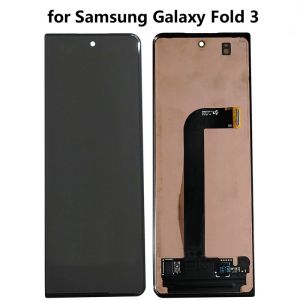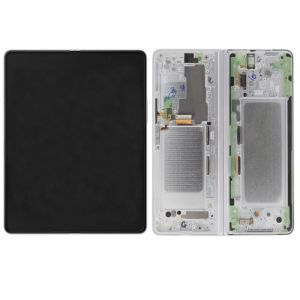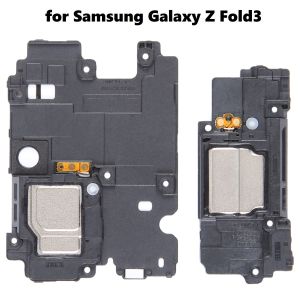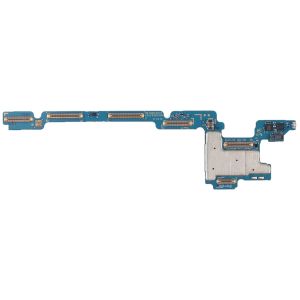Folding screen cell phone is the latest product form in the smartphone market in recent years, through the flexible OLED screen with folding hinge structure design, in the current state of the single-screen screen ratio has reached the limit, providing users with a larger display screen, thus bringing a richer application experience and more possibilities; at the same time, compared to large-screen flat products, foldable design to meet the portability of daily use.
SAMSUNG Samsung Galaxy Z Fold3 5G folding screen phone is the third generation of Samsung folding screen products, in technology has been relatively mature, through the use of enhanced Samsung ultra-thin flexible glass (UTG) made of AMOLED full-screen, precision hinge structure and magnetic circuit design, to achieve stable fixed and arbitrary angle of the spin stop. Among them, the magnetic circuit design uses rare earth permanent magnet magnets with stronger and controllable magnetic force, which provides a very delicate and comfortable feel for opening and closing the folding screen phone.
Recently, vopmart.com for product testing SAMSUNG Samsung Galaxy Z Fold3 5G folding screen phone came to the last moment of "life", in order to let it shine again, I love the audio network's first folding screen phone [disassembly report] was born, the following to see the product's Internal structure design and hardware configuration it ~
A, Samsung Galaxy Z Fold3 folding screen phone appearance design
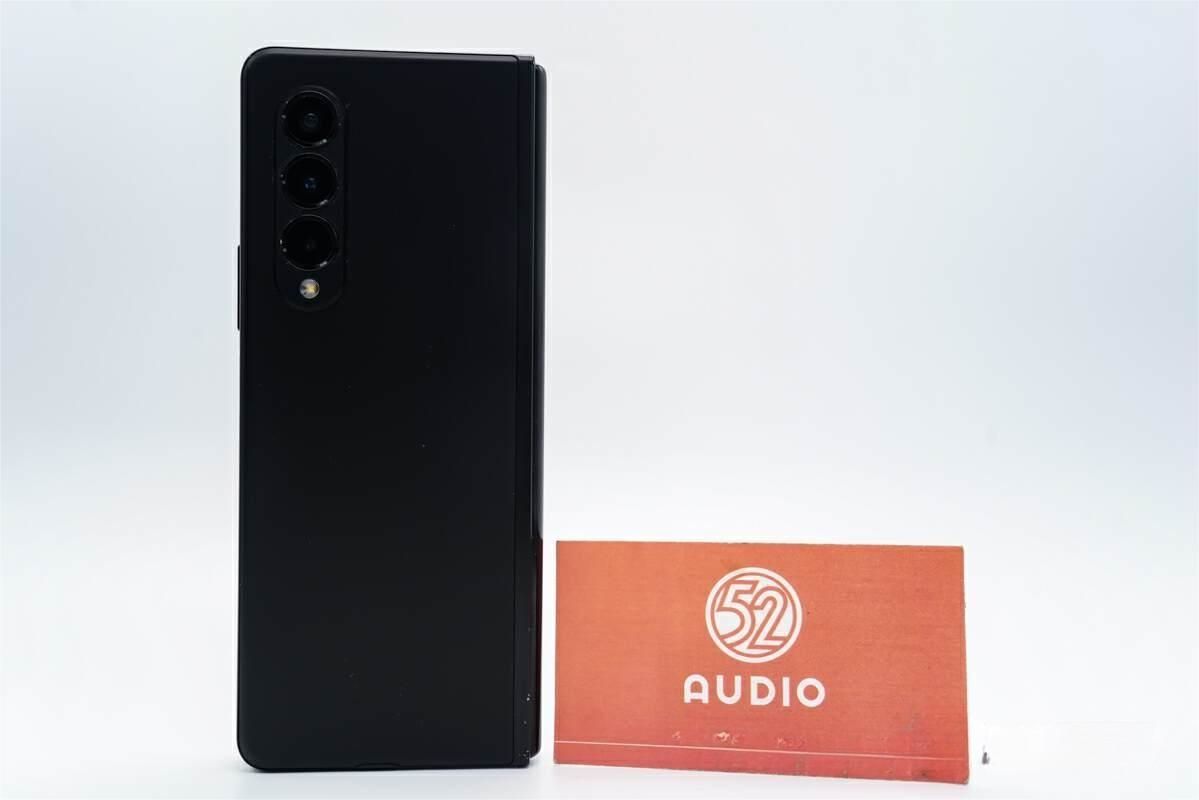
Samsung Galaxy Z Fold3 5G folding screen phone was released on August 11, 2021, with a dual-screen design inside and outside, Corning Gorilla Victus glass and Armor aluminum alloy center frame, with an excellent texture. In terms of performance, the most powerful Qualcomm Snapdragon 888 + LPDDR5 + UFS3.1 combination was used at the time, with five cameras inside and outside, and the inner screen was equipped with an under-screen camera solution for the first time.
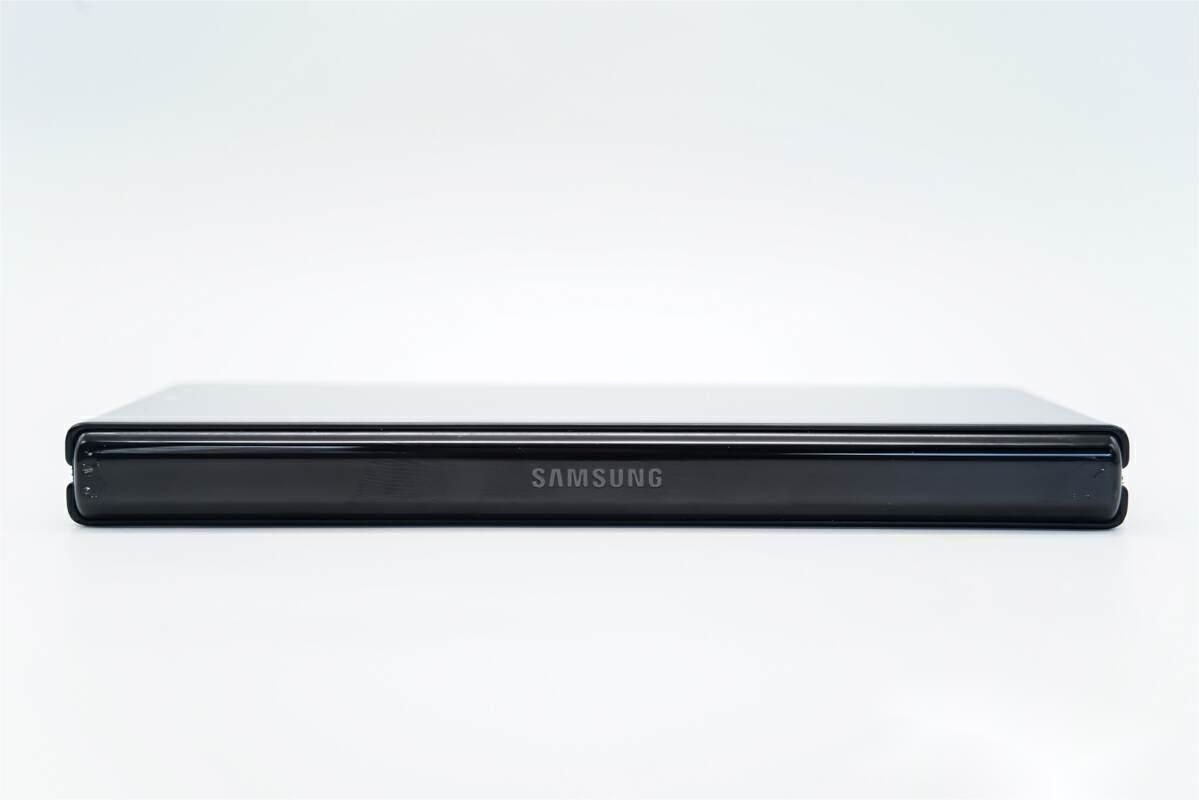
The fuselage is designed with the "SAMSUNG" brand logo on the side and features a durable and lighter weight armored aluminum frame structure that better protects the hinges and internal structure.
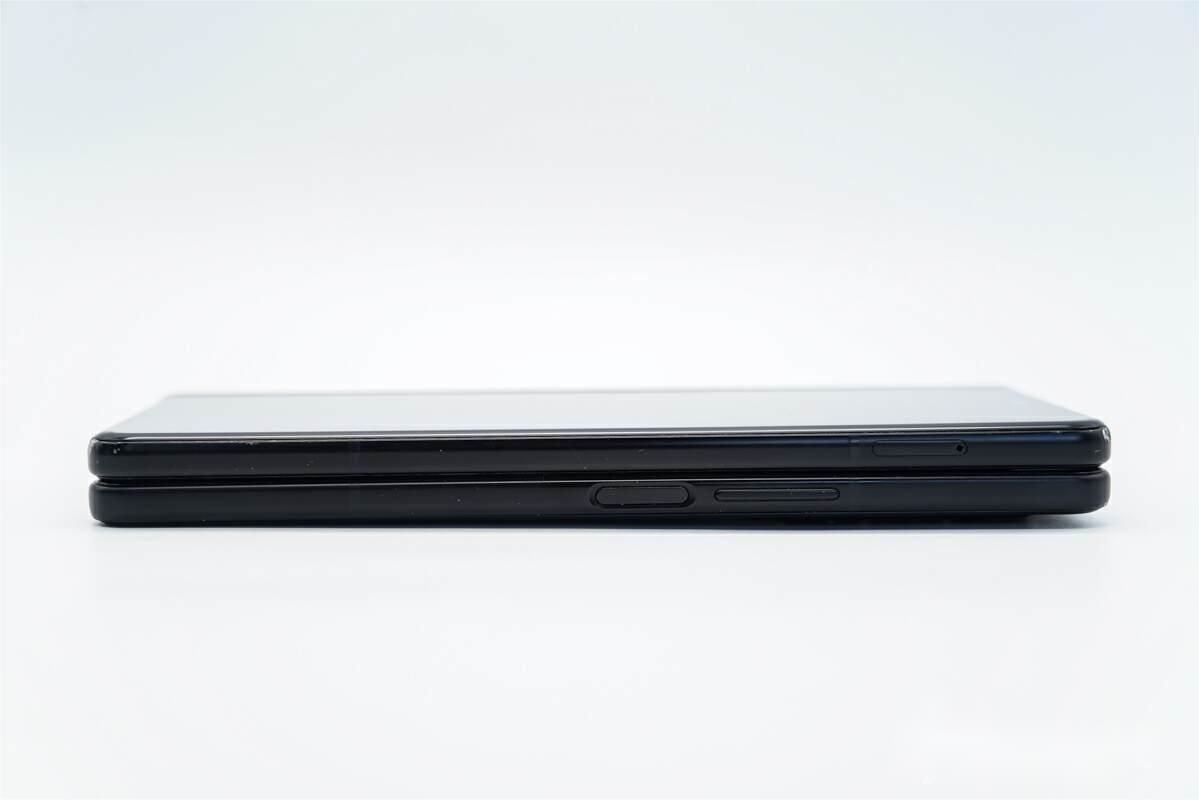
The other side of the bezel is set with SIM card slot, fingerprint recognition button plus or minus volume keys.
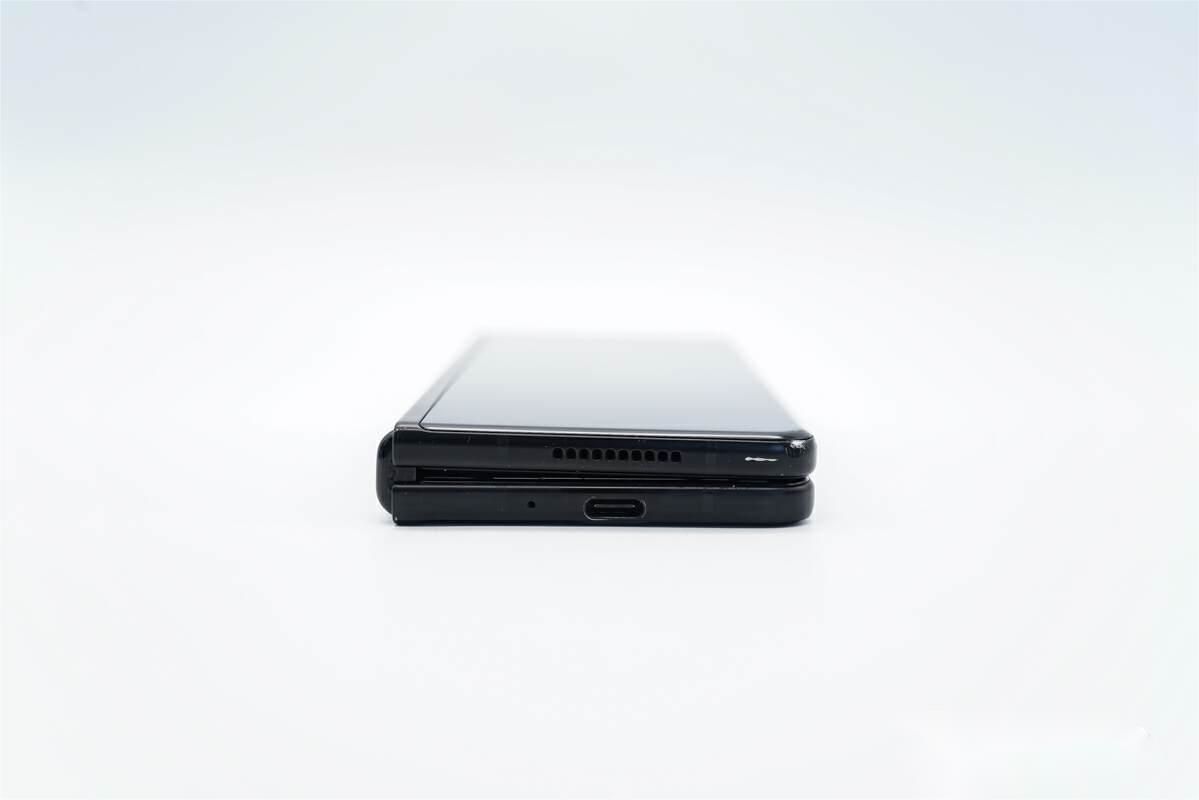
The top of the body is set with speaker and microphone openings.
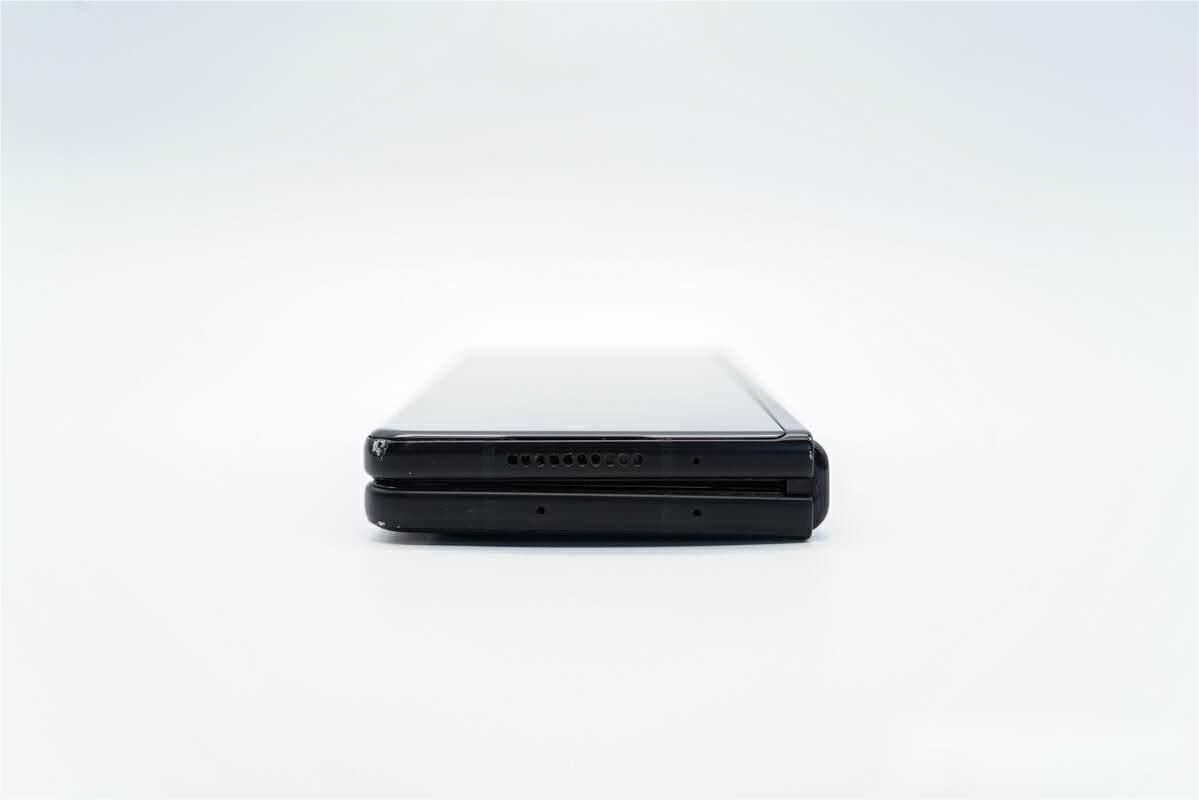
There are speaker openings and Type-C charging port at the bottom of the body, and the dual speakers present better stereo sound.
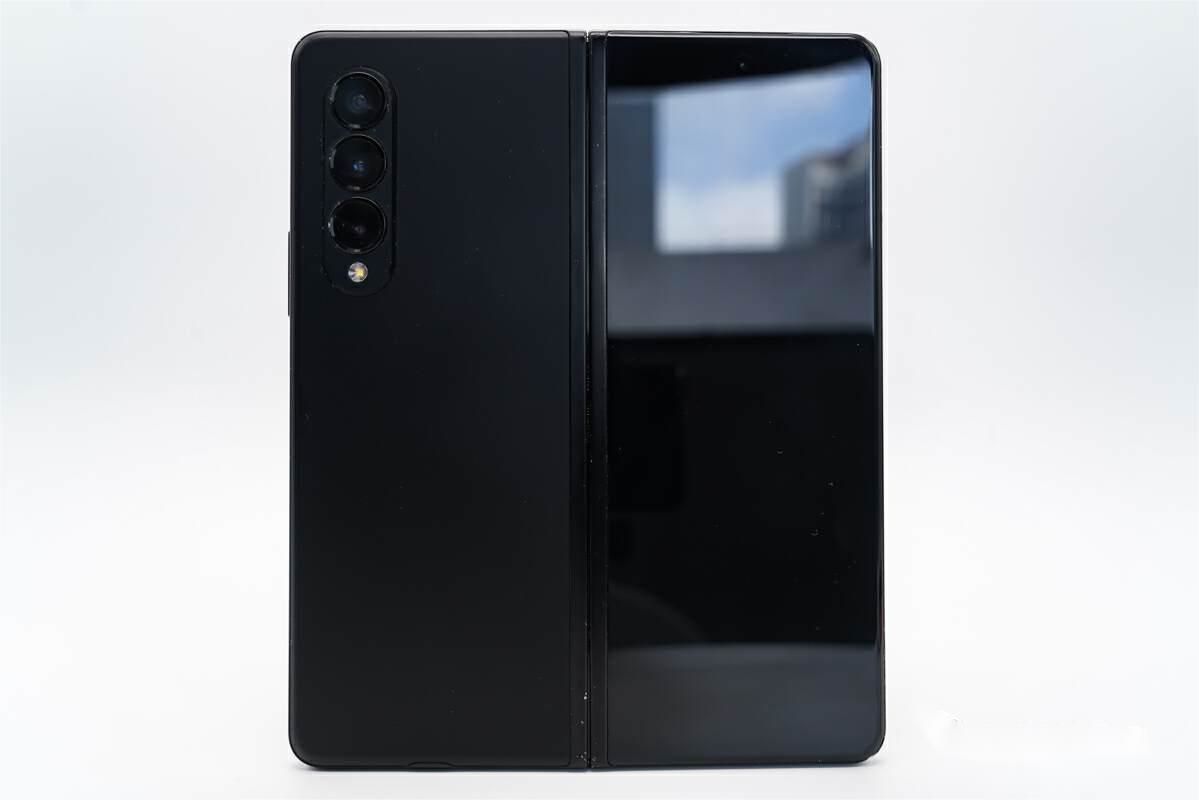
The Samsung Galaxy Z Fold3 features a 6.2-inch Dynamic AMOLED screen on the outside with 832×2268 pixels, supports 120Hz adaptive refresh rate and 1500 nits peak brightness; three cameras on the back are 12MP main camera, 12MP super wide angle and 12MP telephoto, and the outer screen selfie camera 10 megapixels.
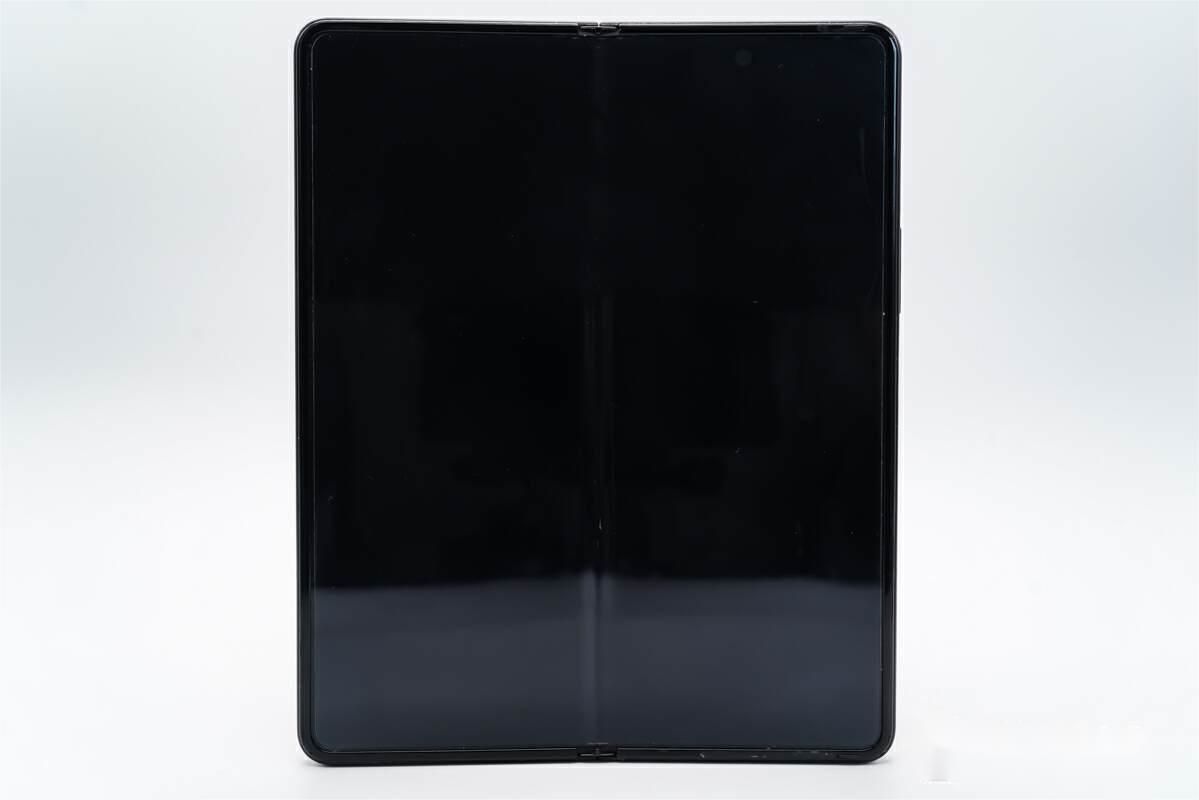
The inside of the phone features a 7.6-inch AMOLED full-screen made of enhanced Samsung Ultra-Thin Flexible Glass (UTG) with a resolution of 2208 x 1768, also supporting 120Hz adaptive refresh rate, as well as Eco screen display technology with a 29% brightness increase and a peak brightness of 1200 nits. The 4MP off-screen camera and distance sensor are located in the center of the right screen.
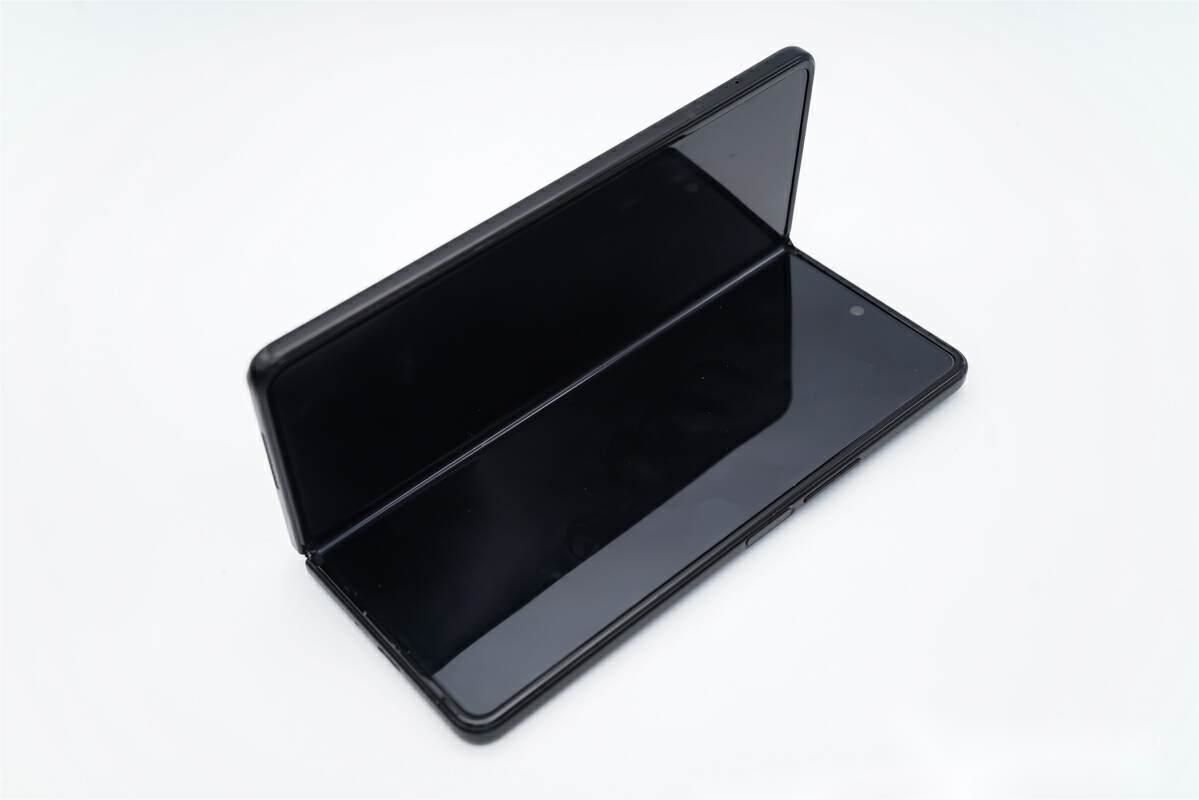
Samsung Galaxy Z Fold3 folding screen phone hinge supports multi-angle rotation stop, with corresponding interaction mode, bringing novel user experience. In addition to the hinge structure, there are four sets of rare earth permanent magnet powerful magnets at the corners of the screen, which are used to make the screen folding state more stable; at the same time, through the controlled magnetic design, it can achieve any angle of rotation and stop. The current high-end flagship series of folding screen phones are using this magnet program.
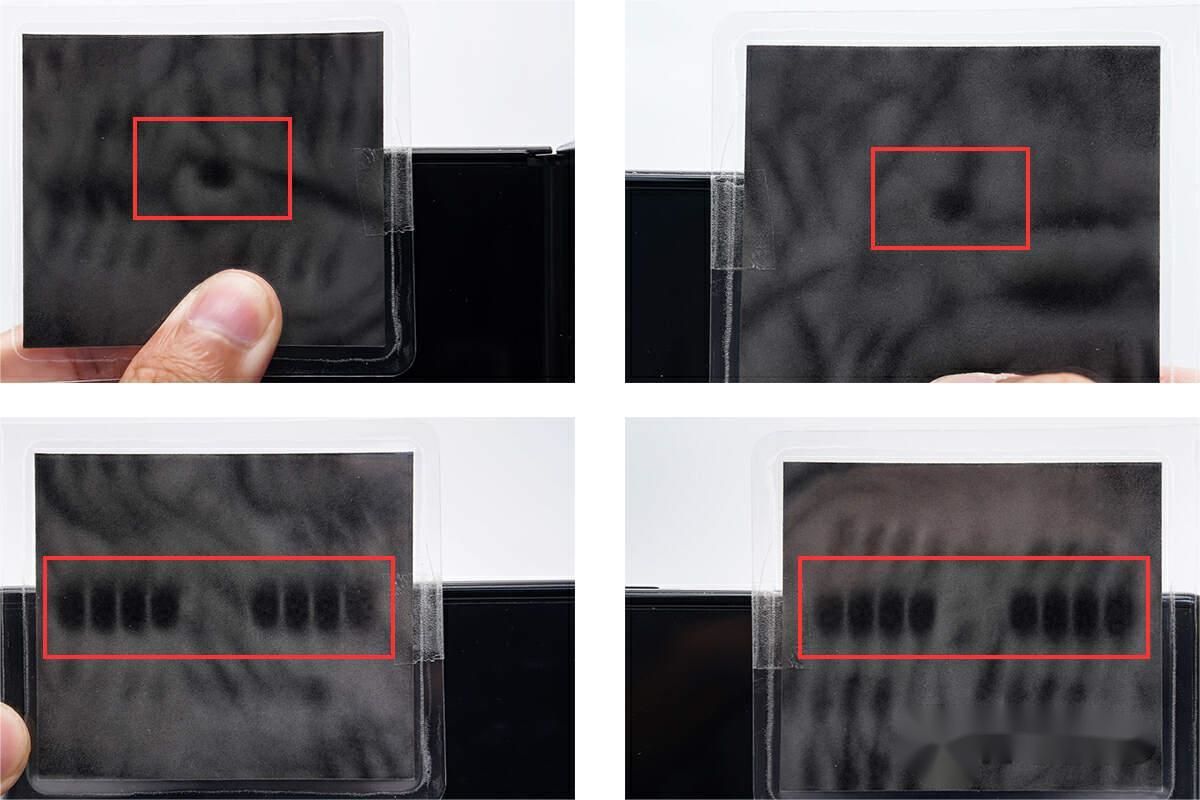
Through the magnetic display piece, you can see the four groups of magnets above the screen.
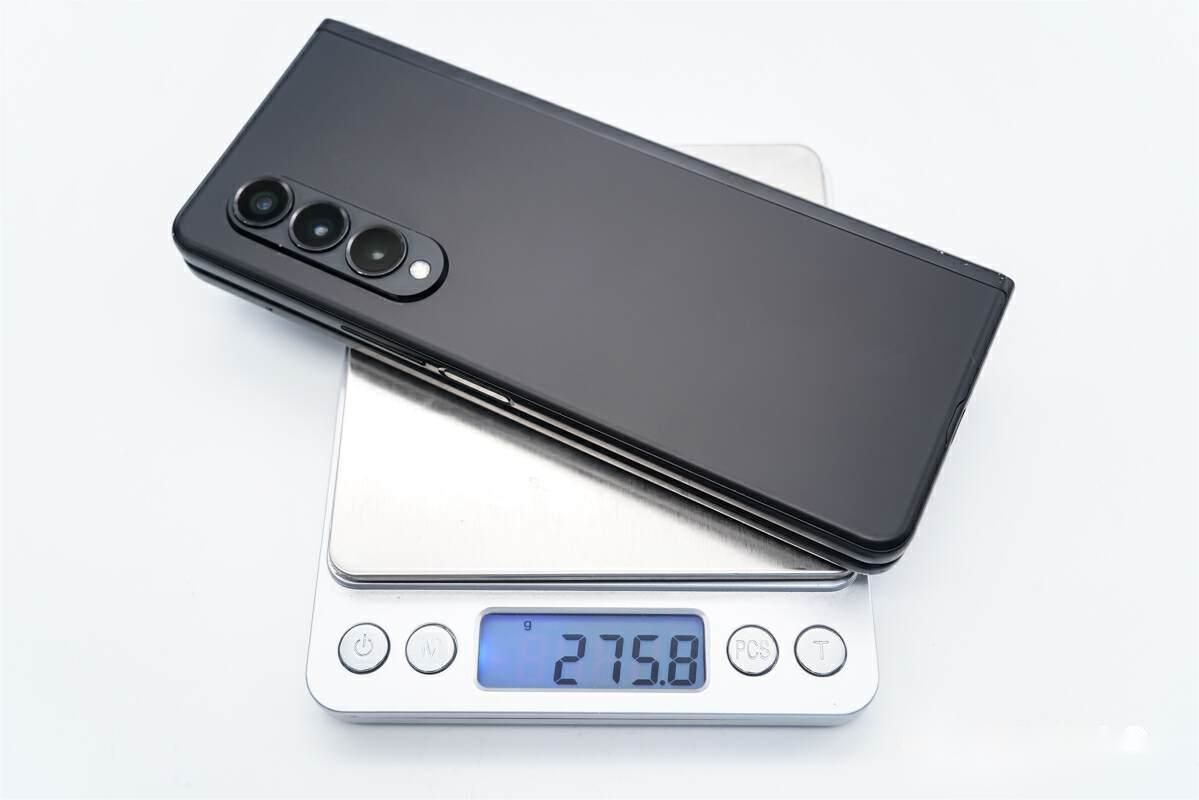
The weight of SAMSUNG Galaxy Z Fold3 folding screen phone is about 275.8g as measured by I love audio network.
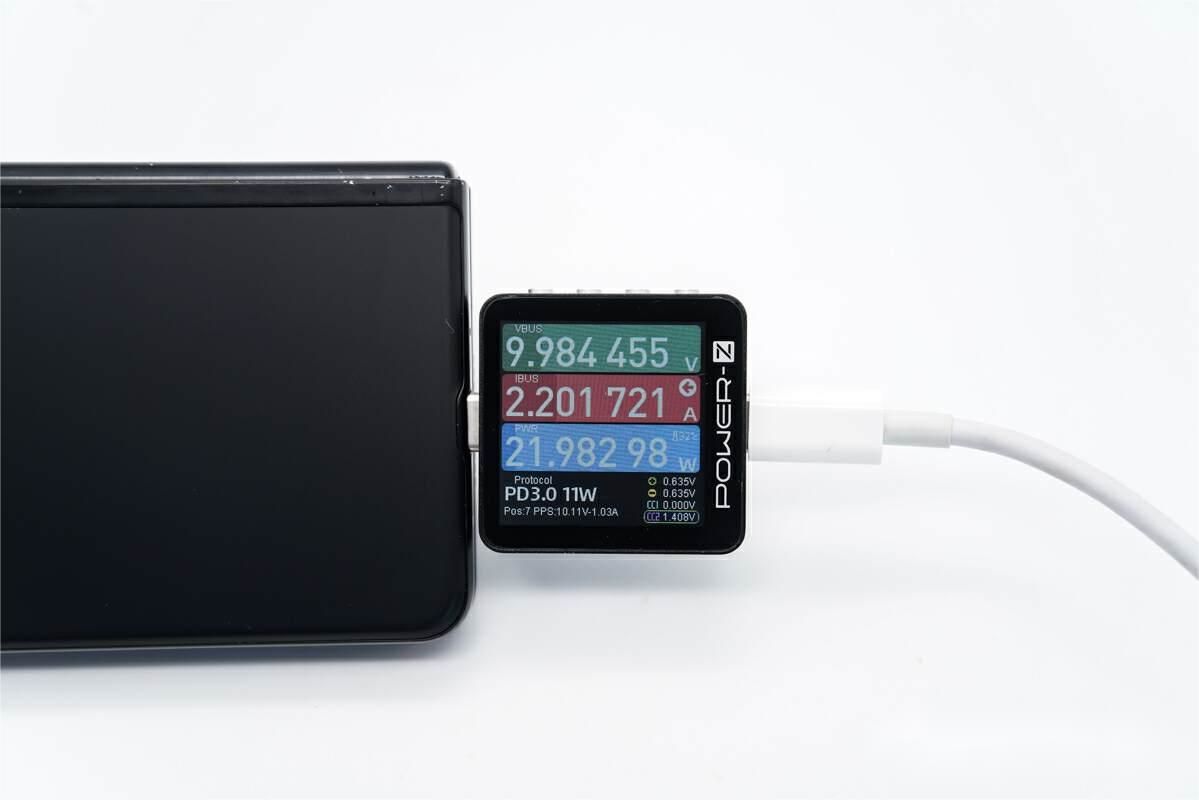
vopmart using CHARGERLAB POWER-Z KM002C on SAMSUNG Samsung Galaxy Z Fold3 folding screen phone charging test, the input power is about 21.98W.
Second, the Samsung Galaxy Z Fold3 folding screen phone disassembly
Through the above, we understand in detail the SAMSUNG Samsung Galaxy Z Fold3 folding screen phone design, the following into the disassembly part, to see the detailed disassembly process ~
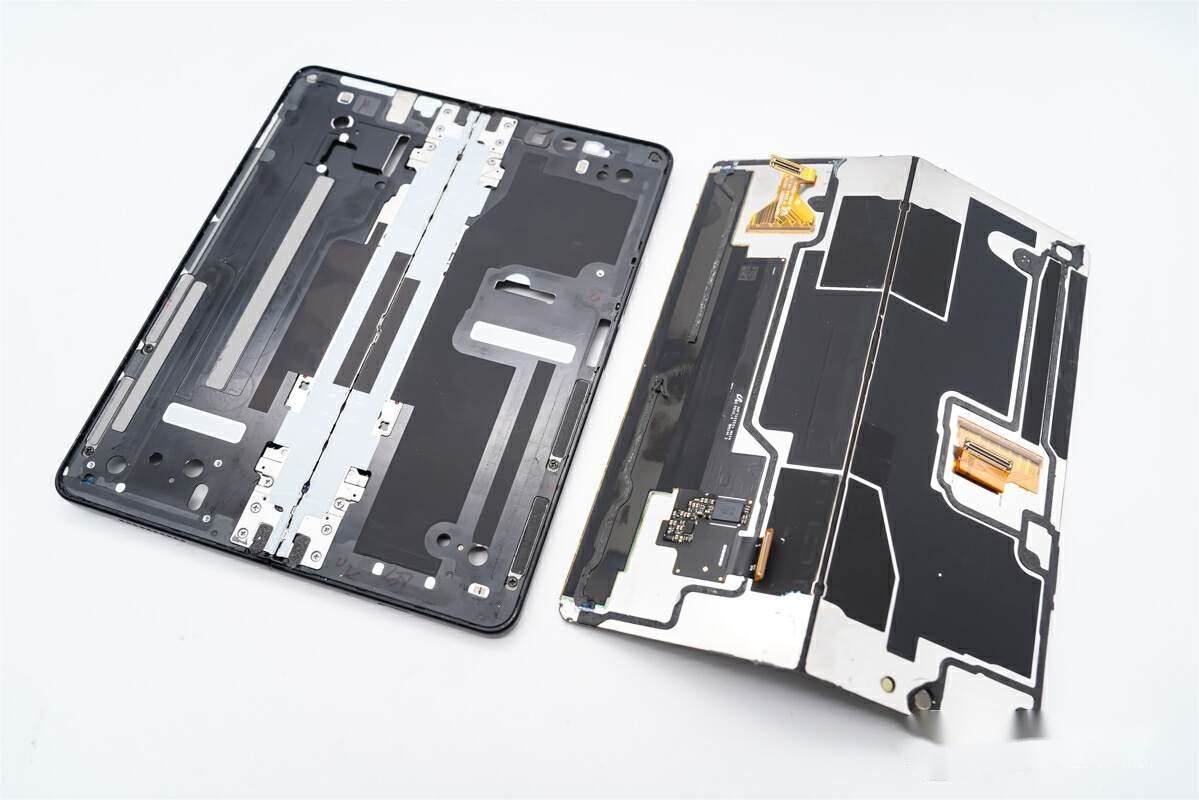
First look at the disassembly of the inner part of the phone, take off the flexible OLED screen on the inside of the phone.
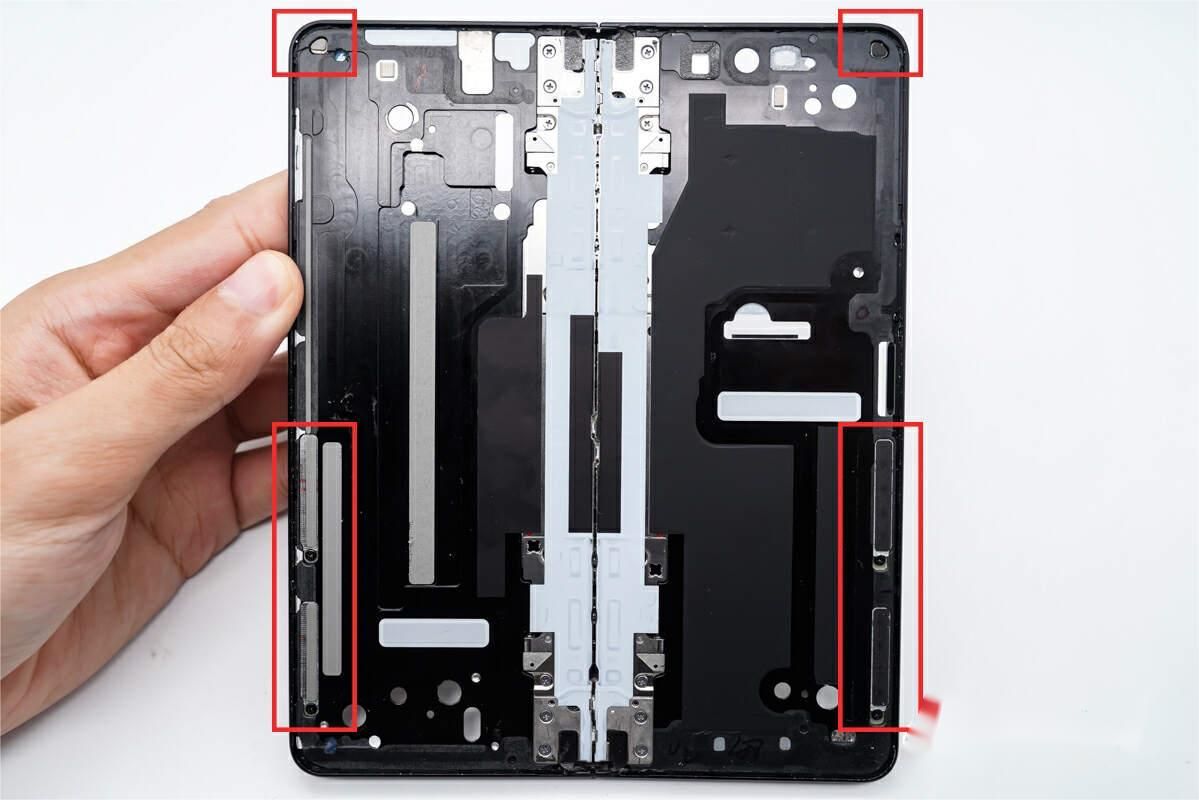
The inner cavity structure at a glance, through the middle hinge and the edge of four groups of strong magnets, to achieve the screen bending and multi-angle hovering. The middle hinge is covered with a metal cover and stickers on the outside, and the edge magnets are equipped with cushioning pads to prevent damage to the screen when folding, and the cushioning pads are also differentiated by different color schemes.
According to my love of audio network learned that the Samsung Galaxy Z Fold3 folding screen phone using magnets from Dongguan Jinkun New Materials Co., Ltd. for rare earth permanent magnet products, compared to ordinary magnets, with stronger magnetic characteristics, to achieve a more stable fix; and through the controlled magnetic design, you can achieve any angle of the spin stop; through just the right magnetic circuit design, so that it achieves open and close freely, the The magnetic circuit is designed in such a way that it can be opened and closed freely and the sound is crisp, without affecting the performance of electronic components. The magnet surface is corrosion-resistant nickel-plated to ensure that the magnet surface does not change under any circumstances.
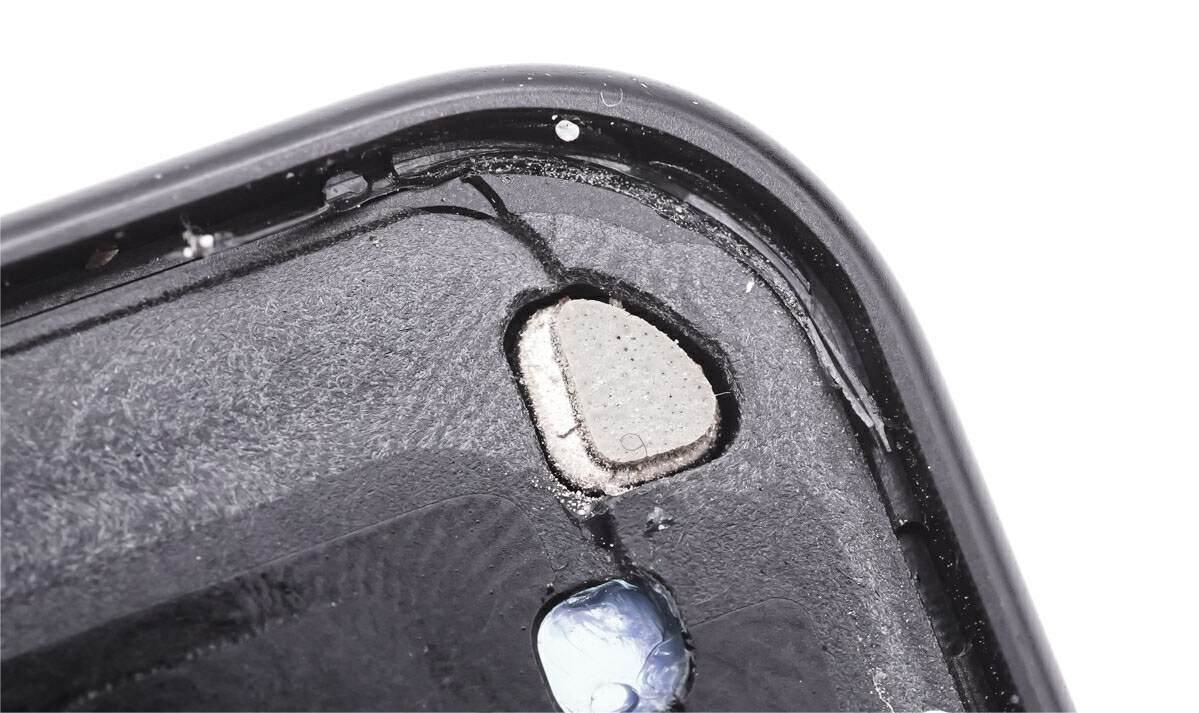
Close-up of the magnet structure in the upper left corner, the shaped design that fits the curvature of the edge of the phone, the high-precision size and the proper material selection to meet the suction requirements. The main function is magnetic induction, which controls the screen display and hibernation state of the folding screen phone. According to the customer's demand, the screen display and hibernation function will be realized when the screen is opened and closed to a certain angle, and the angle error is controlled within ±2 degrees.
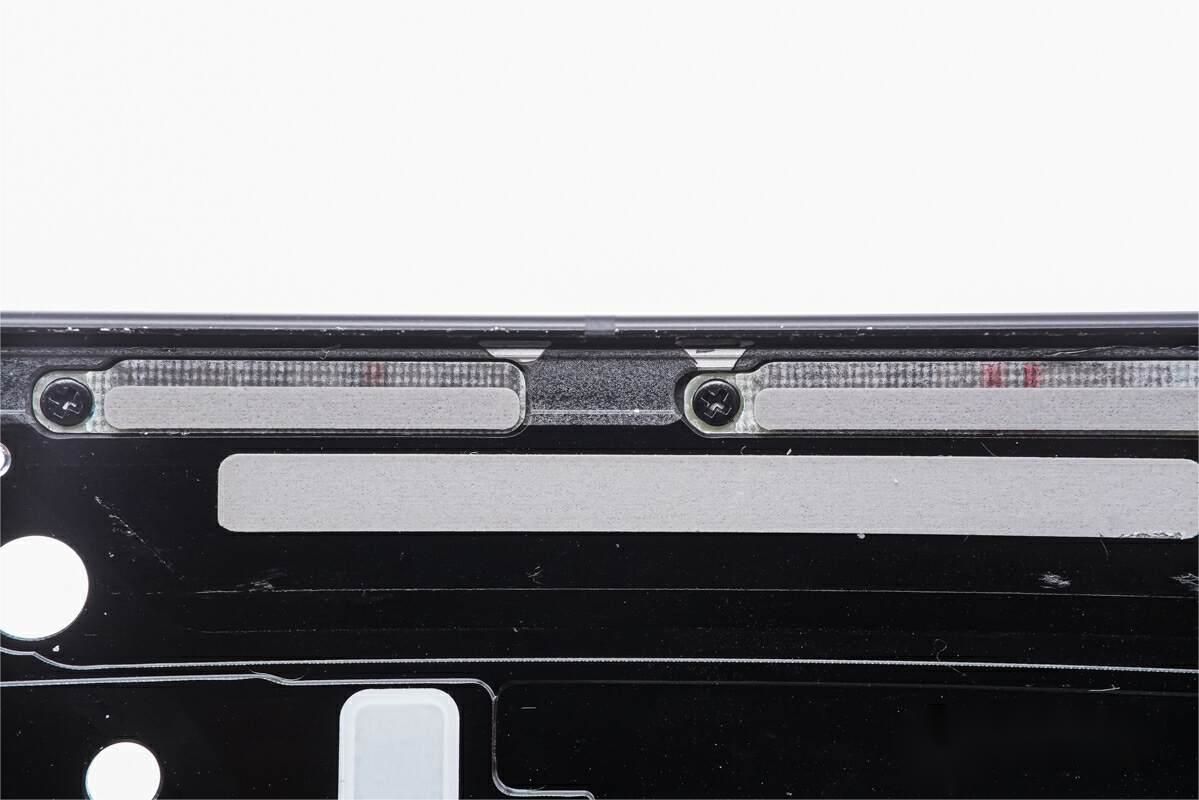
Close-up of the magnet group on the left side, using the plane multi-pole magnetic design, to fit the structural characteristics of the hinge, to meet the adsorption effect. With the right magnet is opposite to the opposite pole, the main role of magnetic adsorption, to ensure the stability of the folding screen phone when opening and closing the screen.
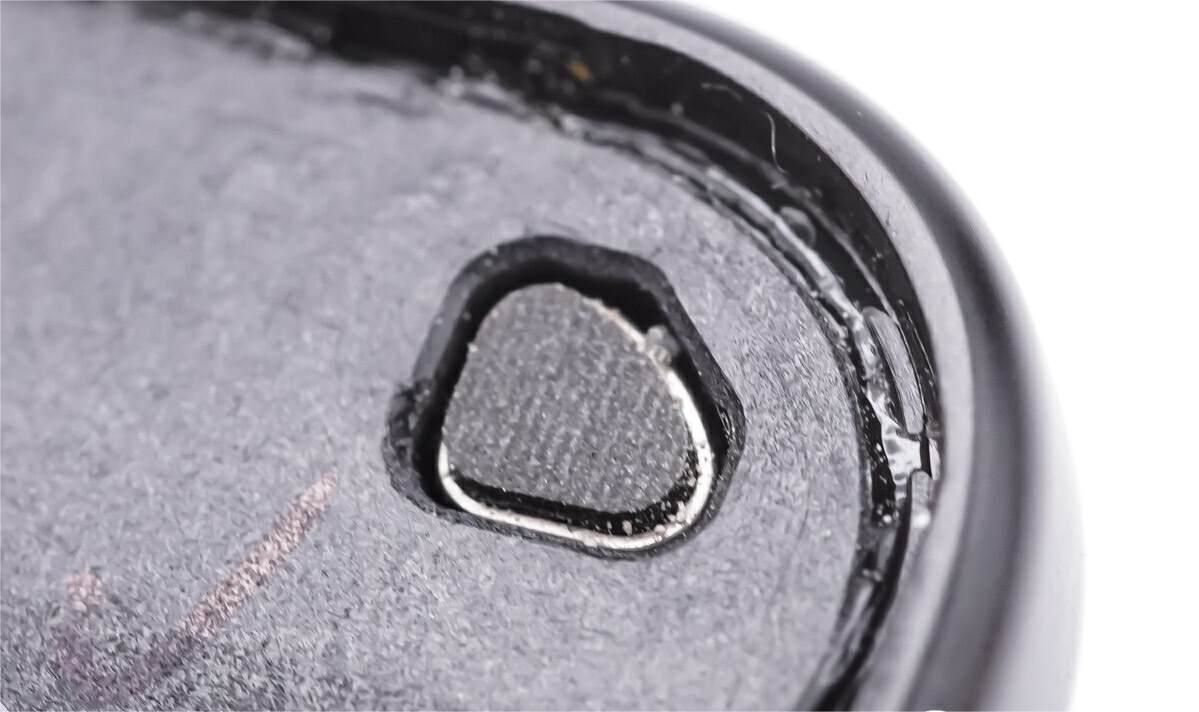
Close-up of the magnet structure in the upper right corner, precisely positioned with the magnet in the upper left corner to achieve the suction effect and realize the magnetic induction function.
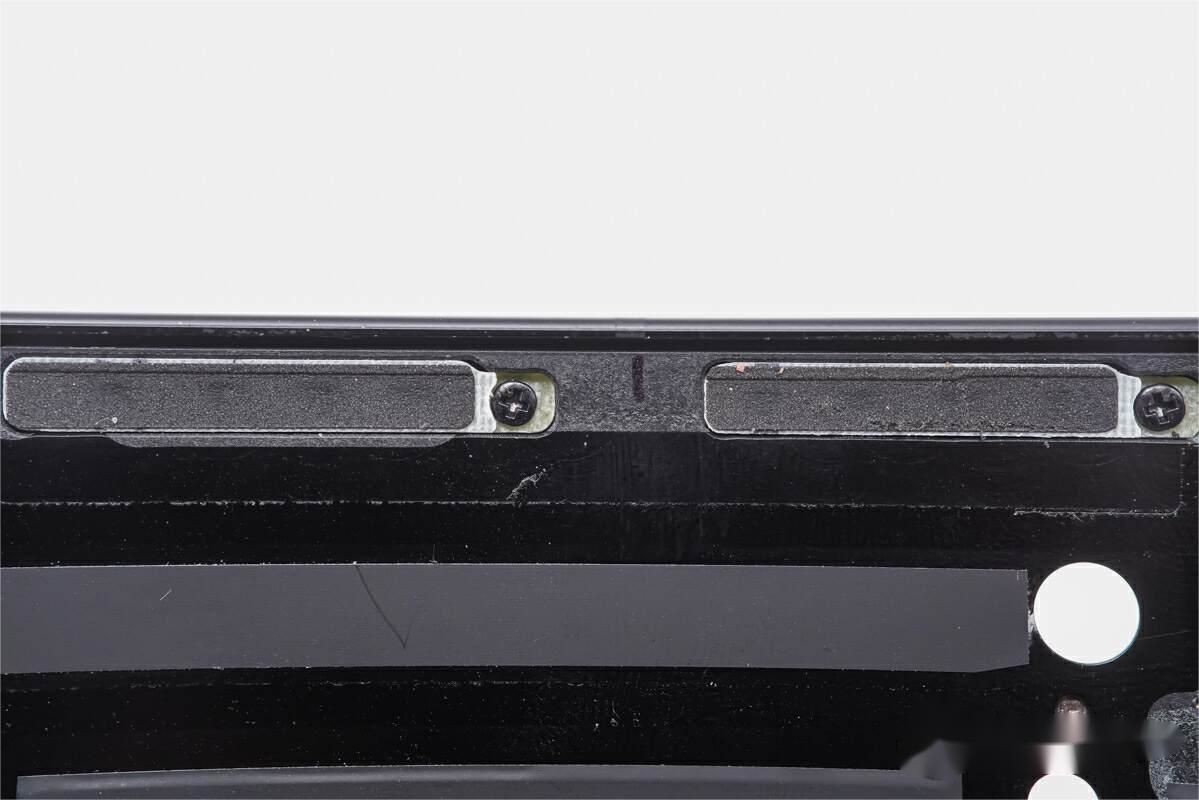
Close-up of the structure of the right magnet group, using a similar magnetization method as the left magnet group, so that the suction effect is perfectly matched. And the use of multi-pole arrangement of the plane, in the rated volume and mass, so that one end of the table magnetization greater; in order to magnetic field does not affect the reception and transmission of wireless signals, and even affect the normal use of other electronic components, the use of special shielding materials, so that one end of the table magnetization smaller, the other end of the table magnetization increased by more than 50%.
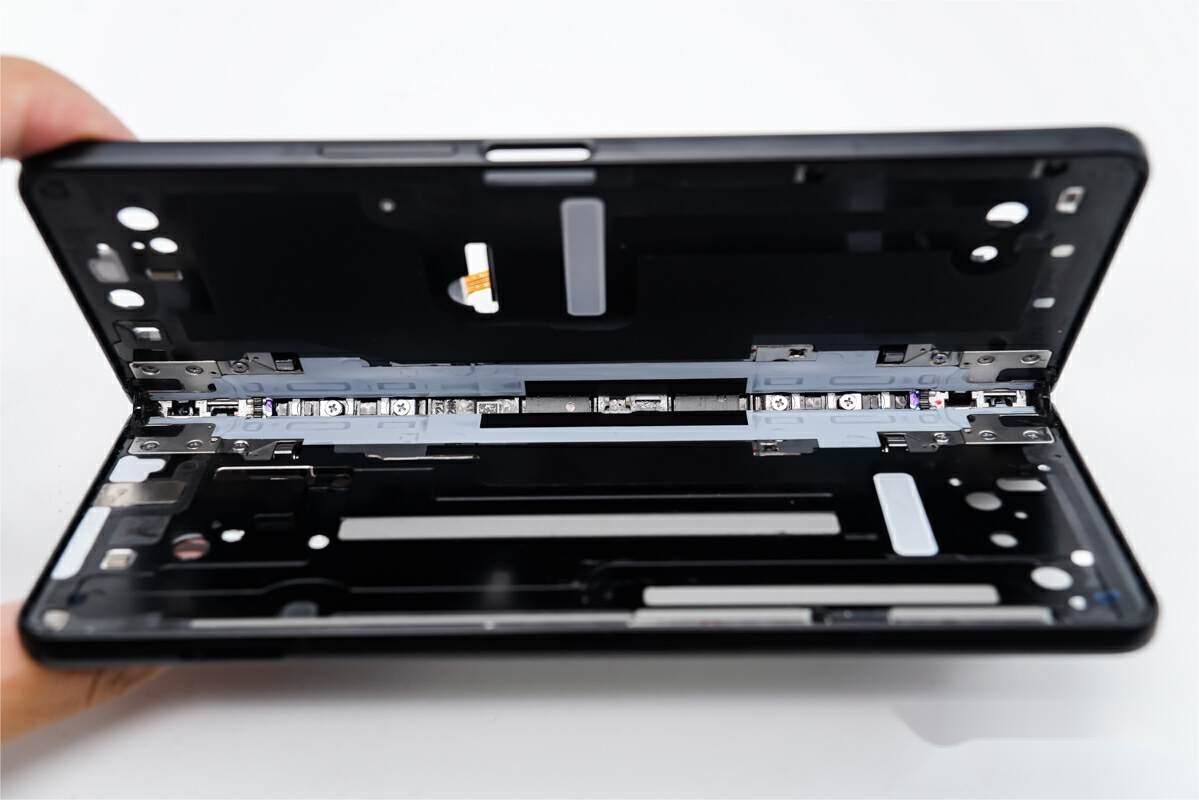
Bend the phone, hinge structure close-up.
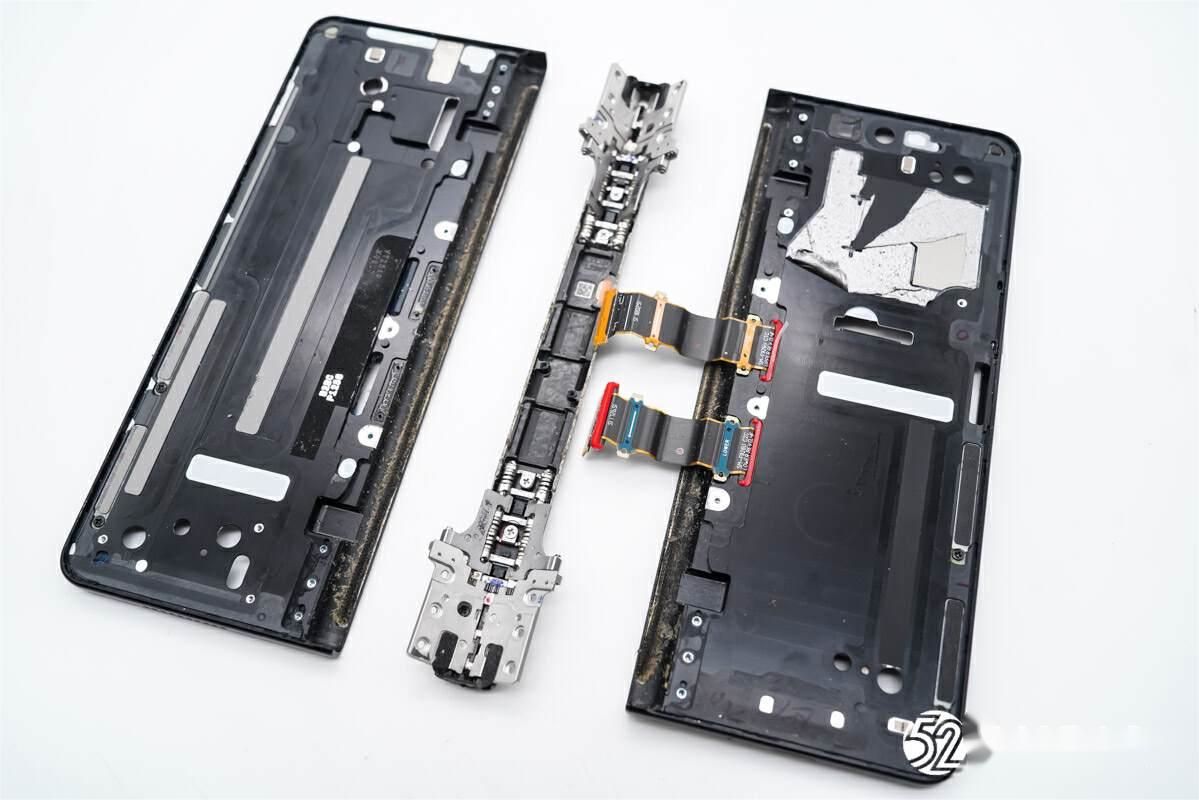
Remove the screws and metal cover, remove the hinge.
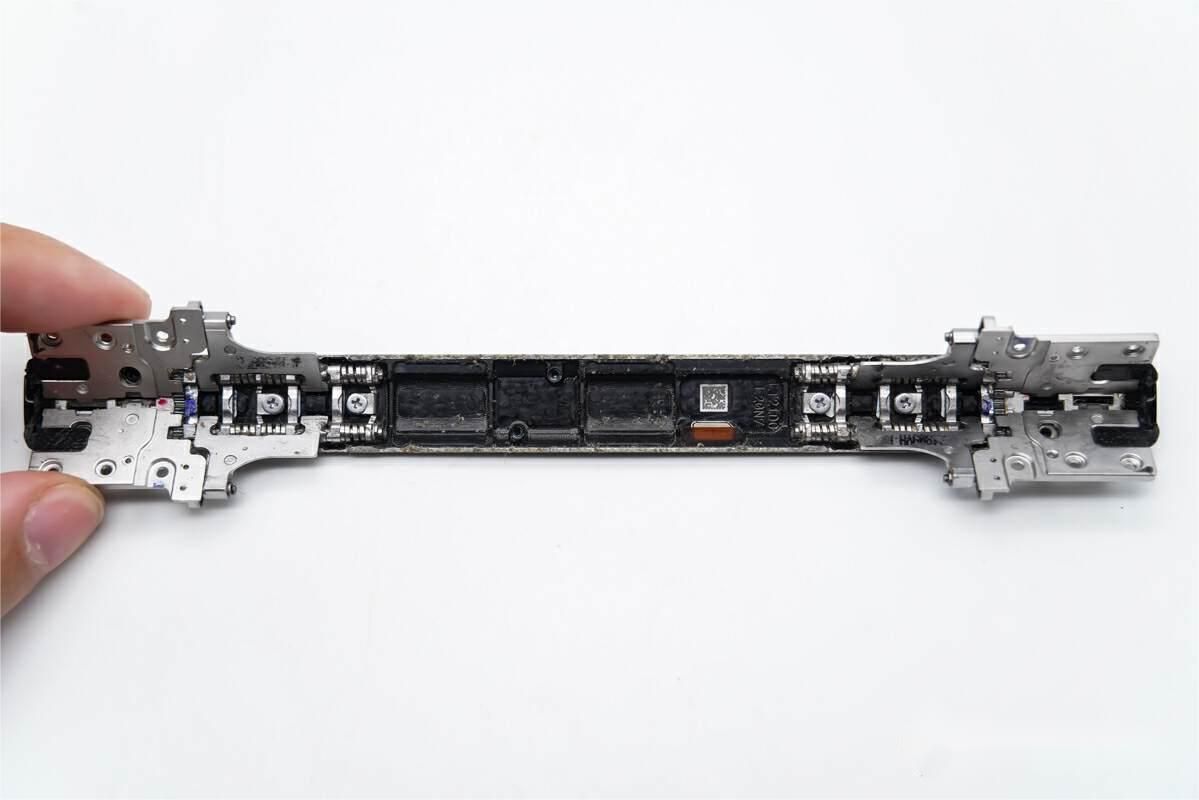
Close-up of the hinge structure, with the top and bottom symmetrical pivots, fixed to the center frame armored aluminum frame.
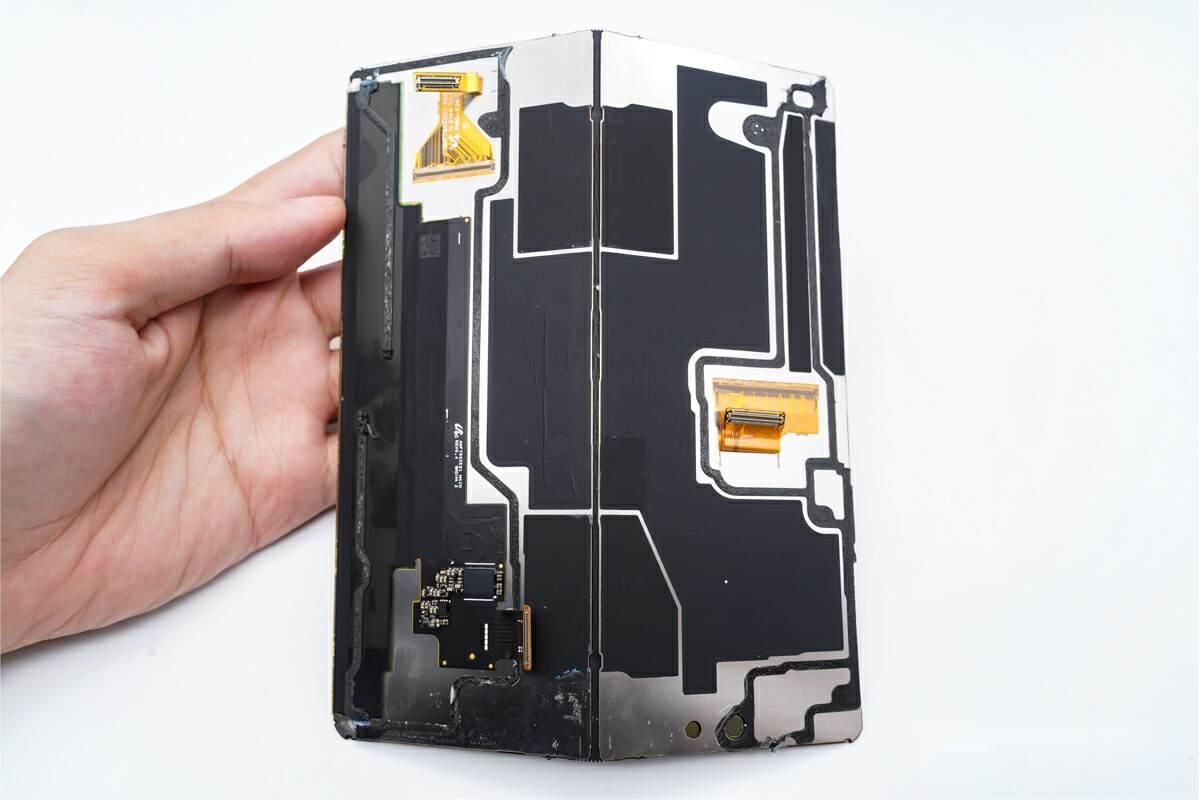
A glance at the inner circuitry of the inner screen, with three rows of wires connecting the PCB board with a large graphite heat sink sticker.
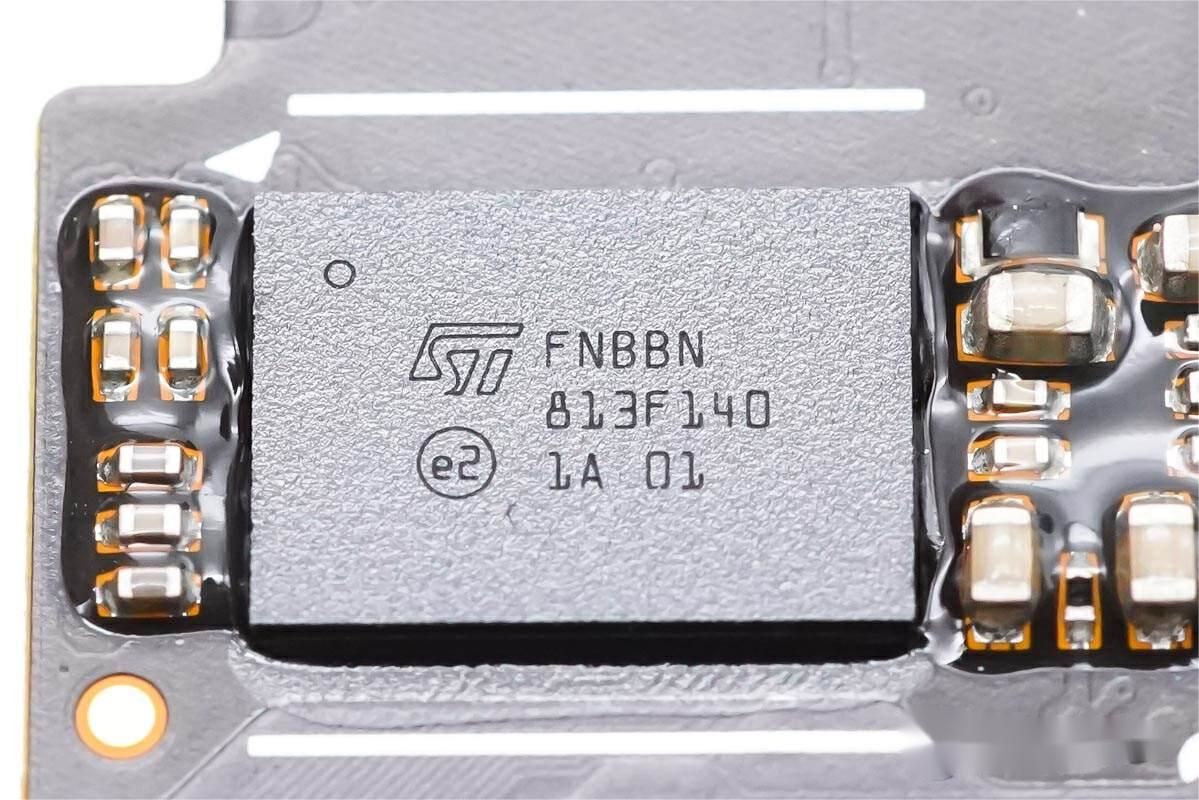
Screen driver chip with ST's silkscreen "FNBBN 813F140".
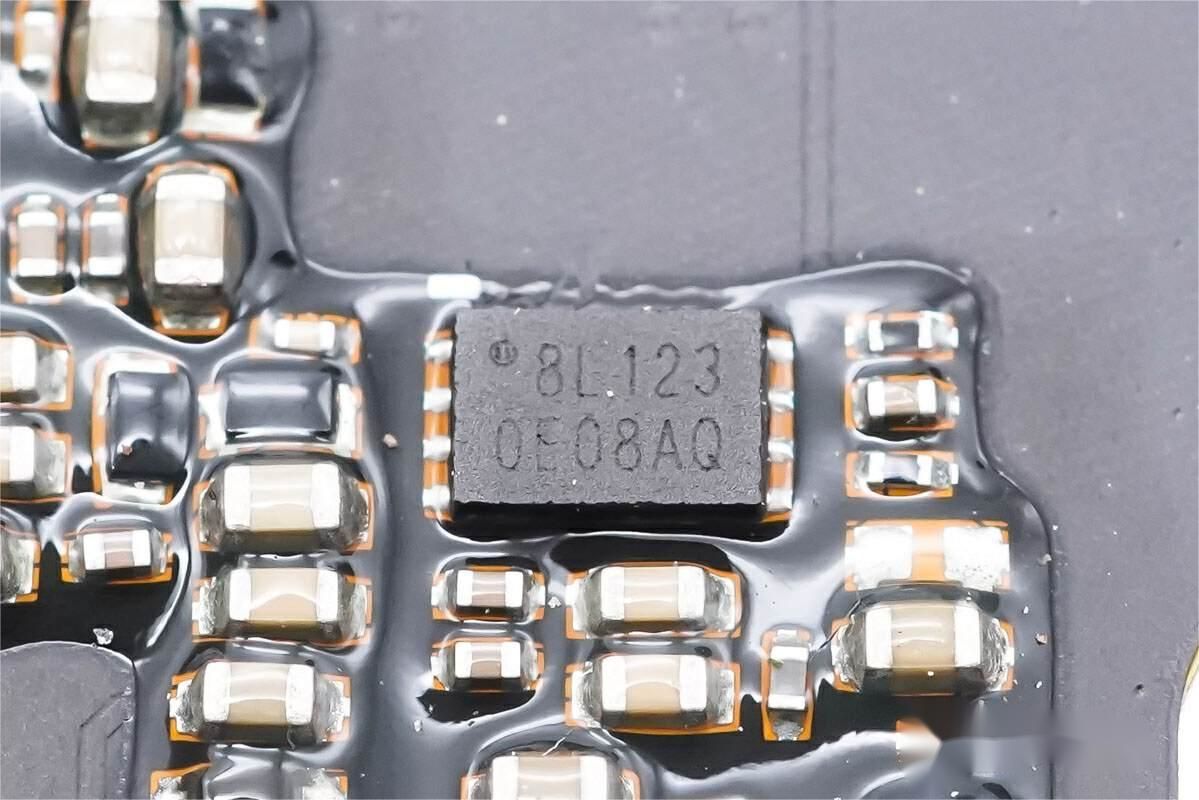
Silkscreen 8L123 IC.
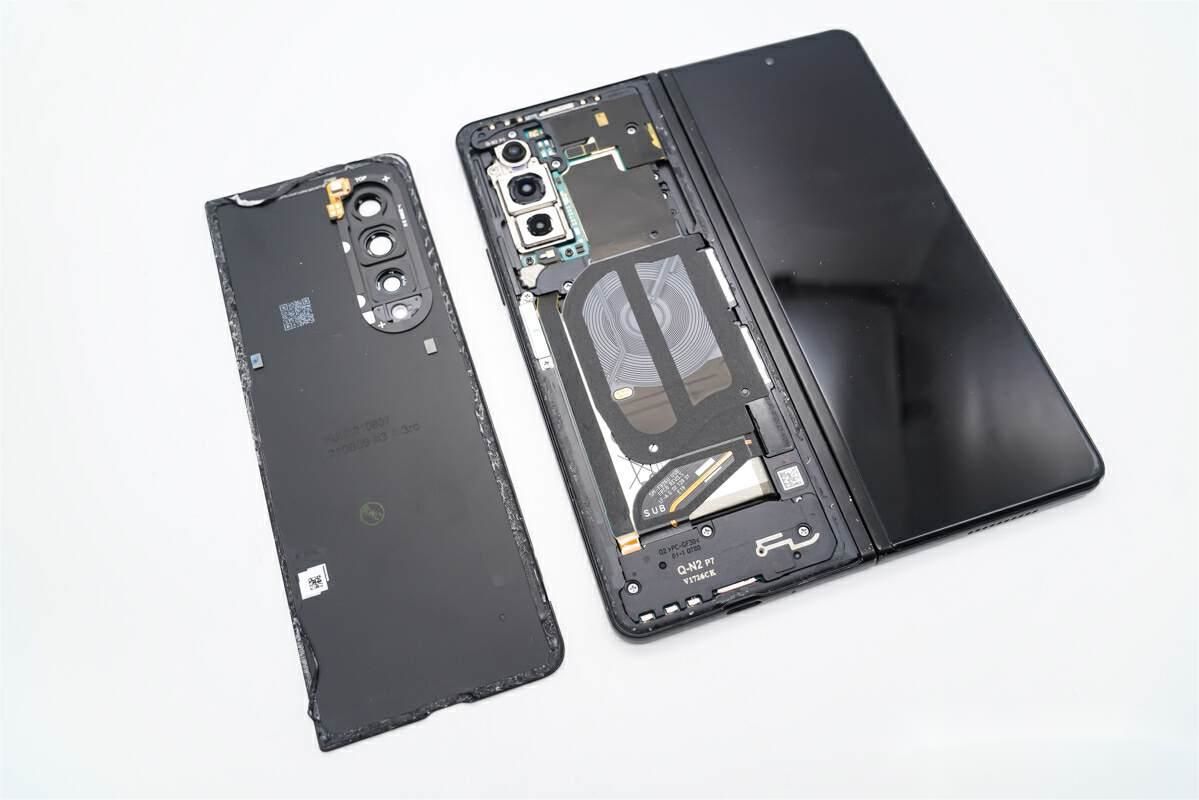
Here's another look at the disassembly of the outer part of the phone, taking off the back body cover.
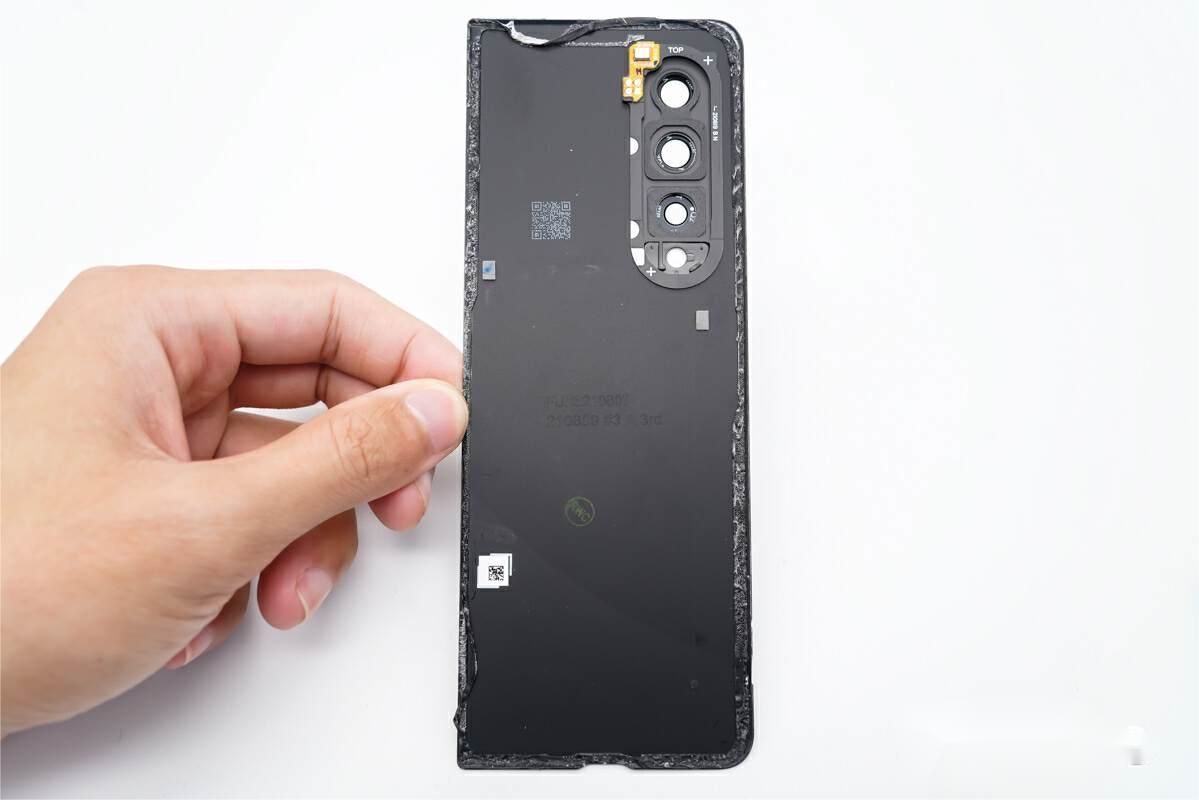
The inside of the cover structure at a glance, the camera mirror set structure with a VPU voice pickup unit, the row of wires exposed copper connected to the motherboard.
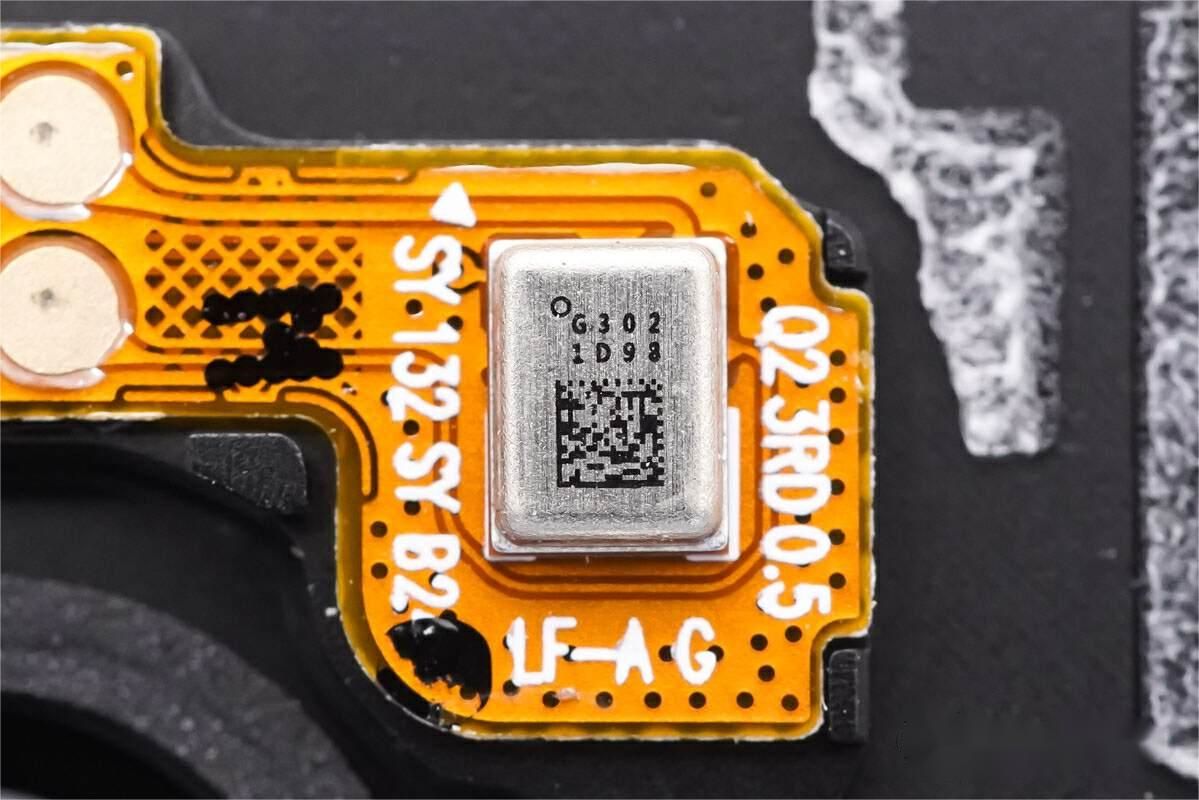
The VPU voice pickup unit of Radius G302 1D98.
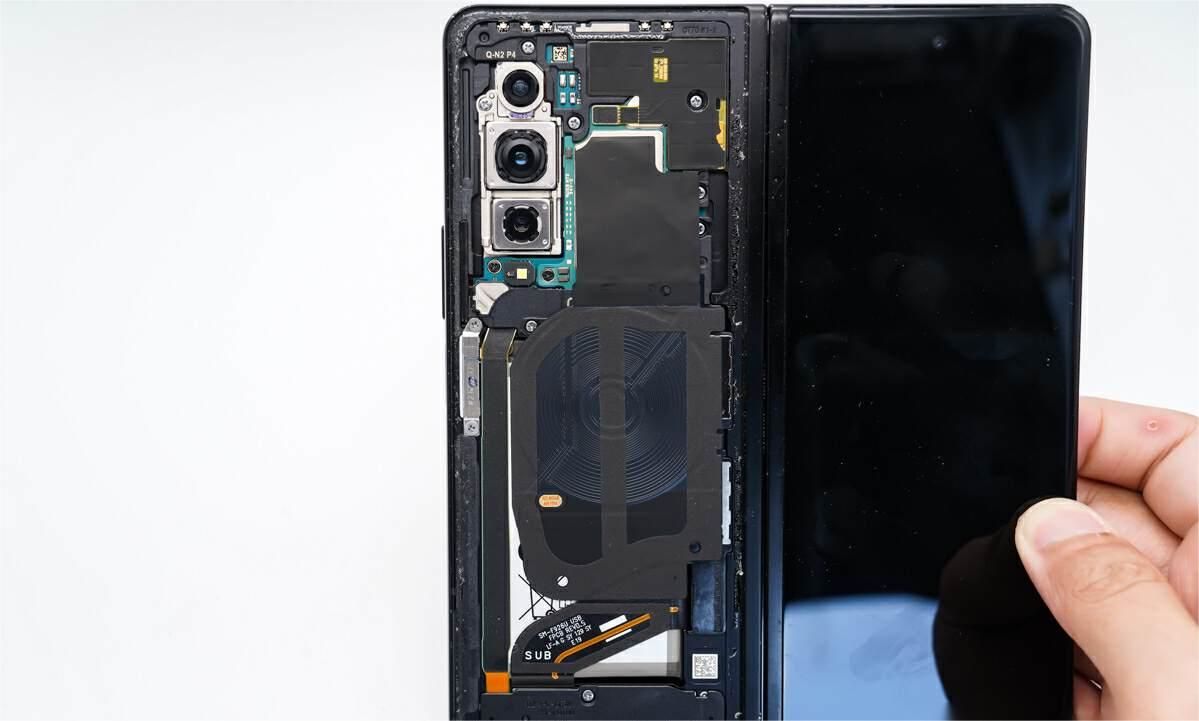
The internal structure of the cavity at a glance, the top fixed wireless charging receiver coil, the battery unit below, the upper part set the motherboard, with a heat dissipation sticker to enhance heat dissipation.
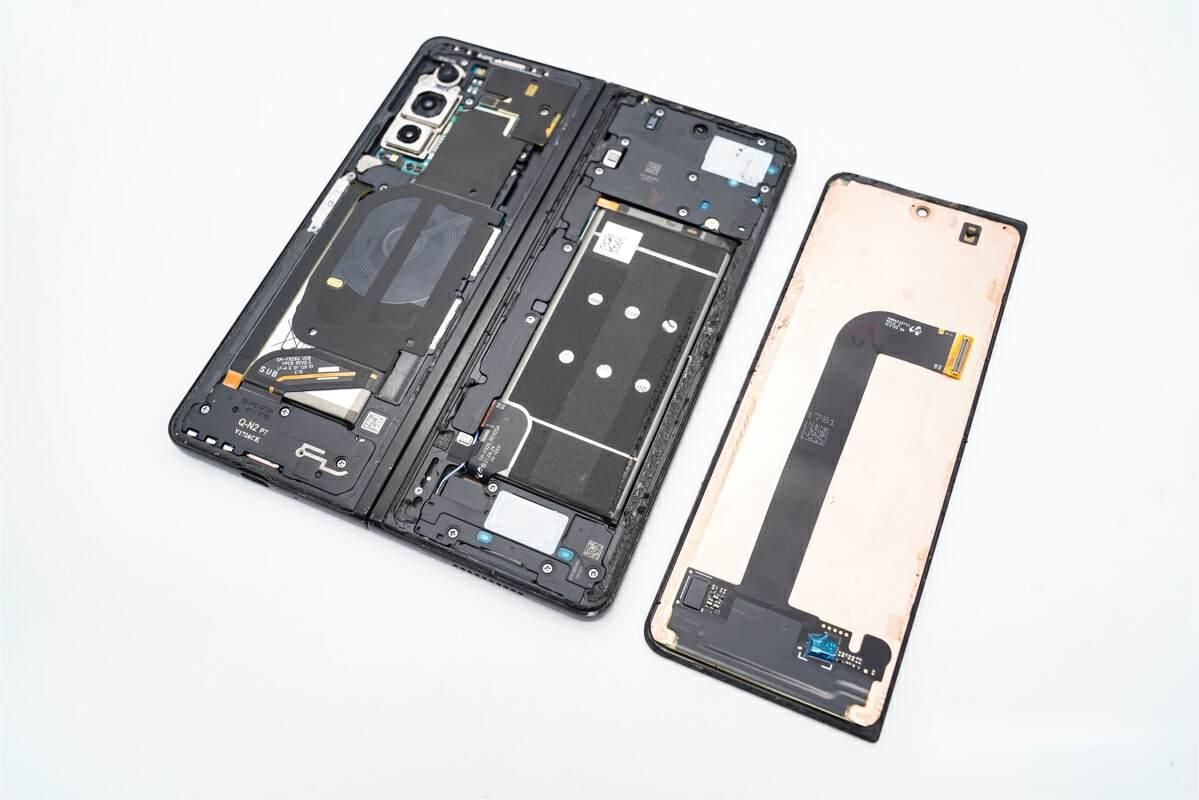
Removing the external screen of Samsung Galaxy Z Fold3.
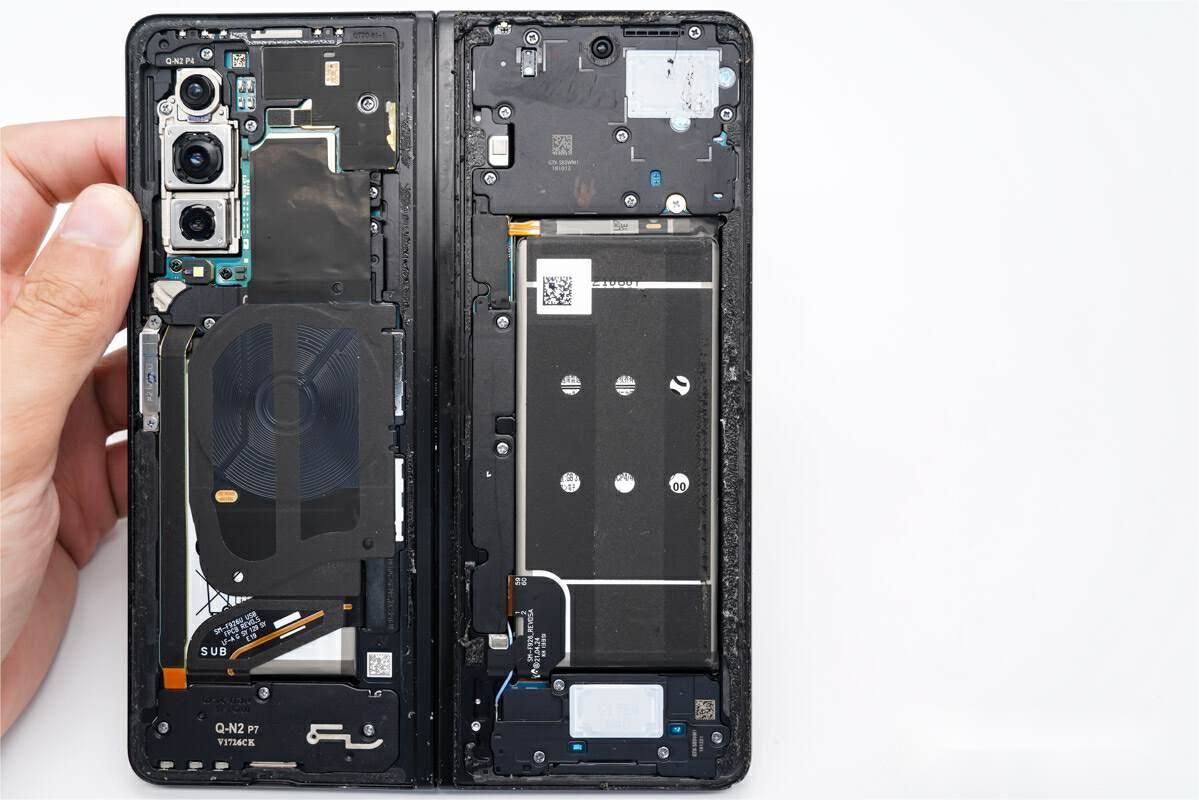
The internal structure of the outer screen cavity at a glance, also set with a battery, the PCB board is fixed by a plastic cover.
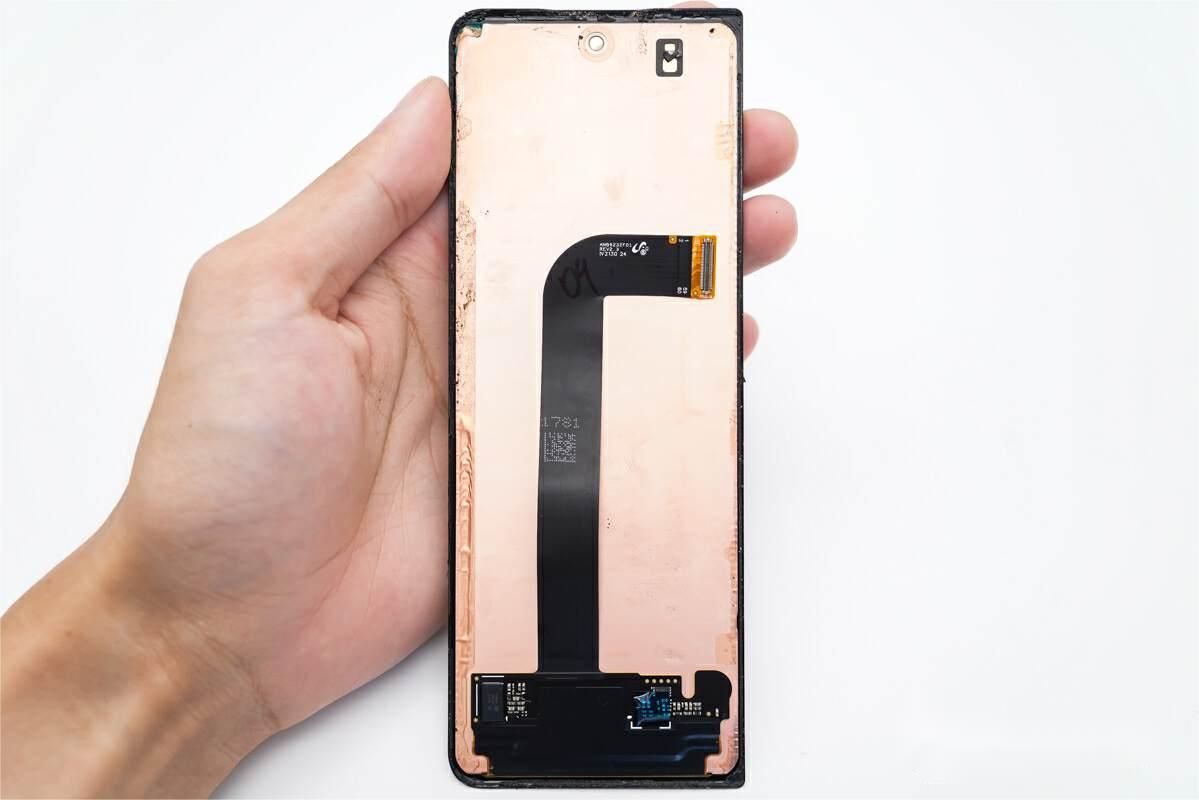
The internal structure of the external screen at a glance, covered with a layer of copper foil for heat dissipation, and the cables are connected through the BTB connector.
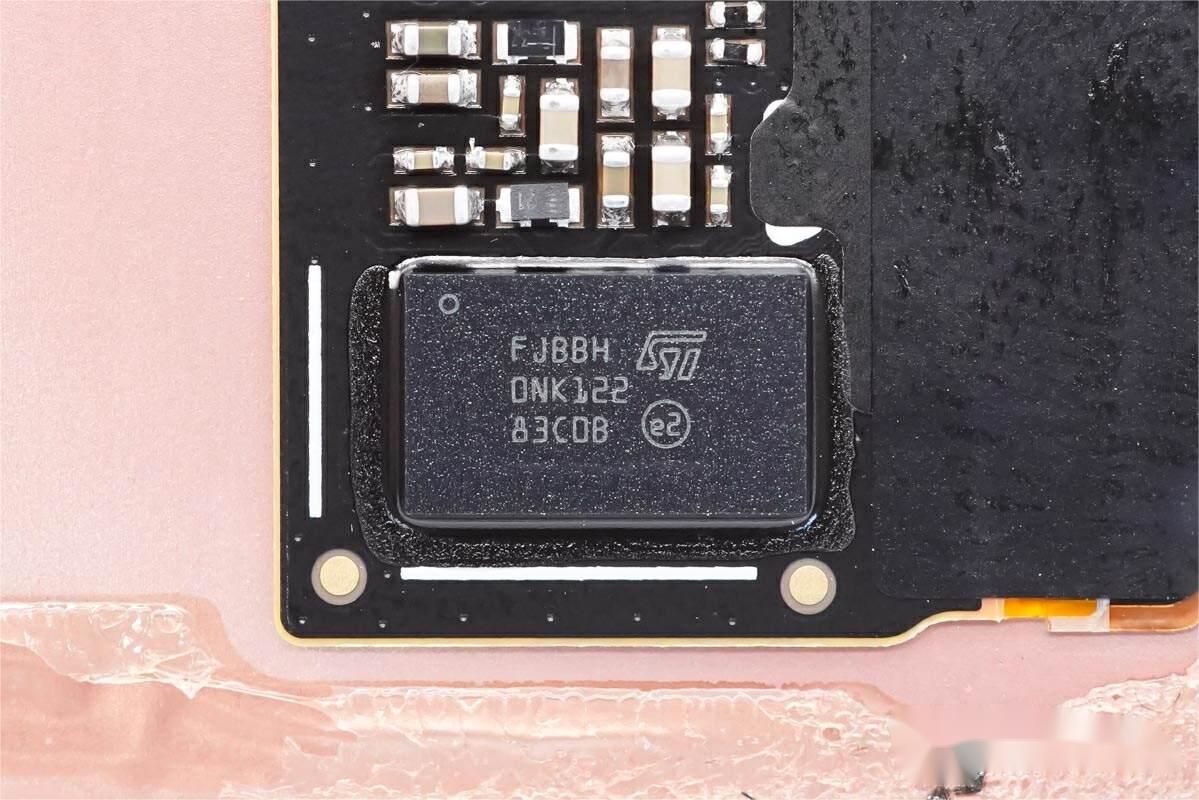
The external screen driver is also made by ST, with the silkscreen model "FJBBH DNK122 83CDB".
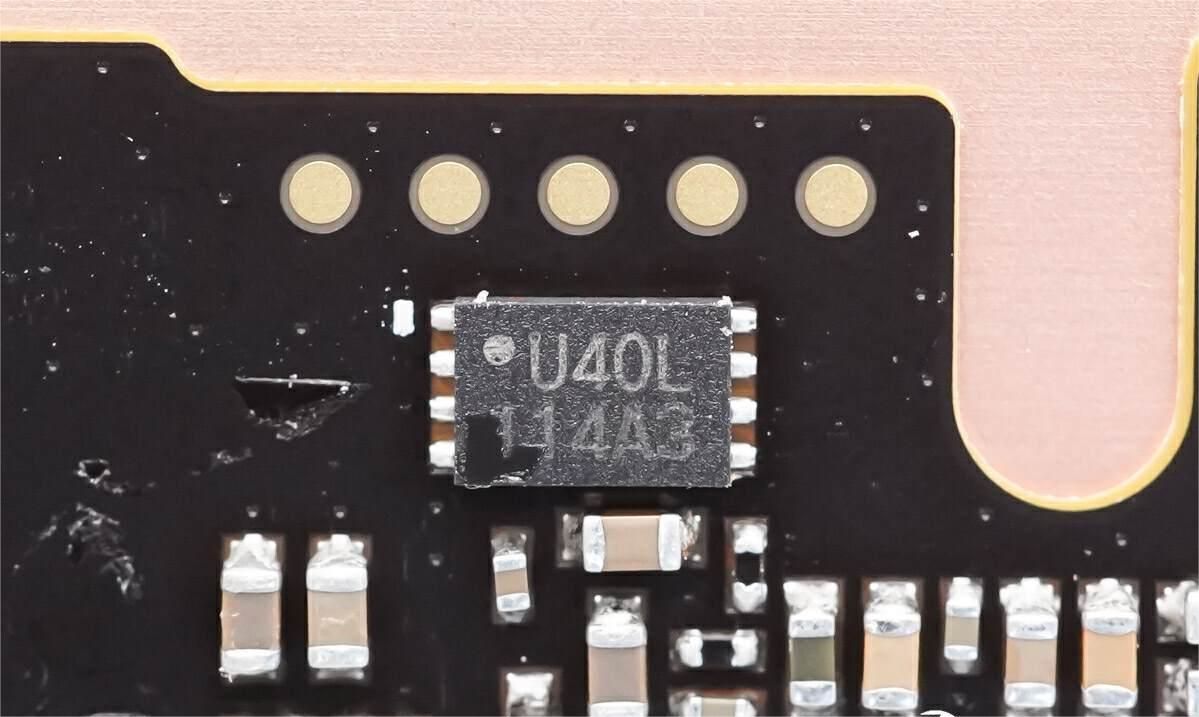
Silkscreen U40L 114A3 IC.
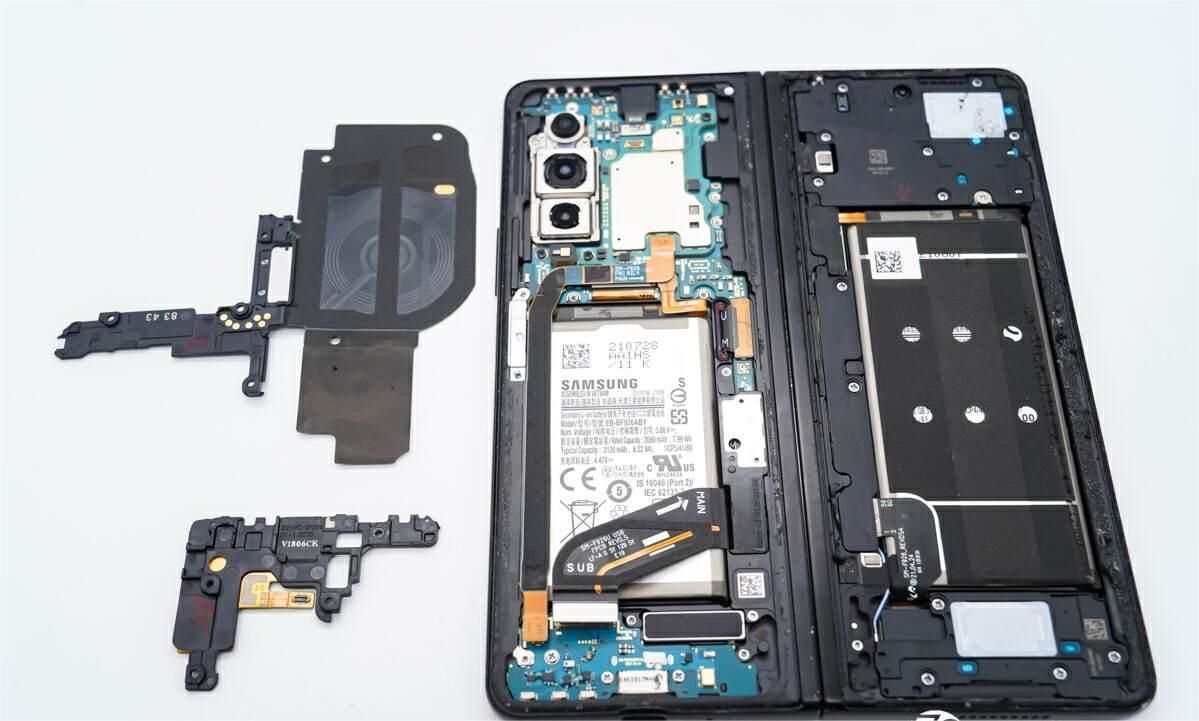
Remove the screws and take off the wireless charging receiver coil and the cover on the main board.
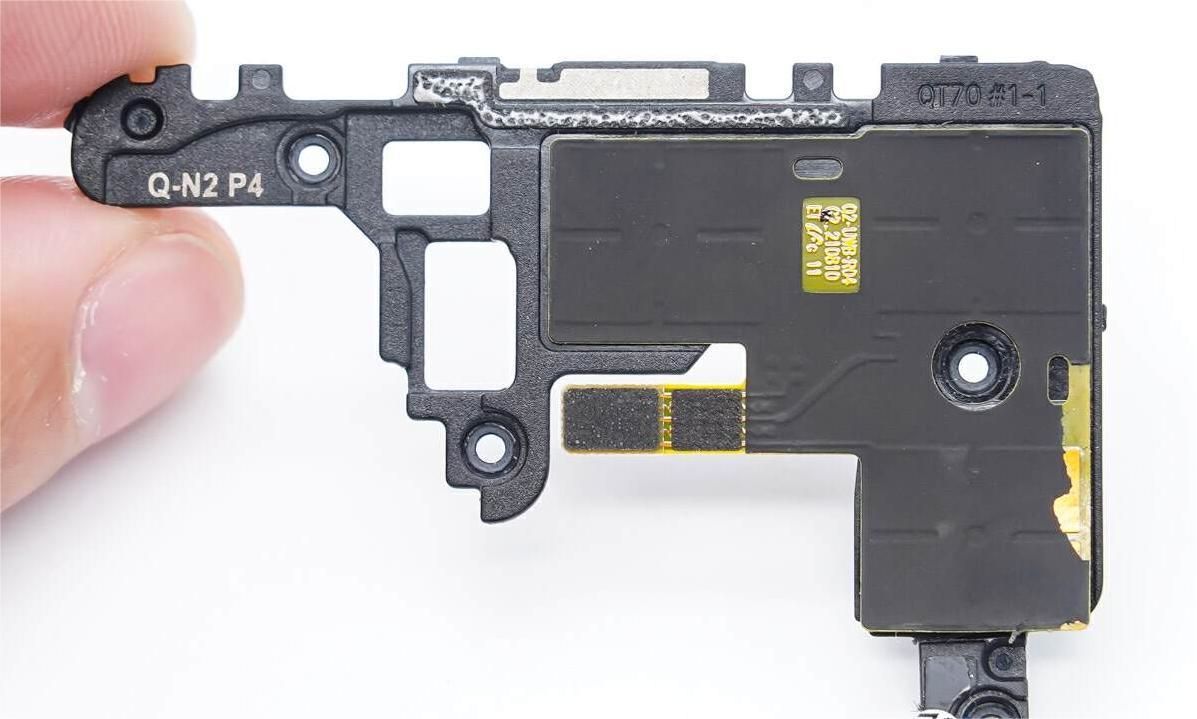
The cover plate on the top motherboard holds the UWB ultra-wideband antenna.
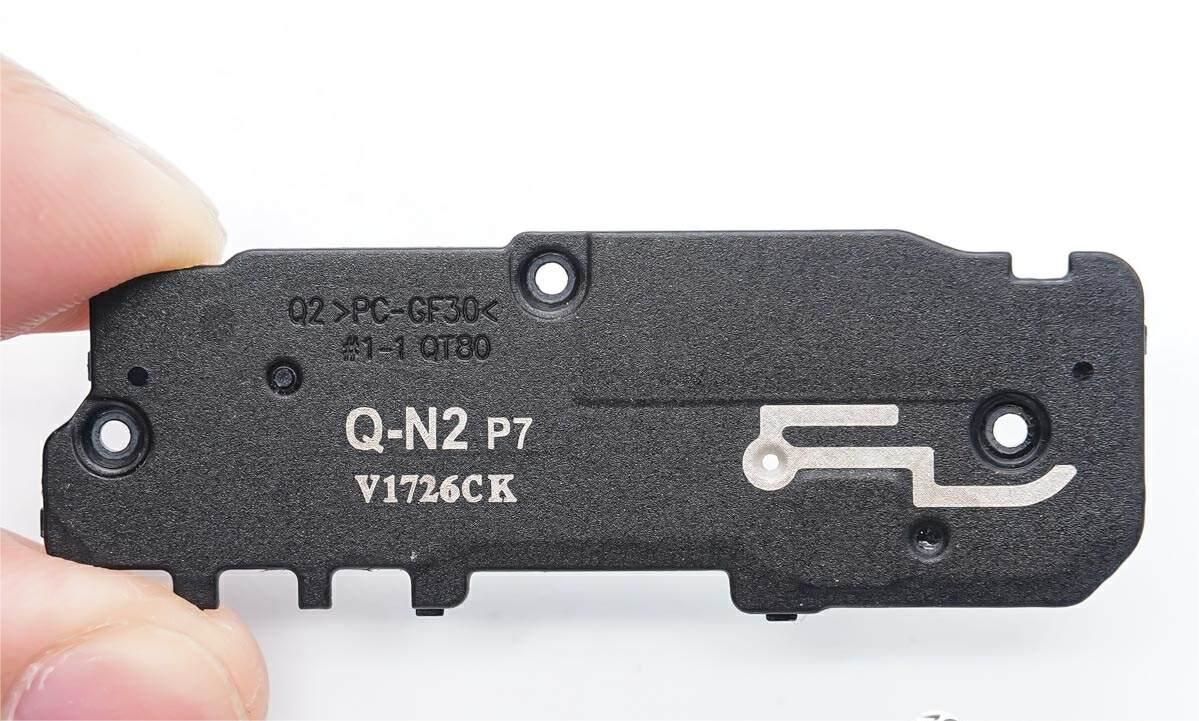
The cover plate on the bottom power input vignette has the LDS Laser Bluetooth antenna printed on it.
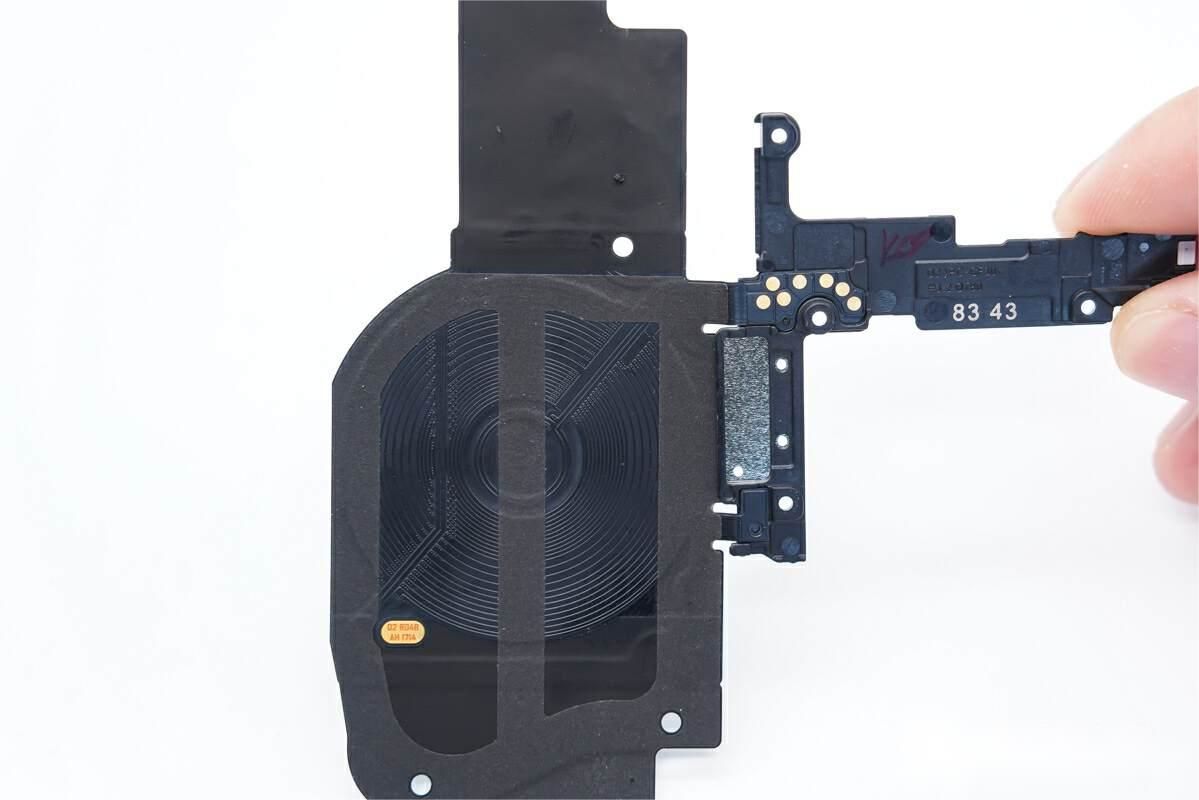
Wireless charging receiving coil is fixed on the middle plastic cover, and the row of wires is connected to the motherboard with exposed copper.
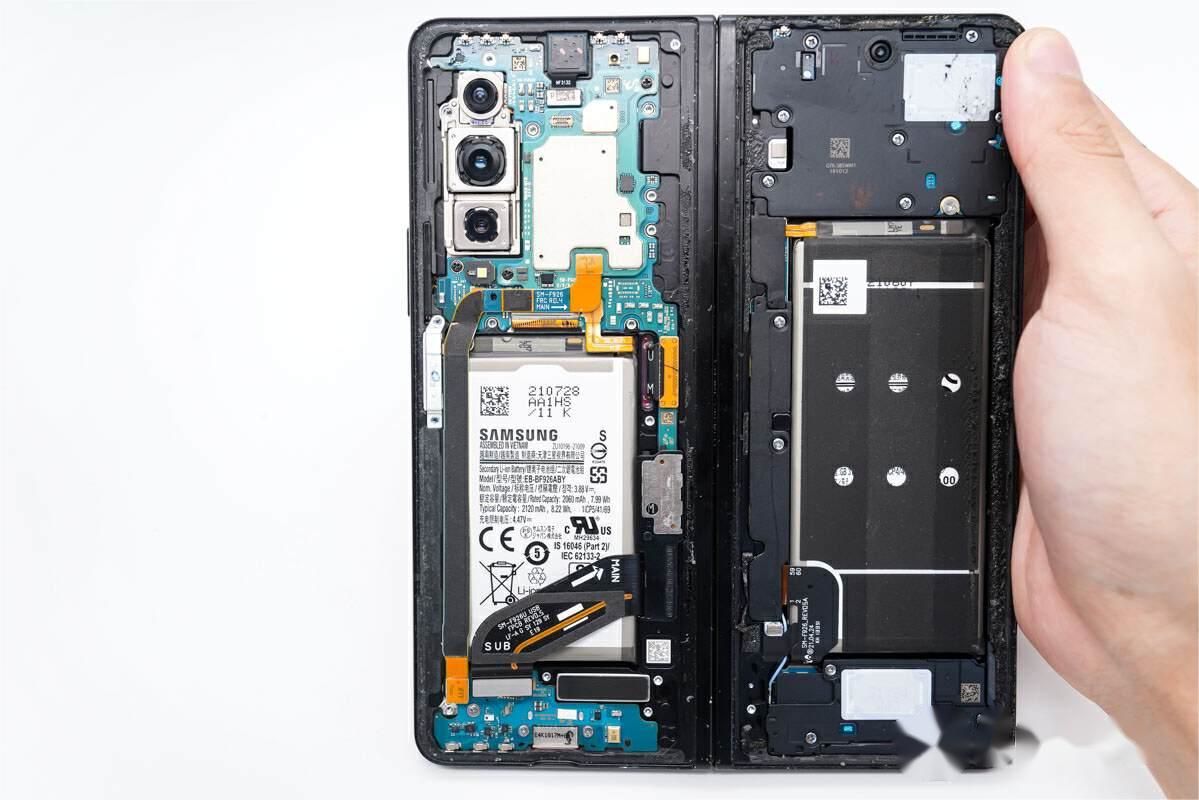
The internal structure of the cavity at a glance, the main board above, the battery in the middle, and the row of wires of the power input small board at the bottom, all connected by connectors, has a highly modular design.
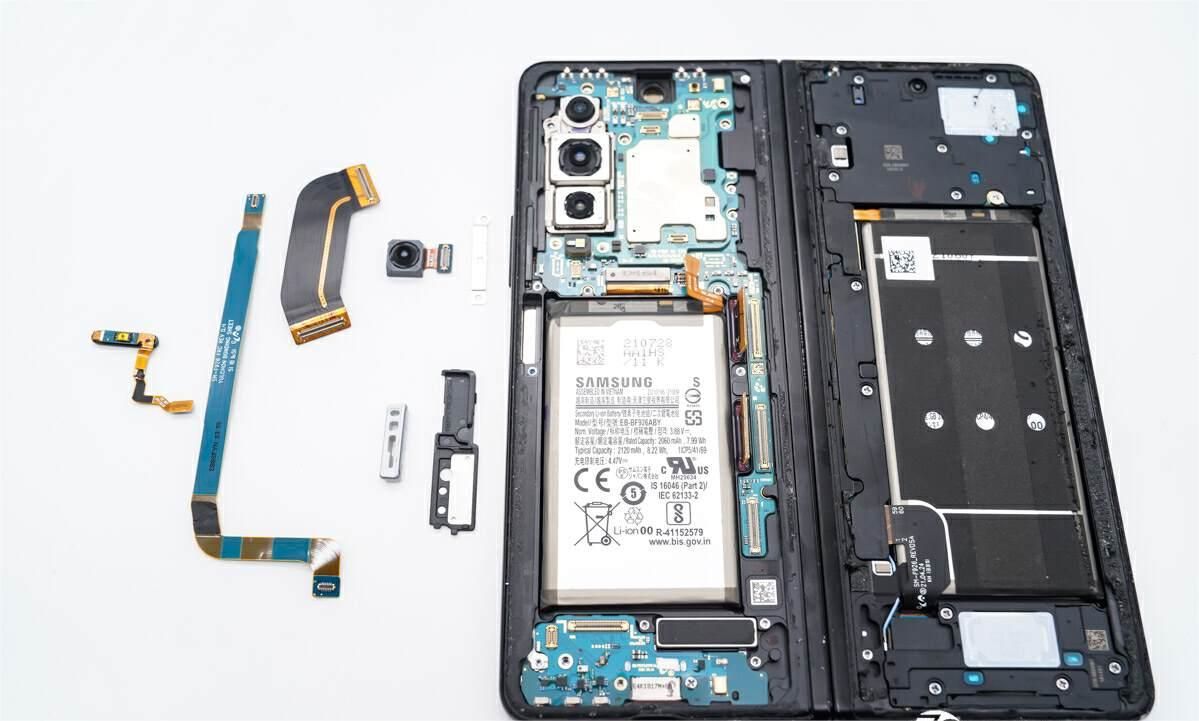
Pick open the connector and remove the row of wires connecting the components.
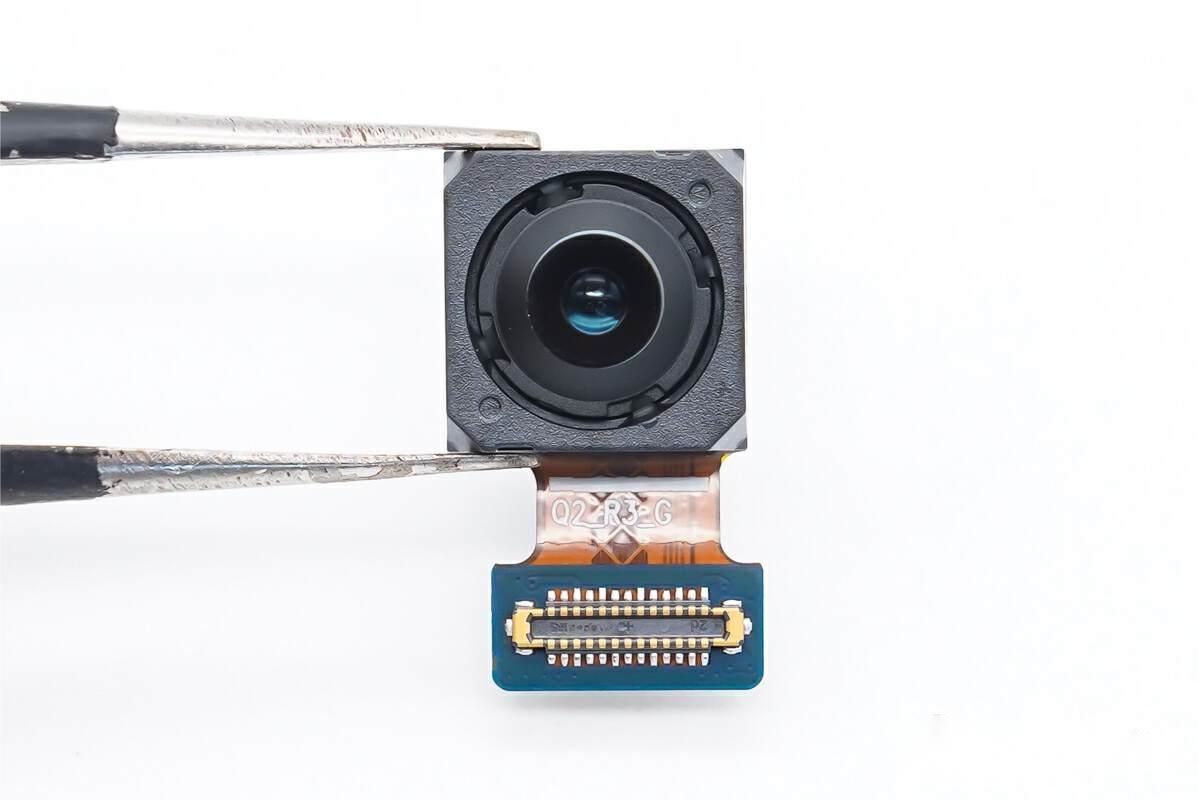
Close-up of the 4MP under-screen camera module.
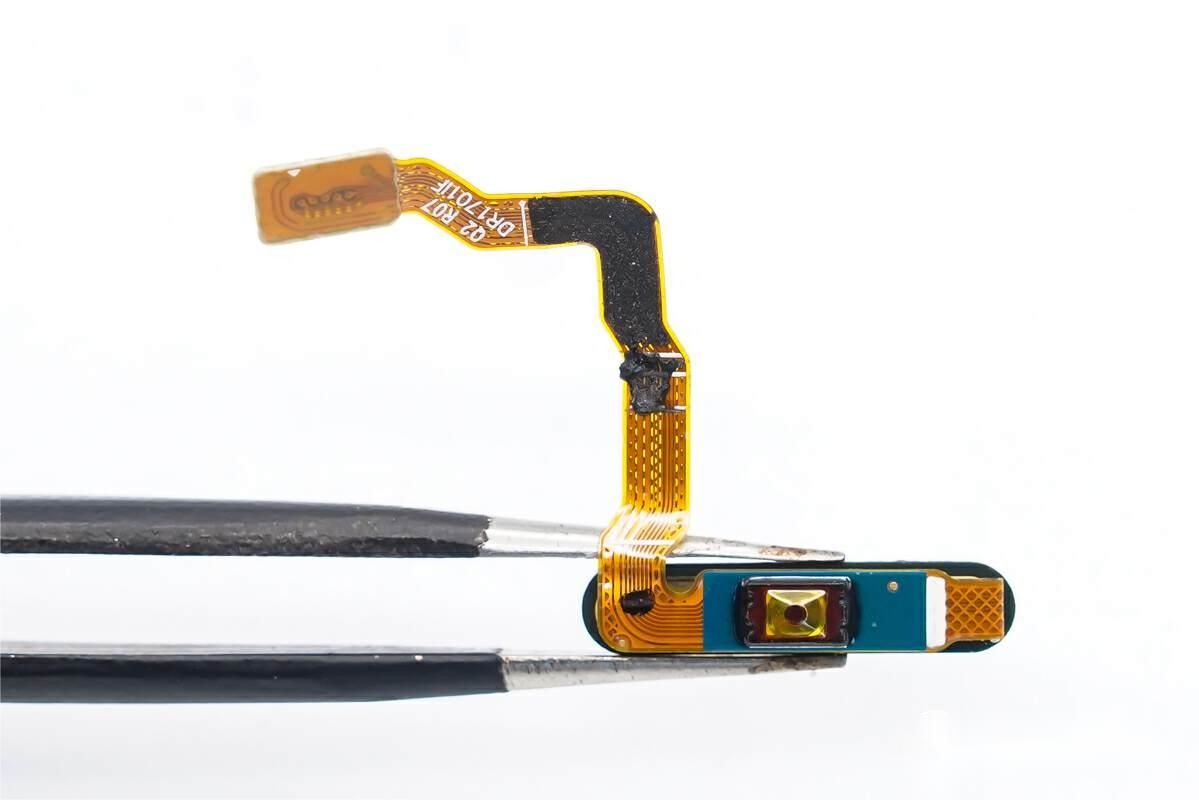
Fingerprint recognition power button module.
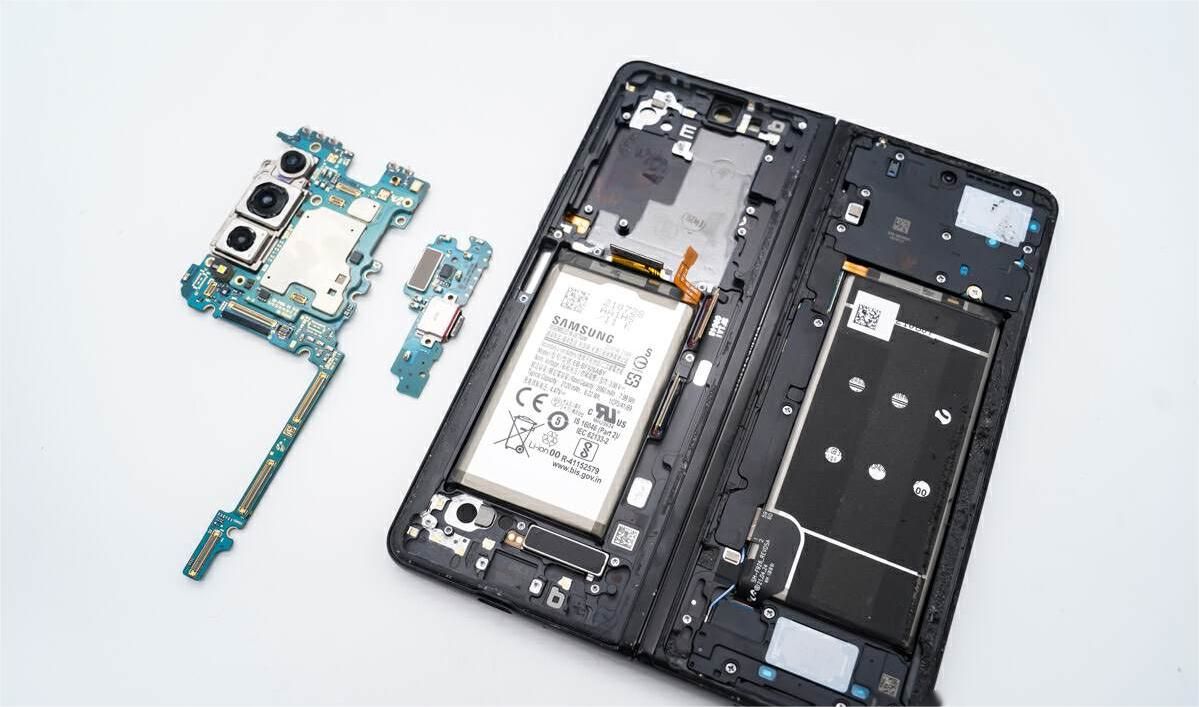
Removing the motherboard and power input small board.
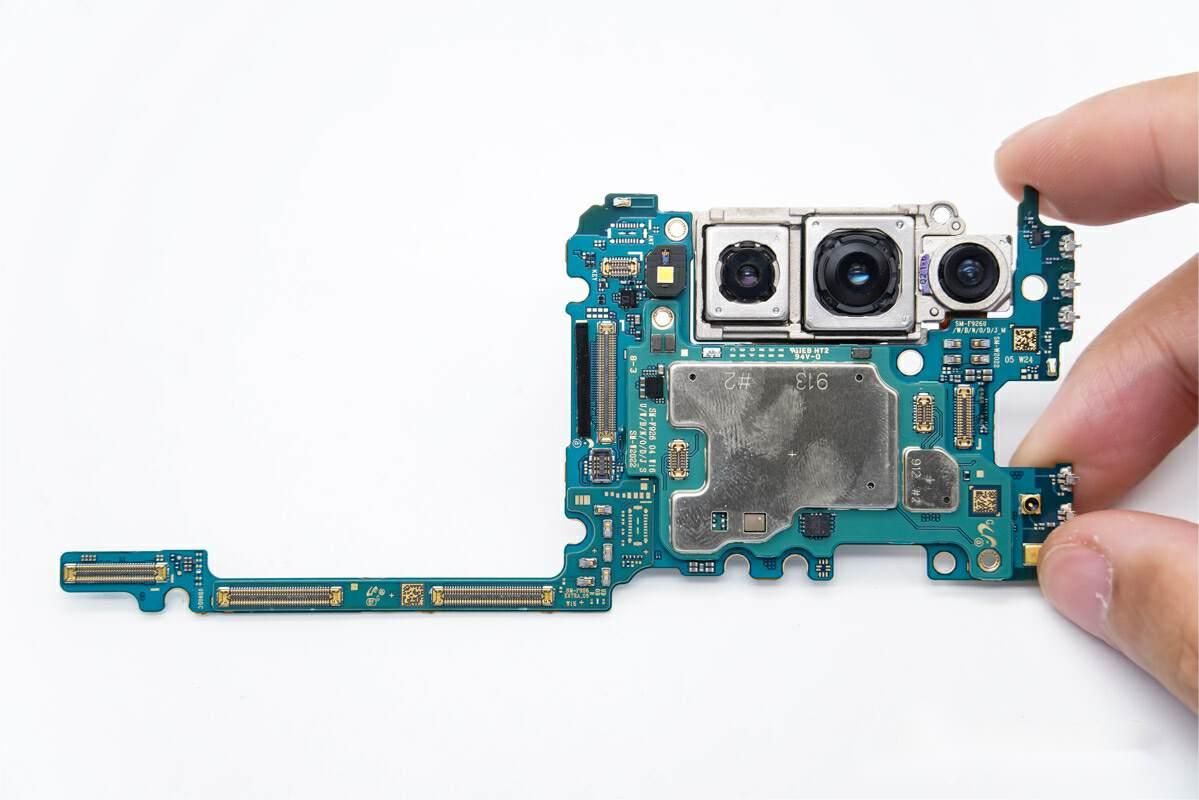
The motherboard has a double-layer design, with the upper layer protected by a shield. There is a camera module fixed at the edge of the motherboard.
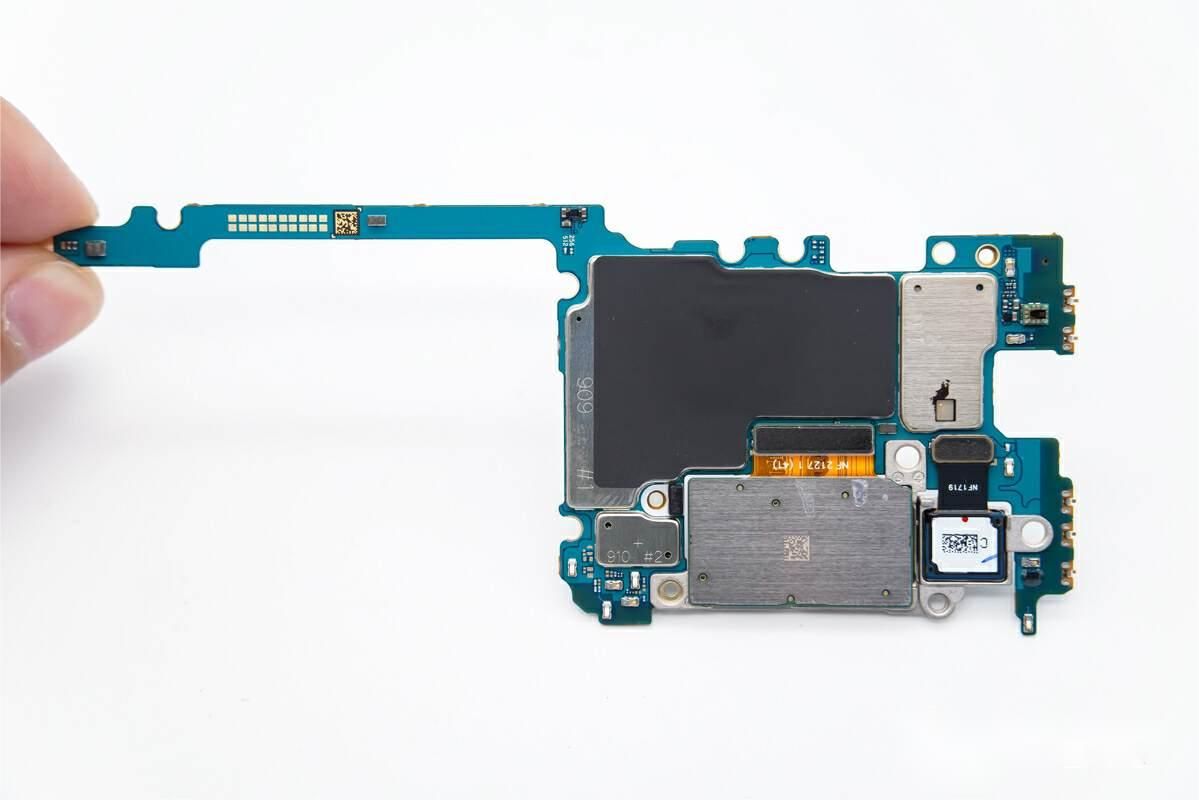
The other side of the motherboard structure at a glance, the main ICs are protected by shields and have heat dissipation stickers.
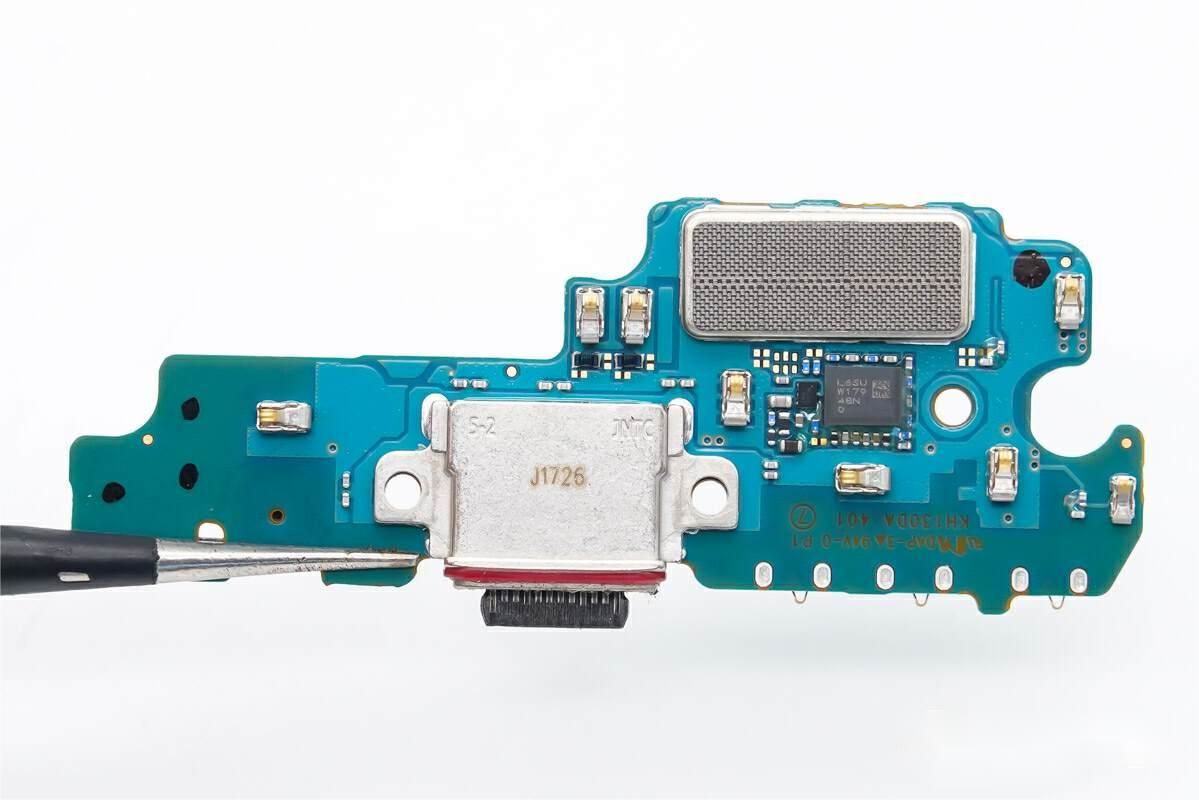
The circuitry on one side of the power input board is also protected by a shield.
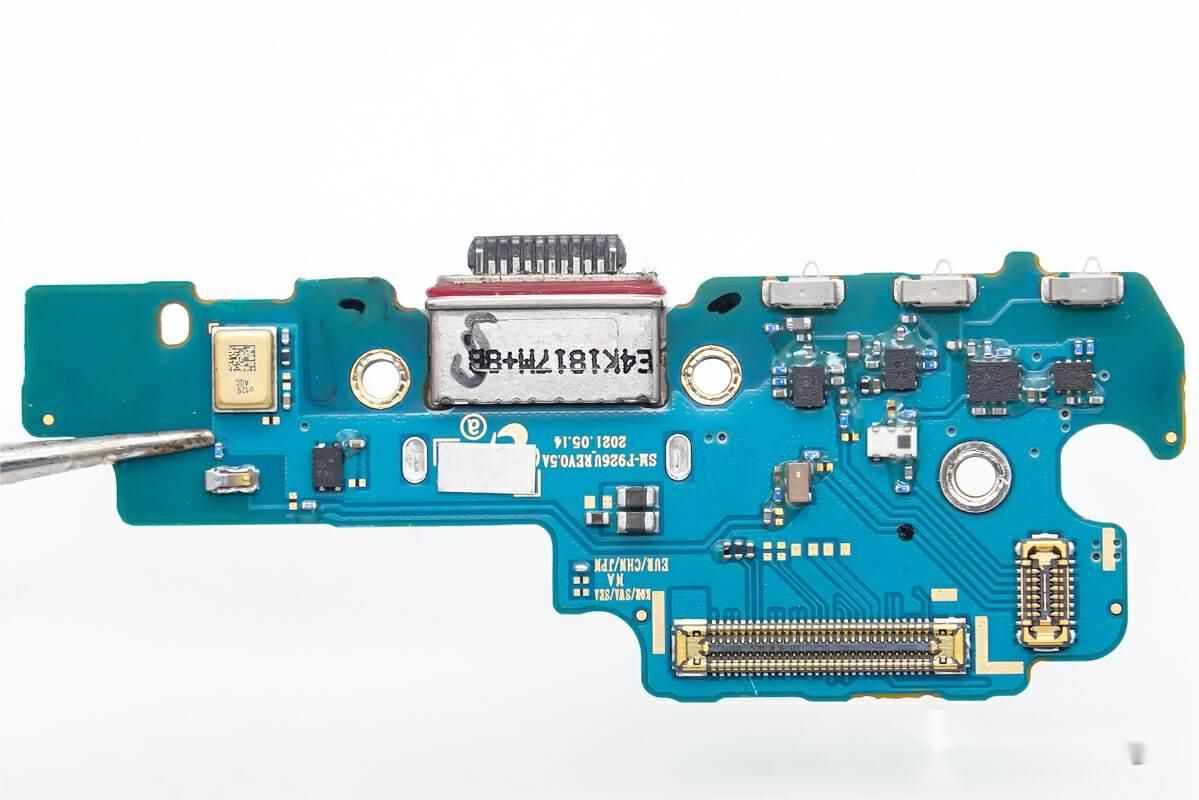
The circuitry on one side of the power input board is at a glance.
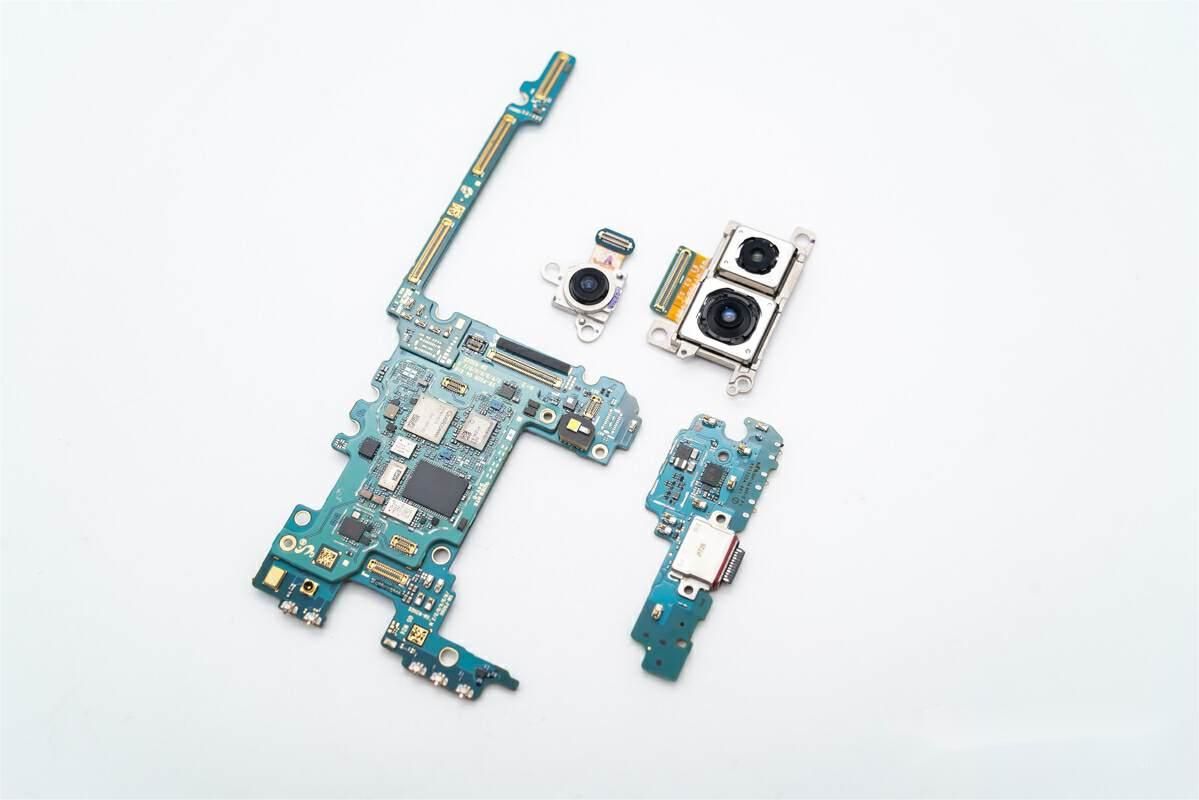
Remove the camera and remove the shields on the motherboard and power input board.
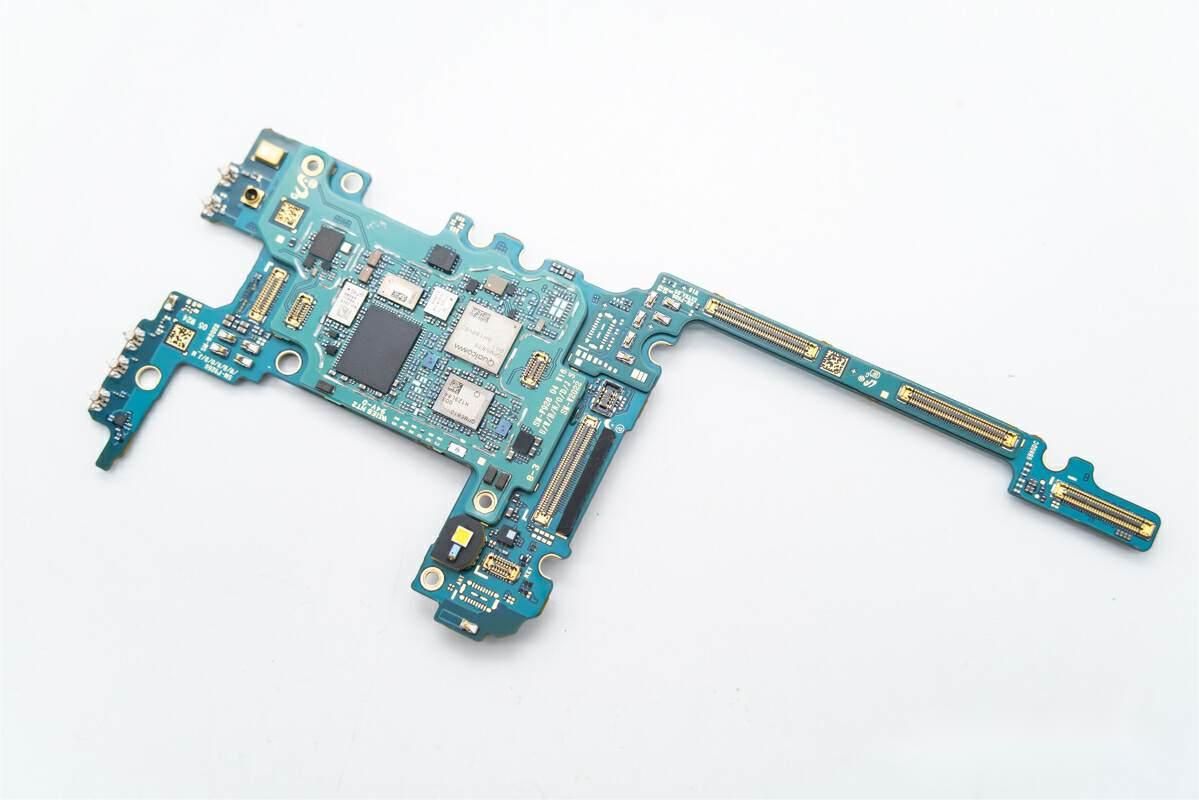
The circuitry on the motherboard side at a glance.
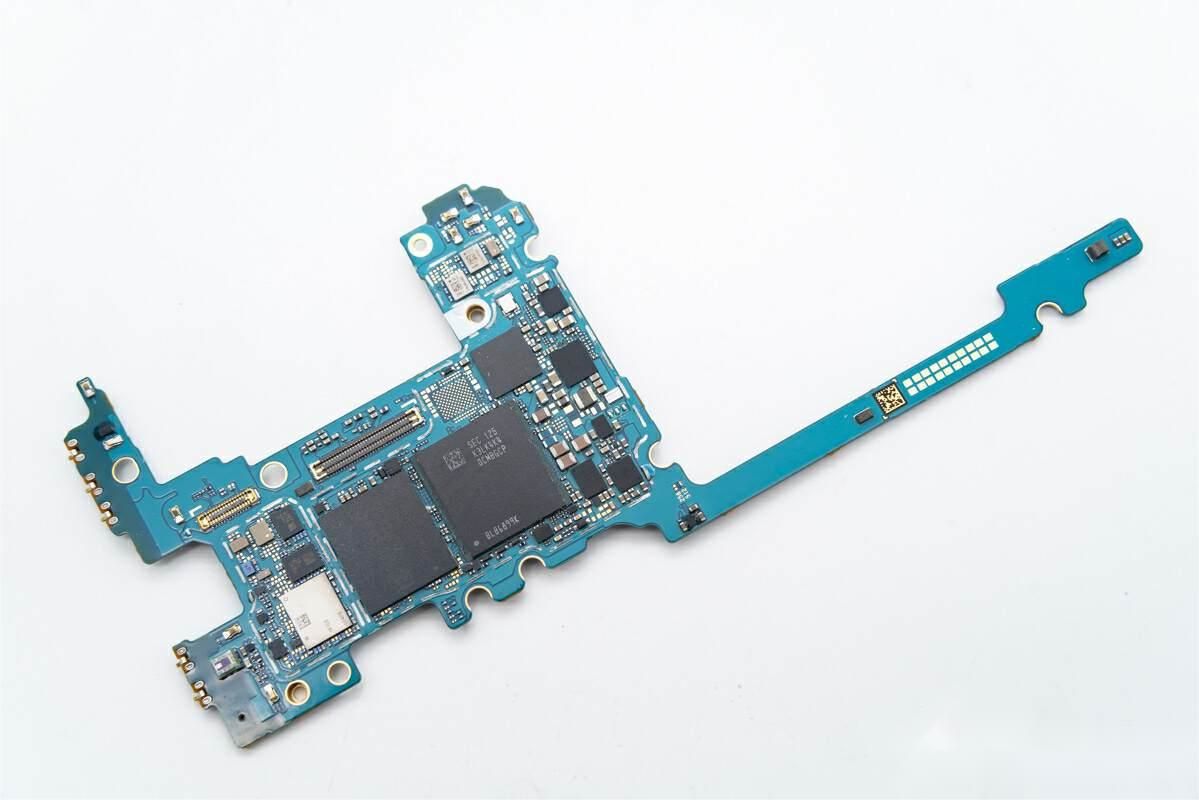
The circuitry on the other side of the motherboard at a glance.
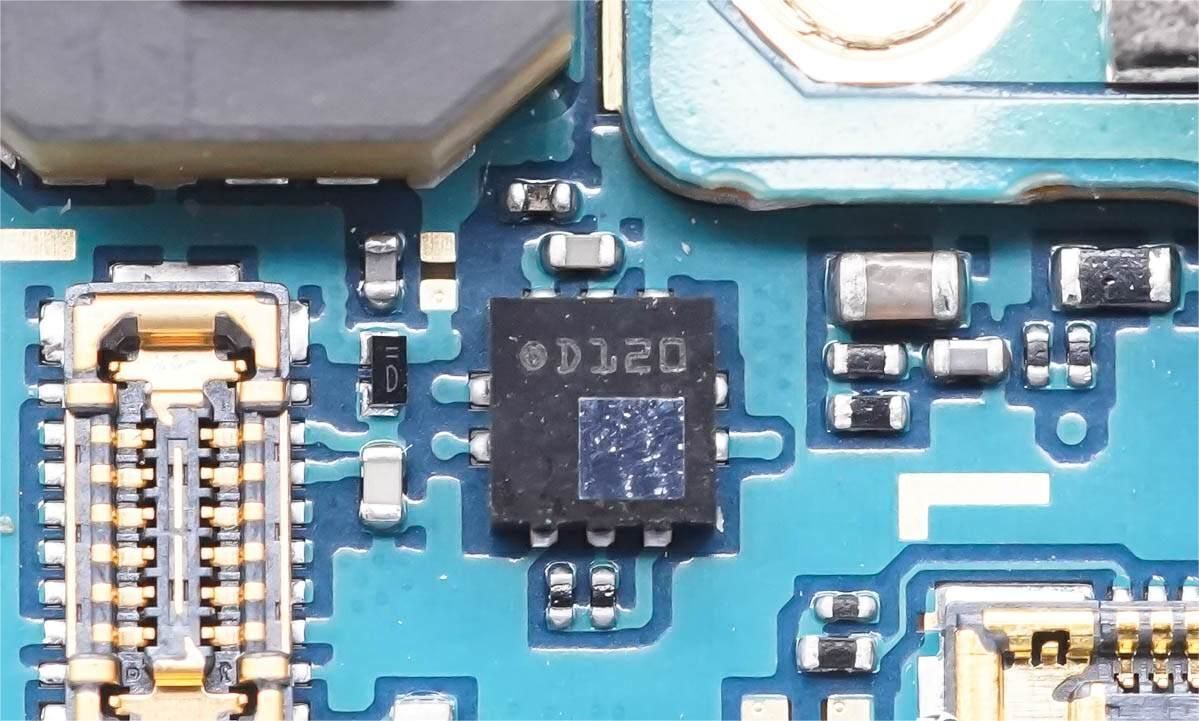
The IC of silkscreen D120.
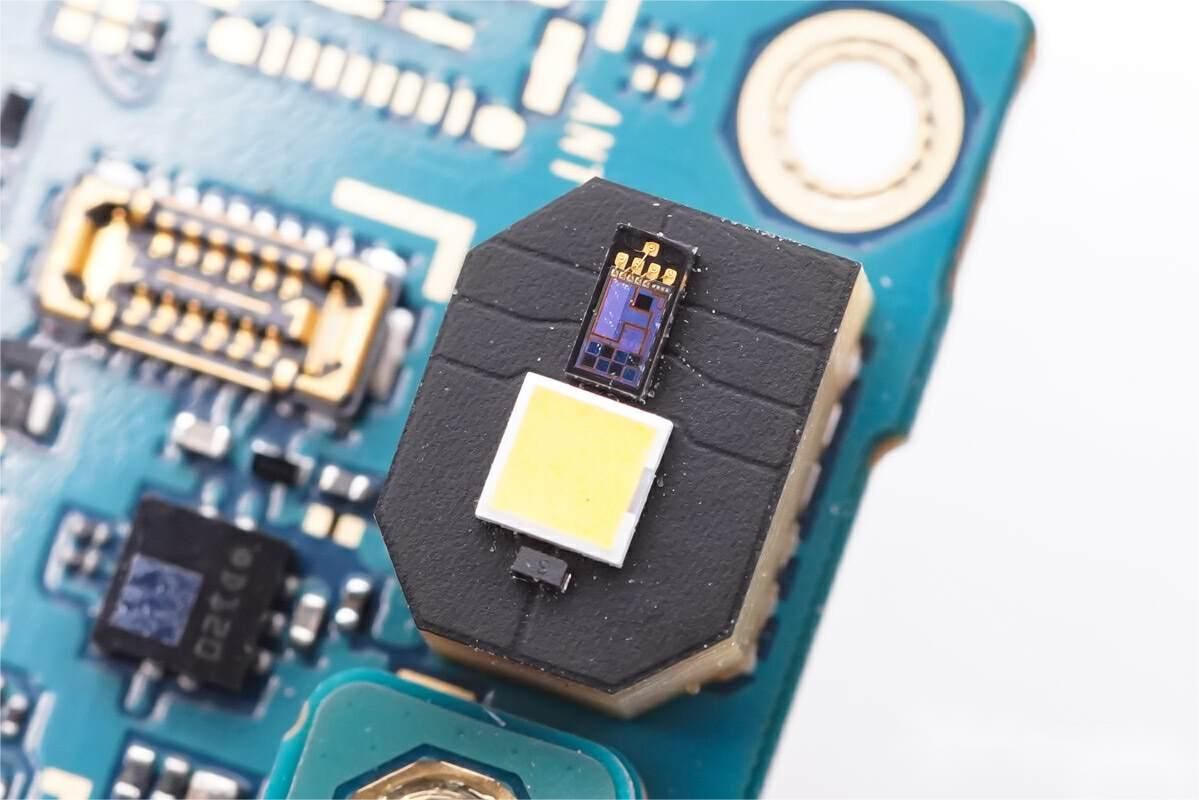
The flash and ambient light sensor soldered on the main board.
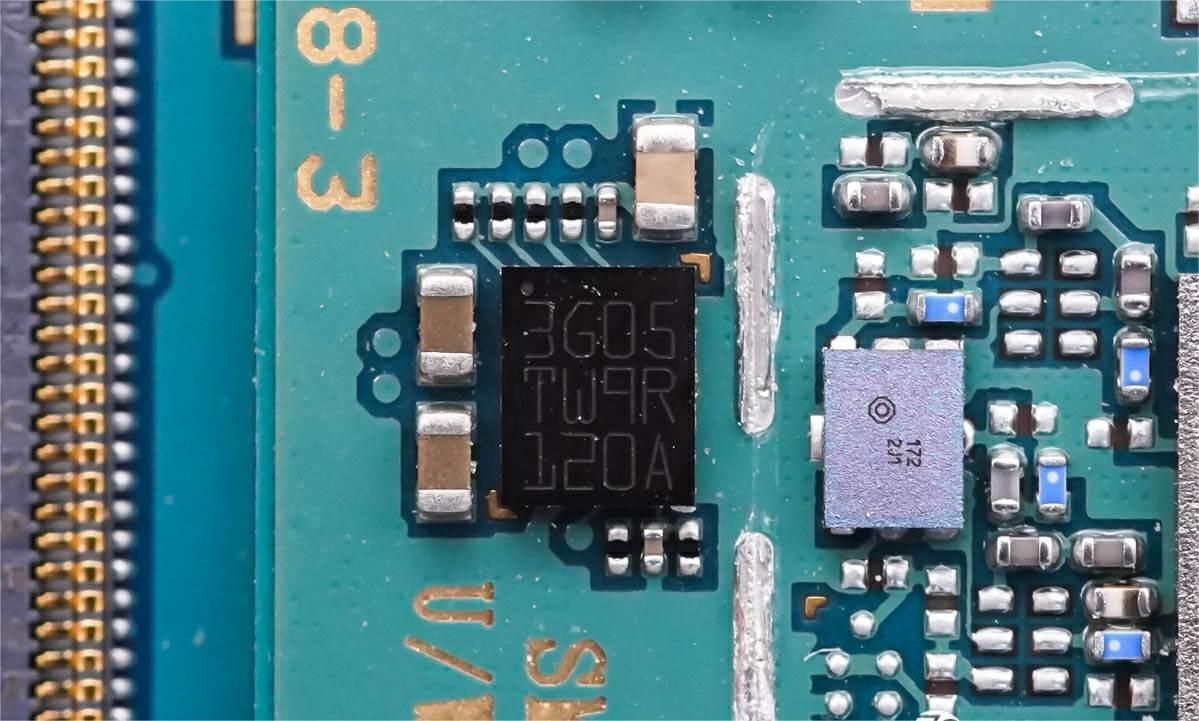
Silkscreened 3F05 TW9R 120A IC.
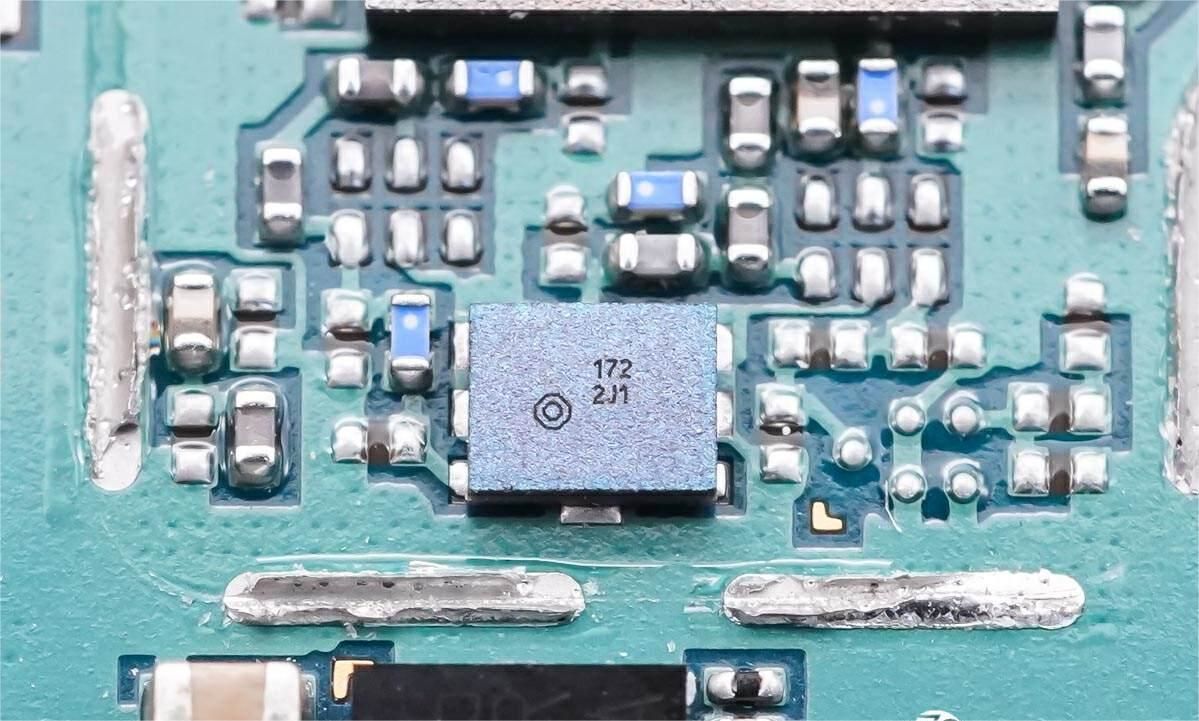
Silkscreened 172 2J1 IC.
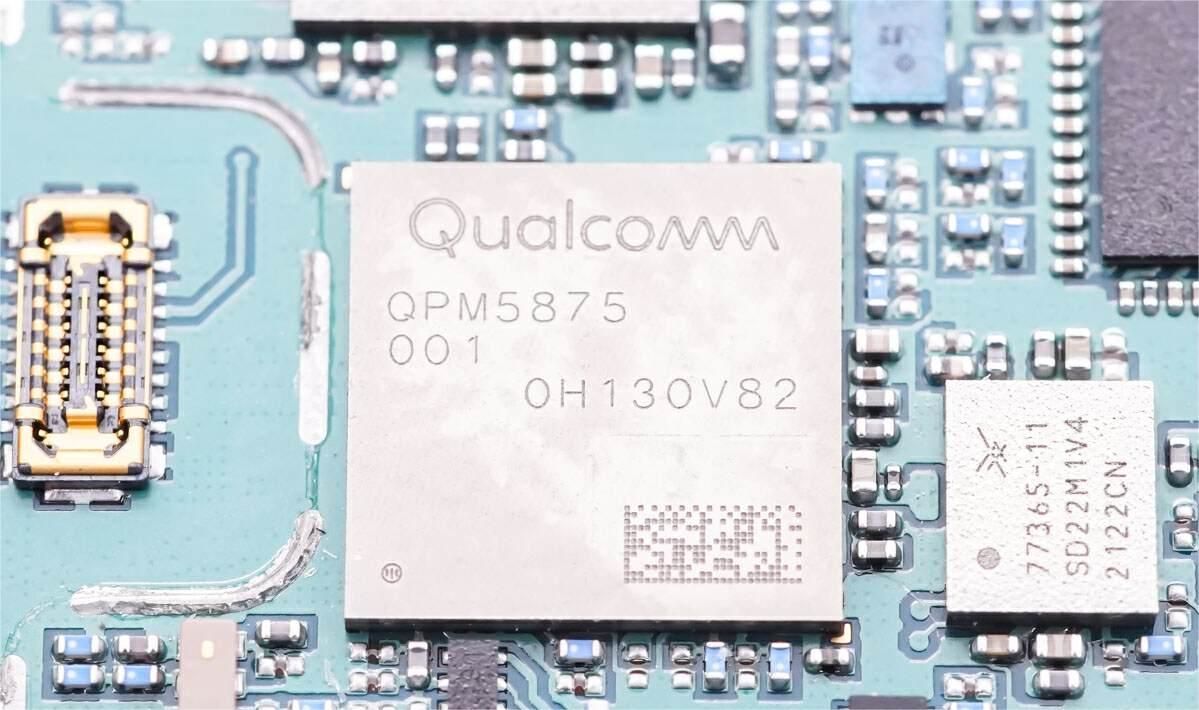
Qualcomm Qualcomm QPM5875 IC.
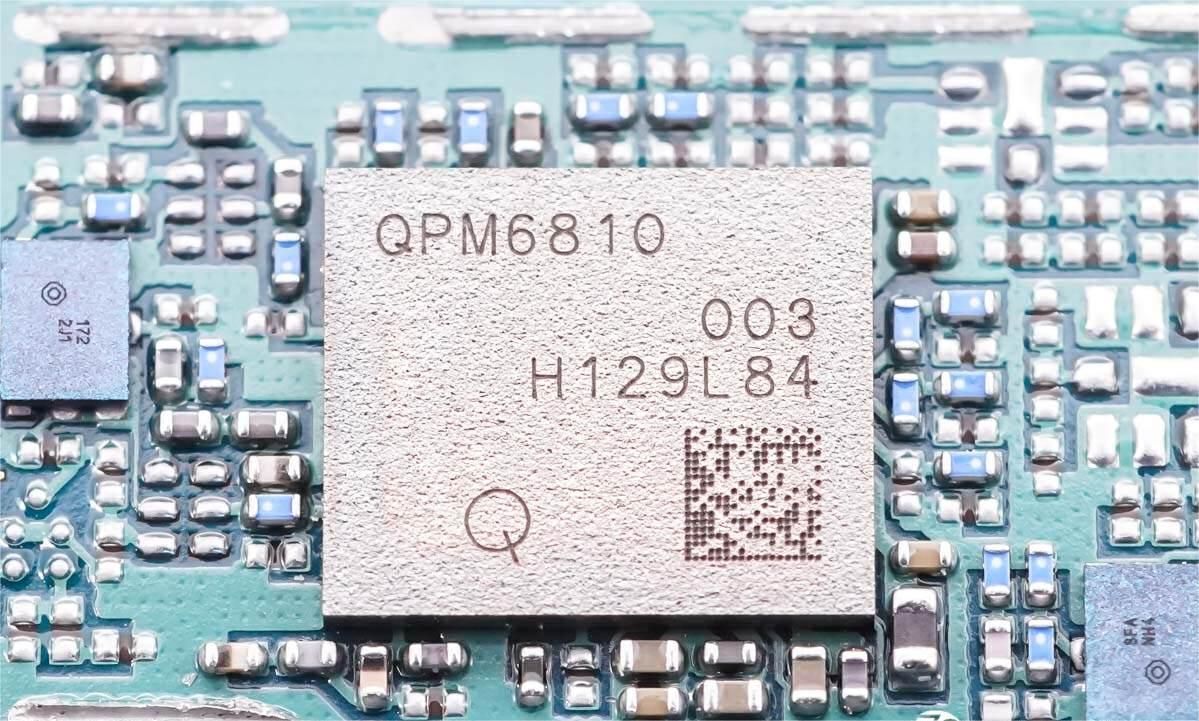
Qualcomm Qualcomm QPM6810 RF front-end module chip.
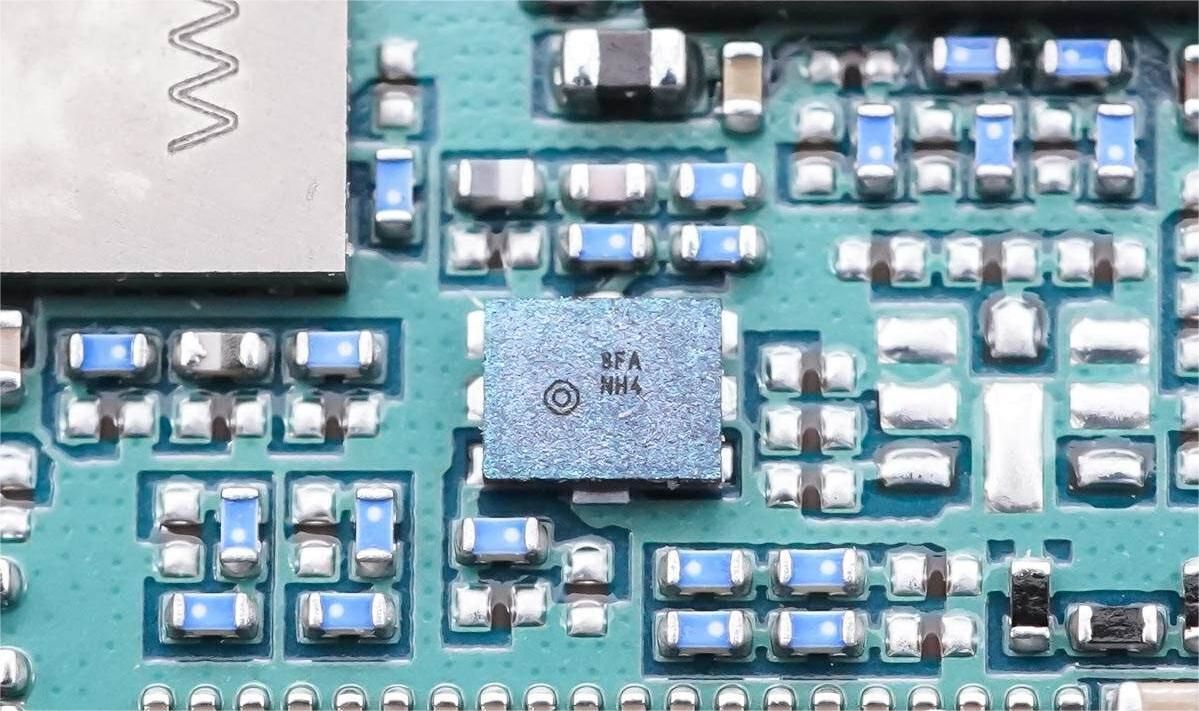
IC for silkscreened 8FA NH4.
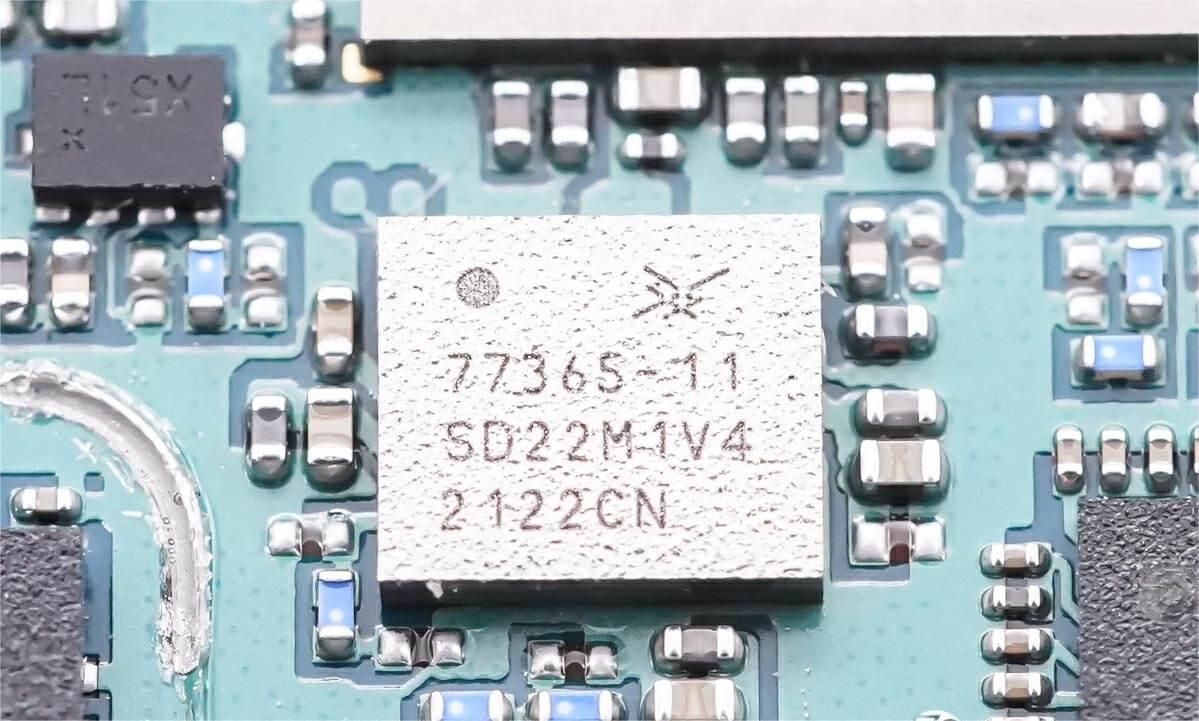
Skyworks SKY77365-11 GSM/GPRS/EDGE Quad-band Power Amplifier Module (PAM).
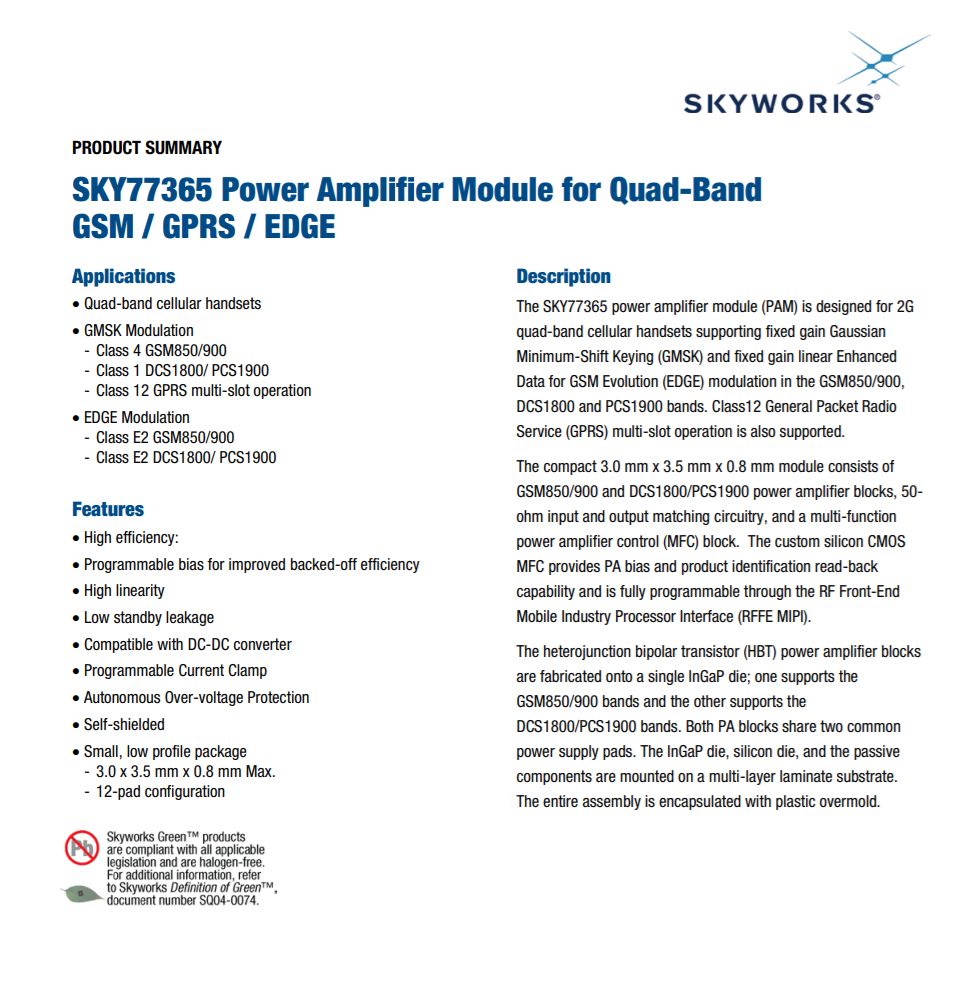
Skyworks SKY77365-11 detail diagram.
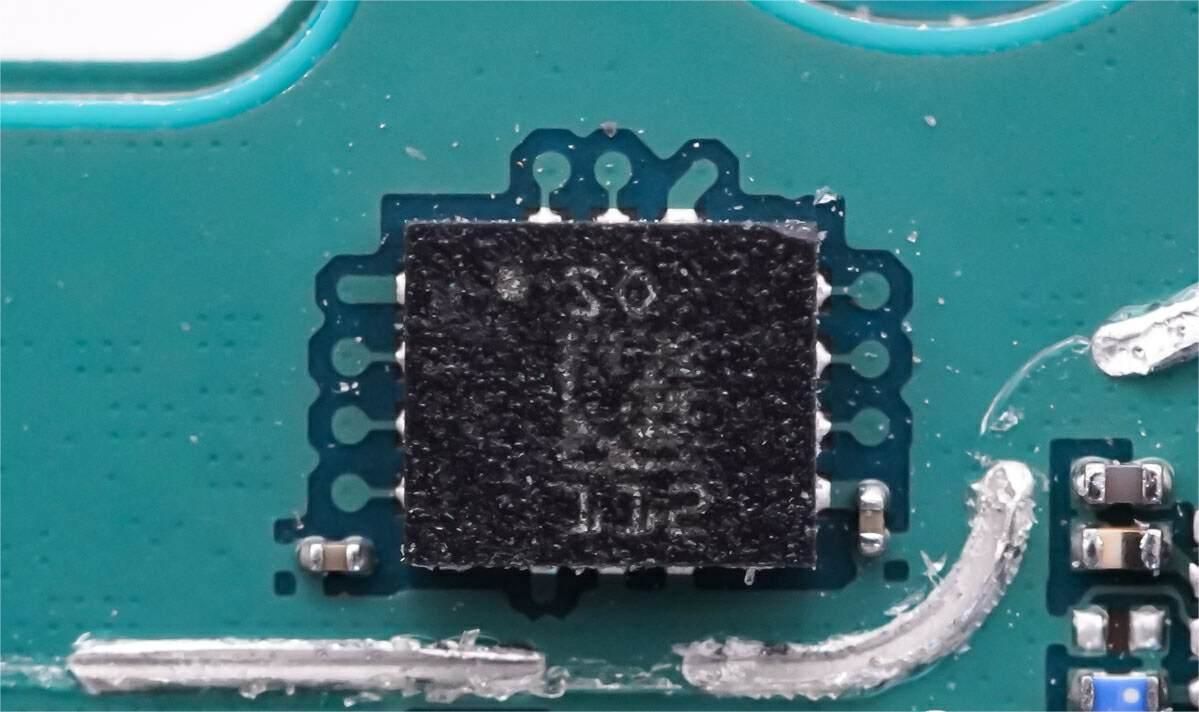
Six-axis sensor with silkscreened 2D code.
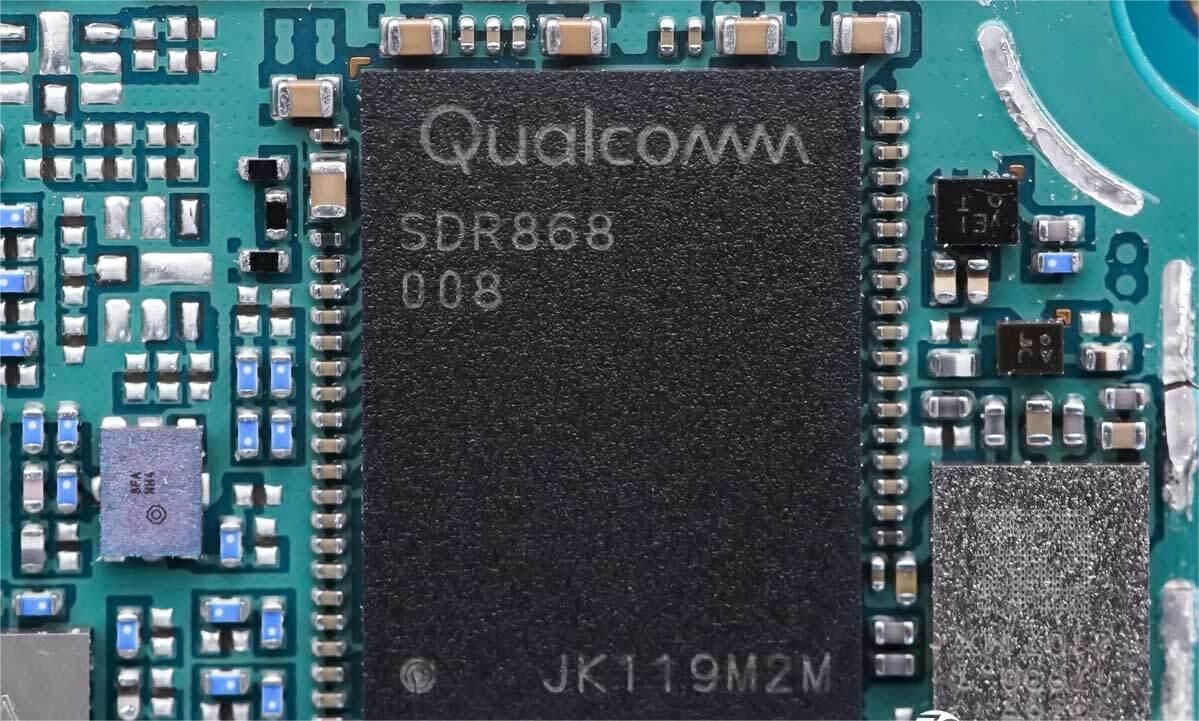
Qualcomm Qualcomm SDR868 RF transceiver chip.
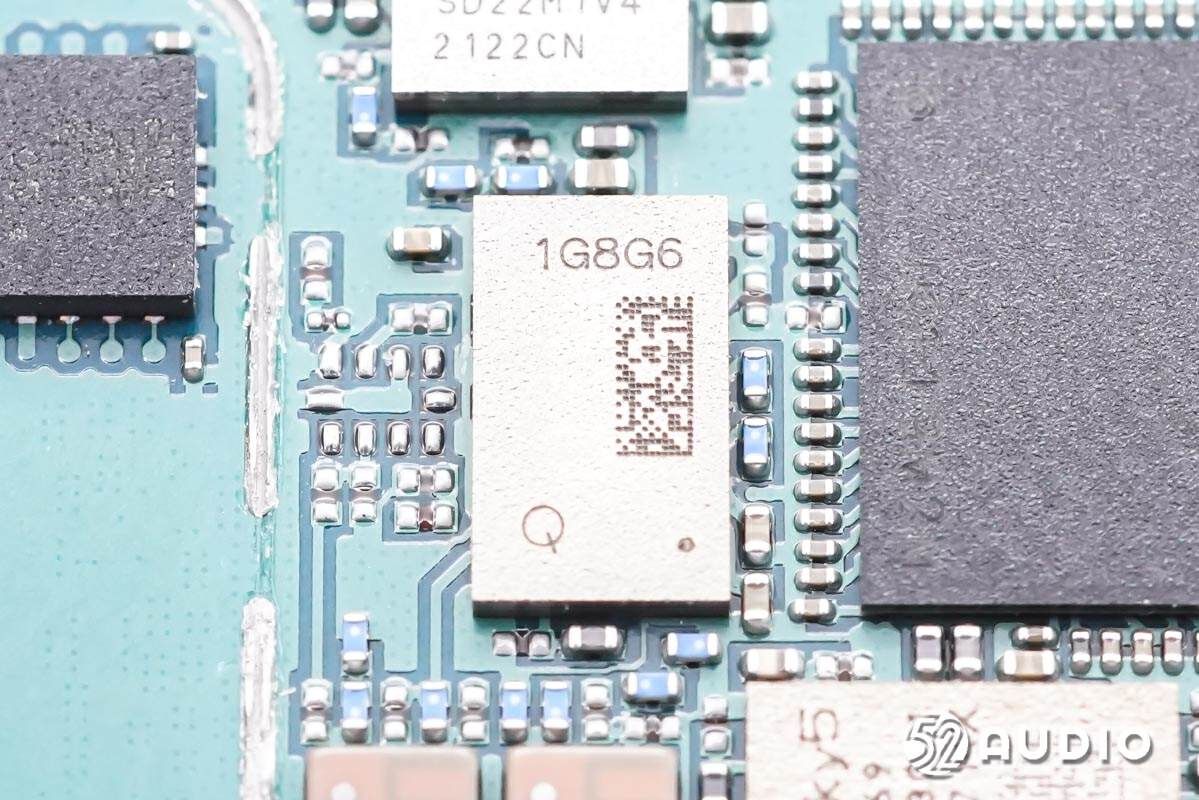
Silkscreened 1G8G6 IC.
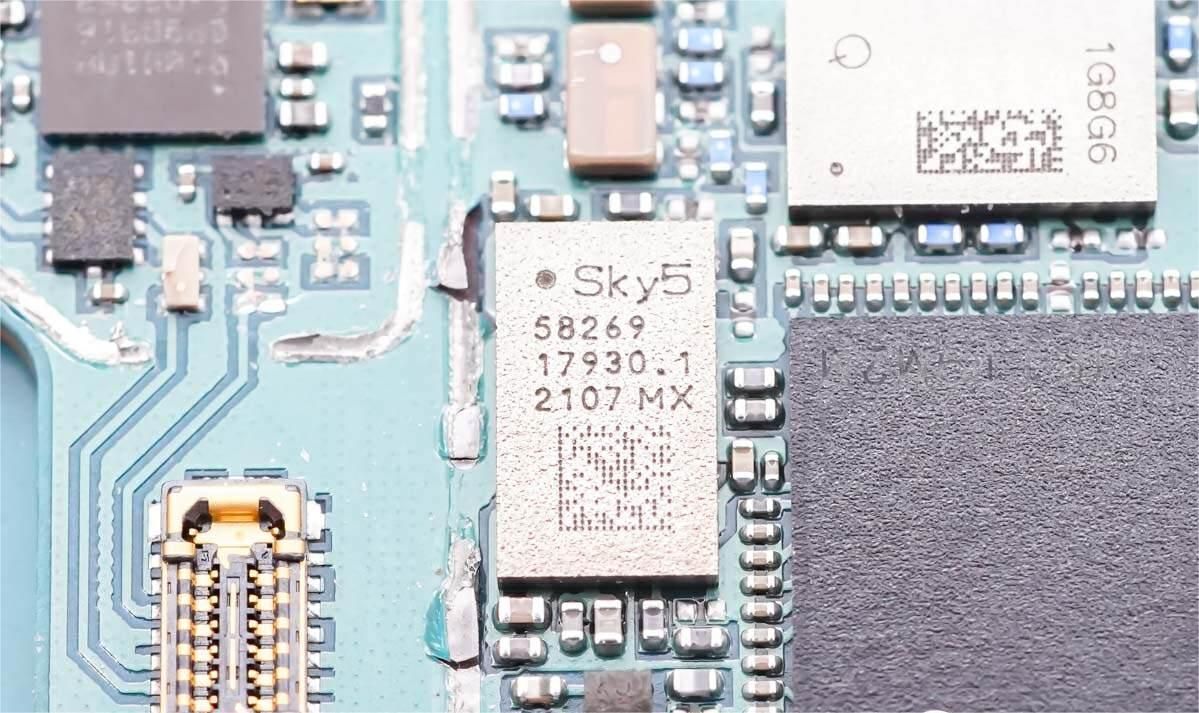
Silkscreened SKy5 IC.
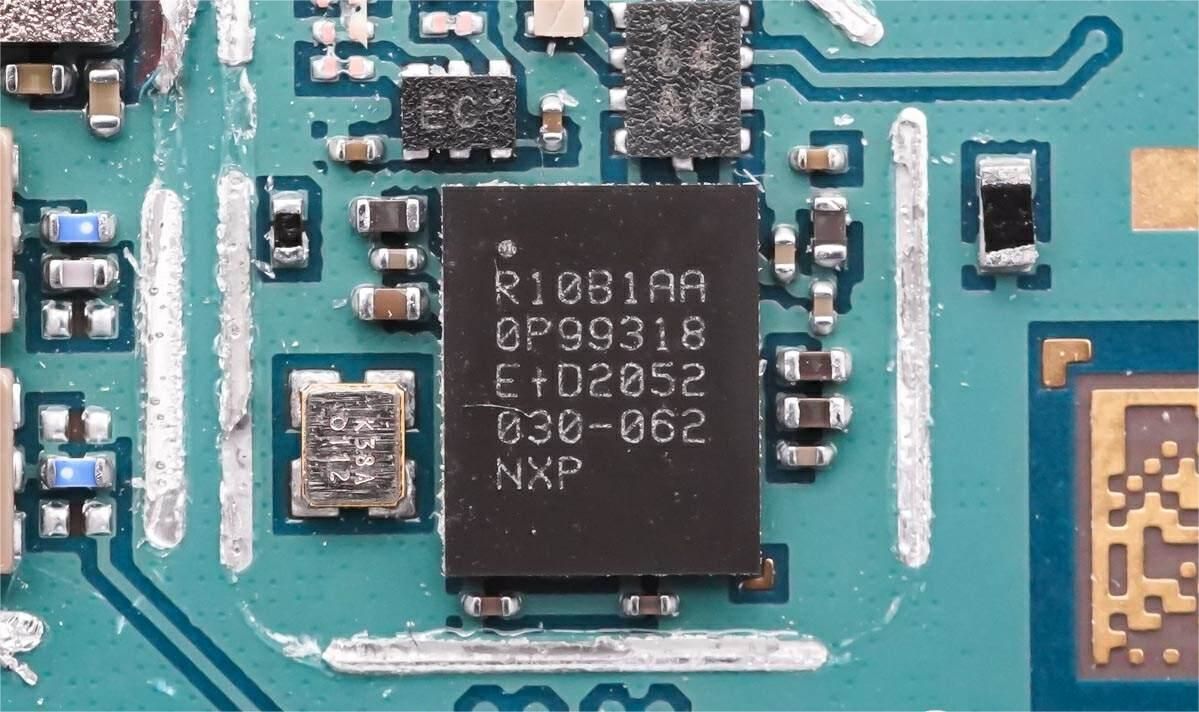
NXP NXP R10B1AA ultra-wideband (UWB) transceiver chip.
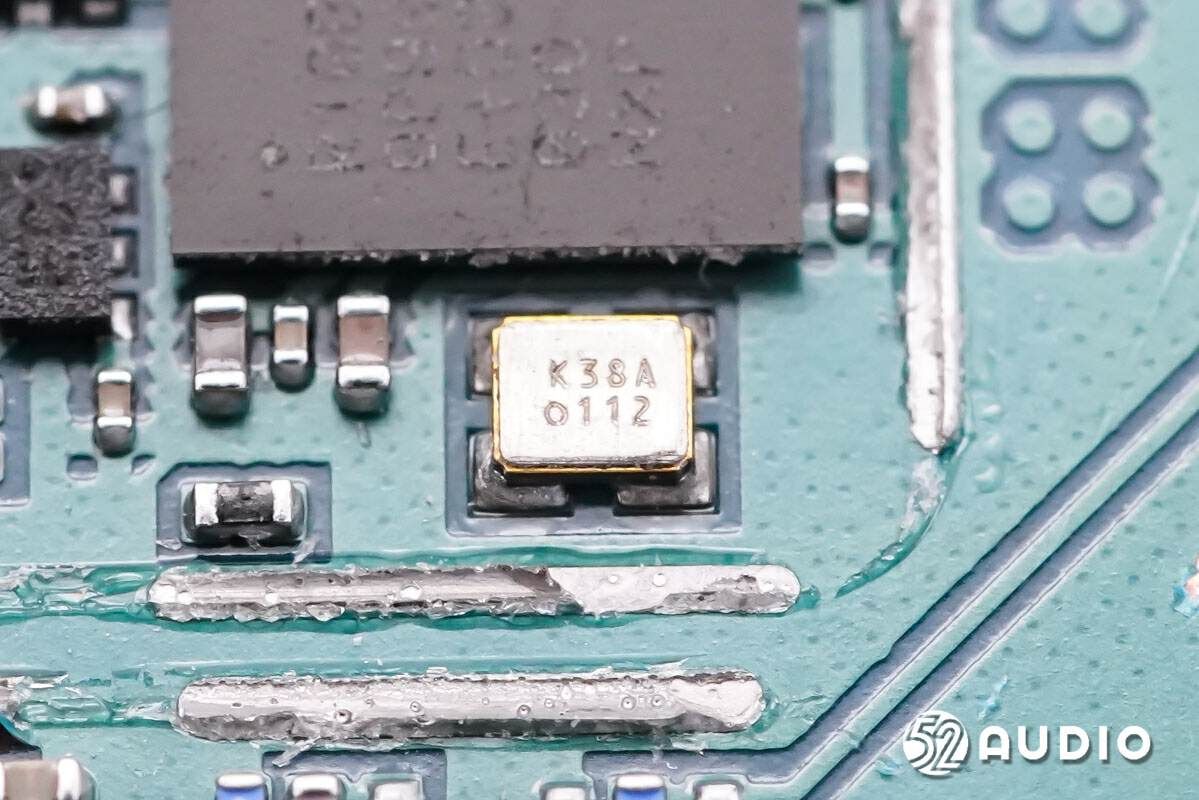
Closeup of the crystal that clocks the UWB chip.
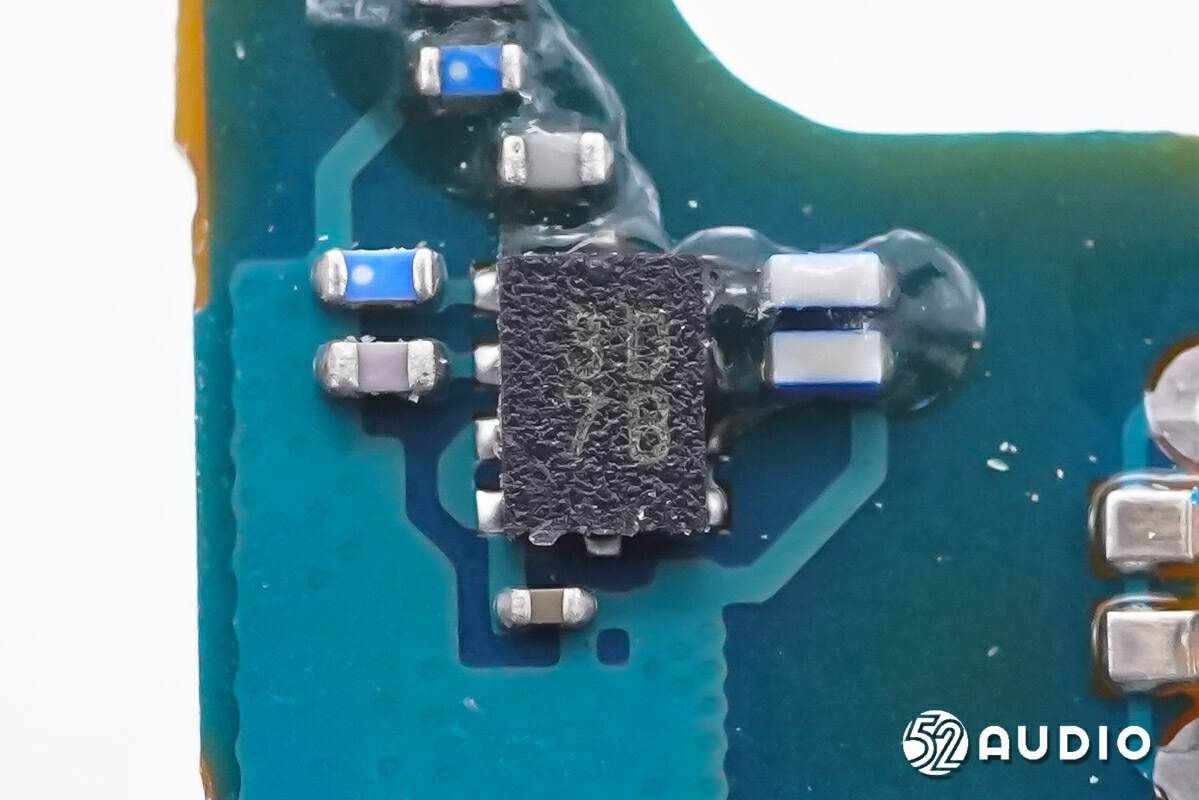
Silkscreened 3D 7B IC.
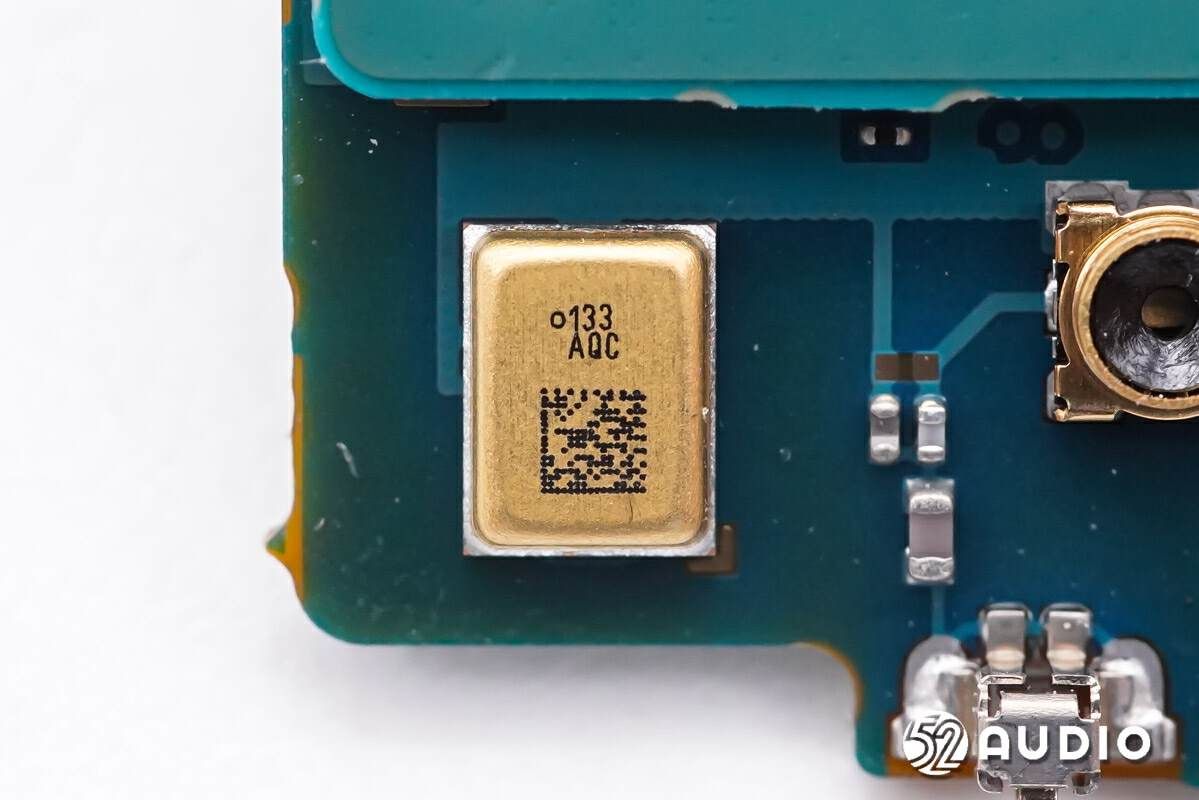
Laser-engraved 2D MEMS microphone for voice call function pickup.
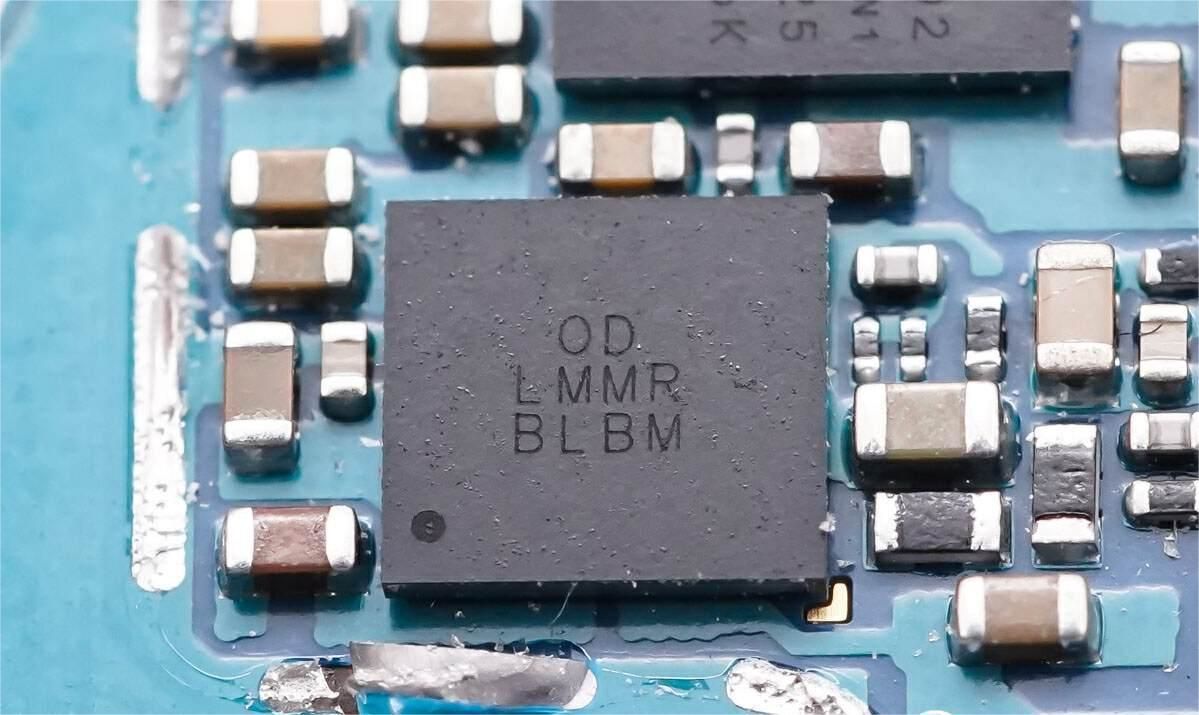
Silkscreened OD LMMR BLNM IC.
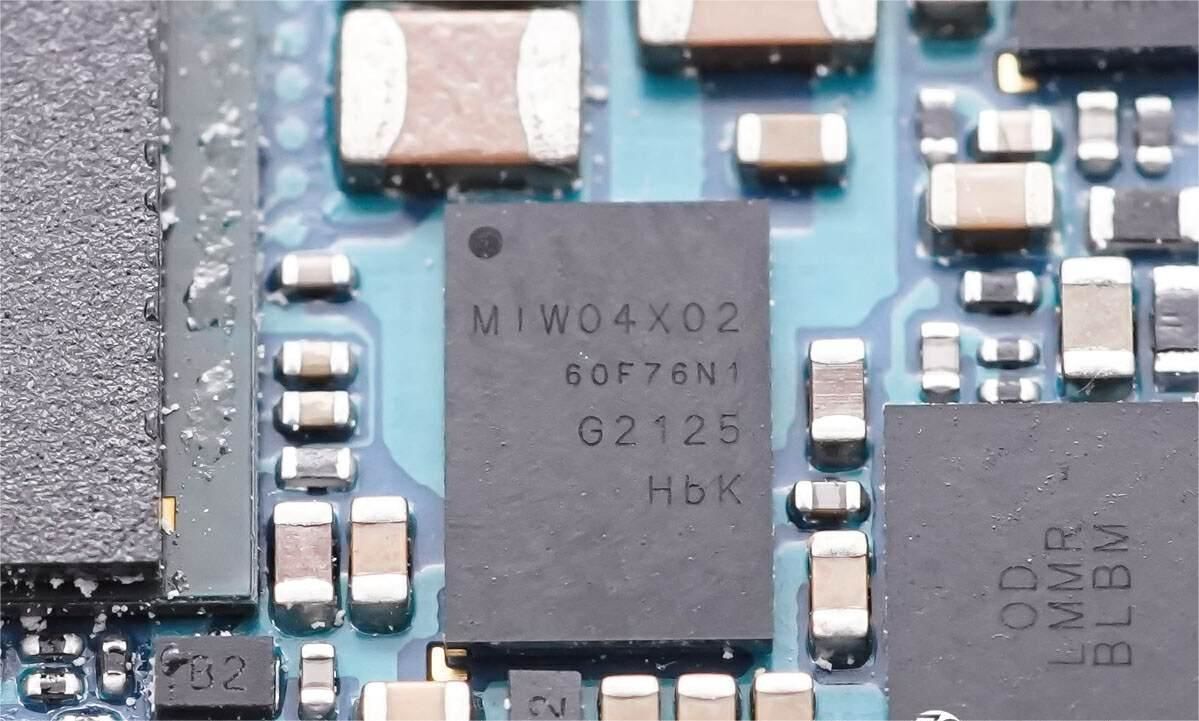
Silkscreened MIW04X02 60F76N1 IC.
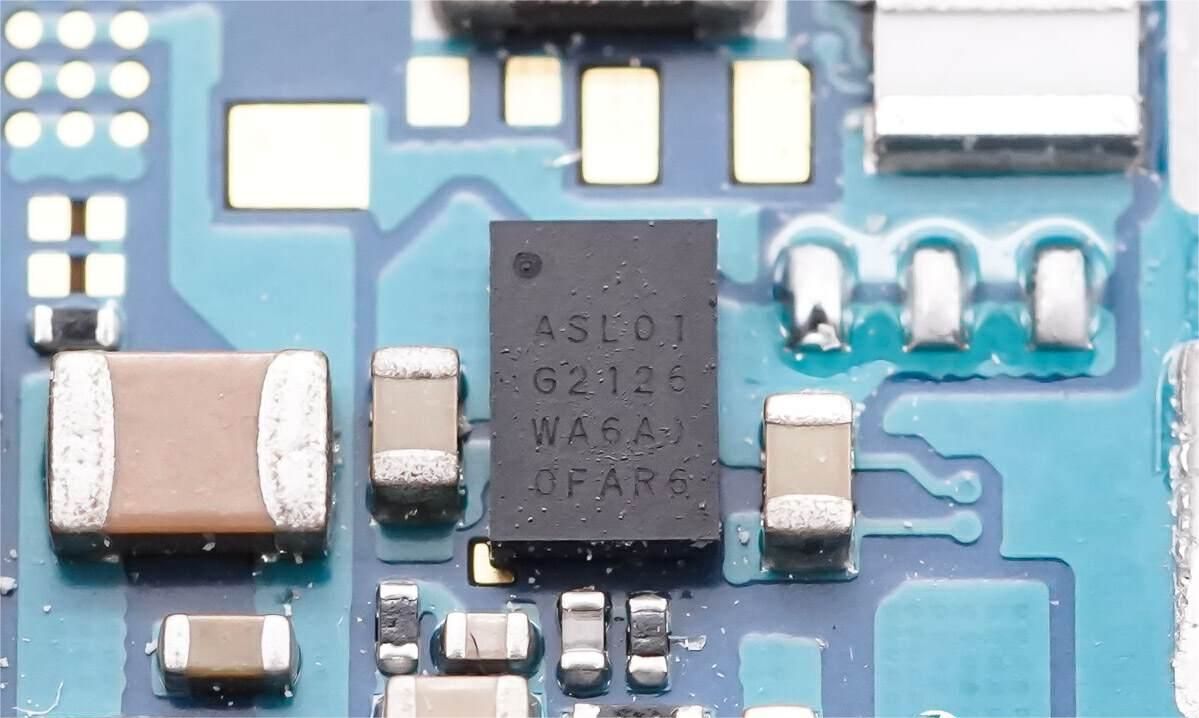
Silkscreen ASL01 G2126 IC.
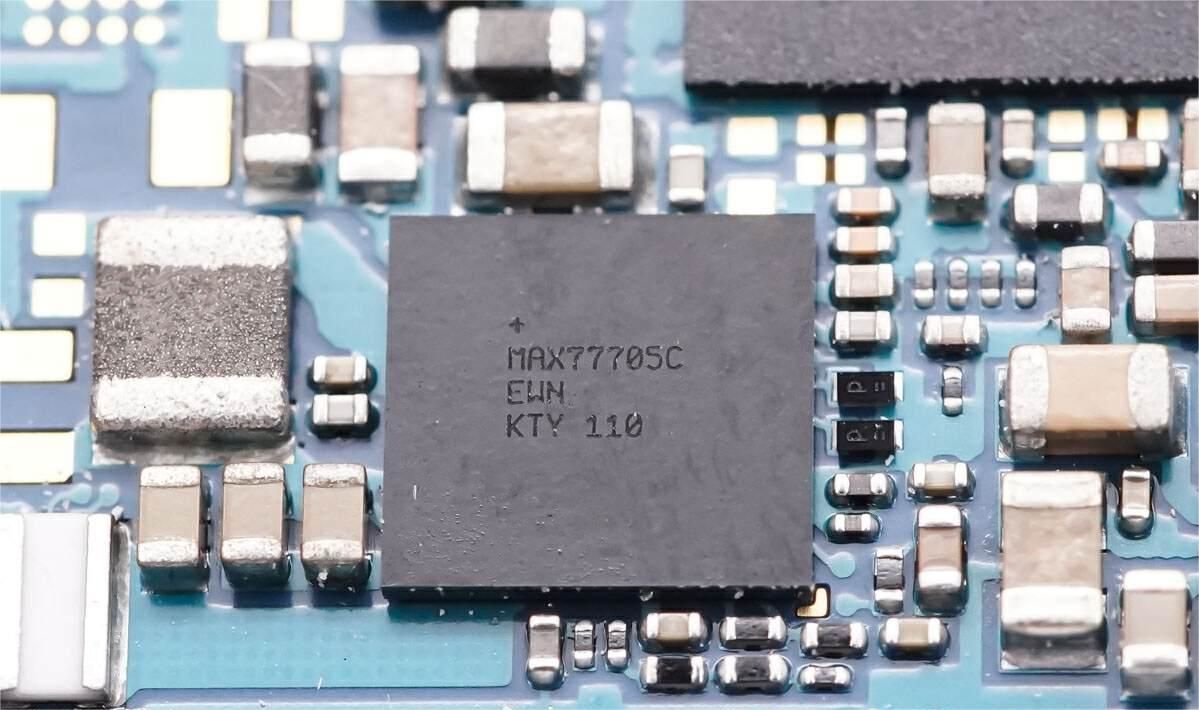
ADI ADENO MAX77705C power management chip.
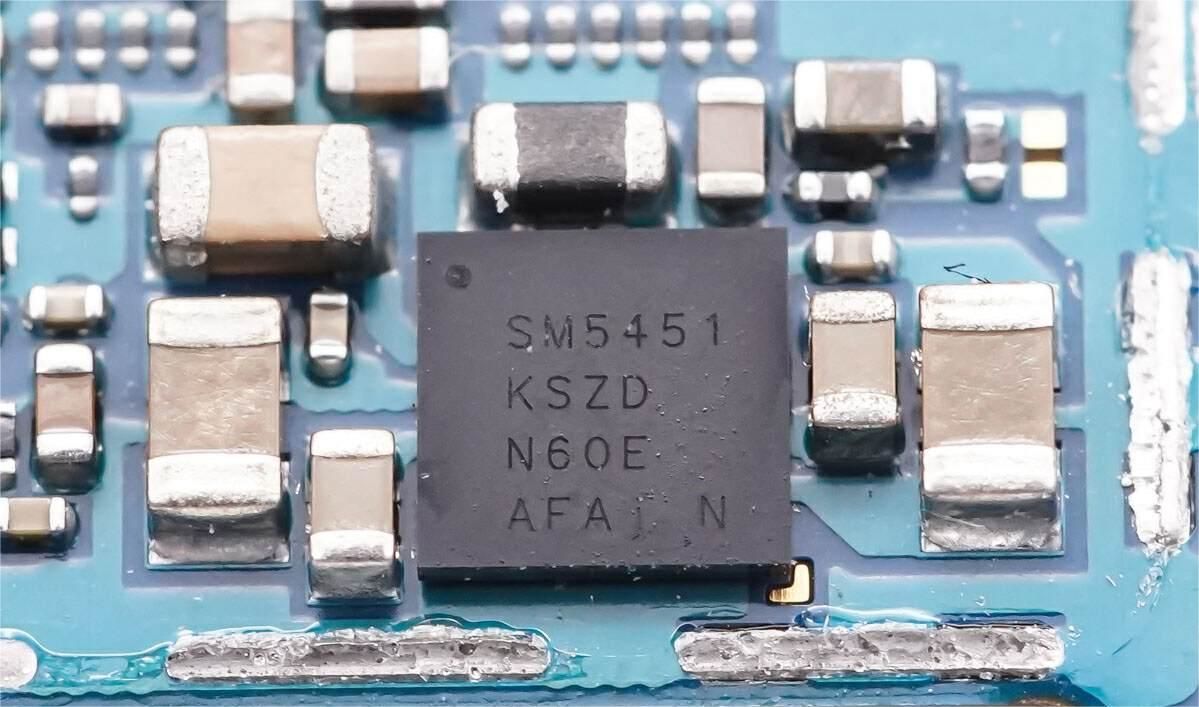
SiliconMitus SM5451 charging IC, a highly integrated quad-mode switched-capacitor charger with an integrated infinite regulation loop and a very accurate 12-bit ADC, supports charging currents up to 6 A. The SM5451 features not only a switched-capacitor architecture for current multiplier mode, but also a pathway topology for bypass mode.
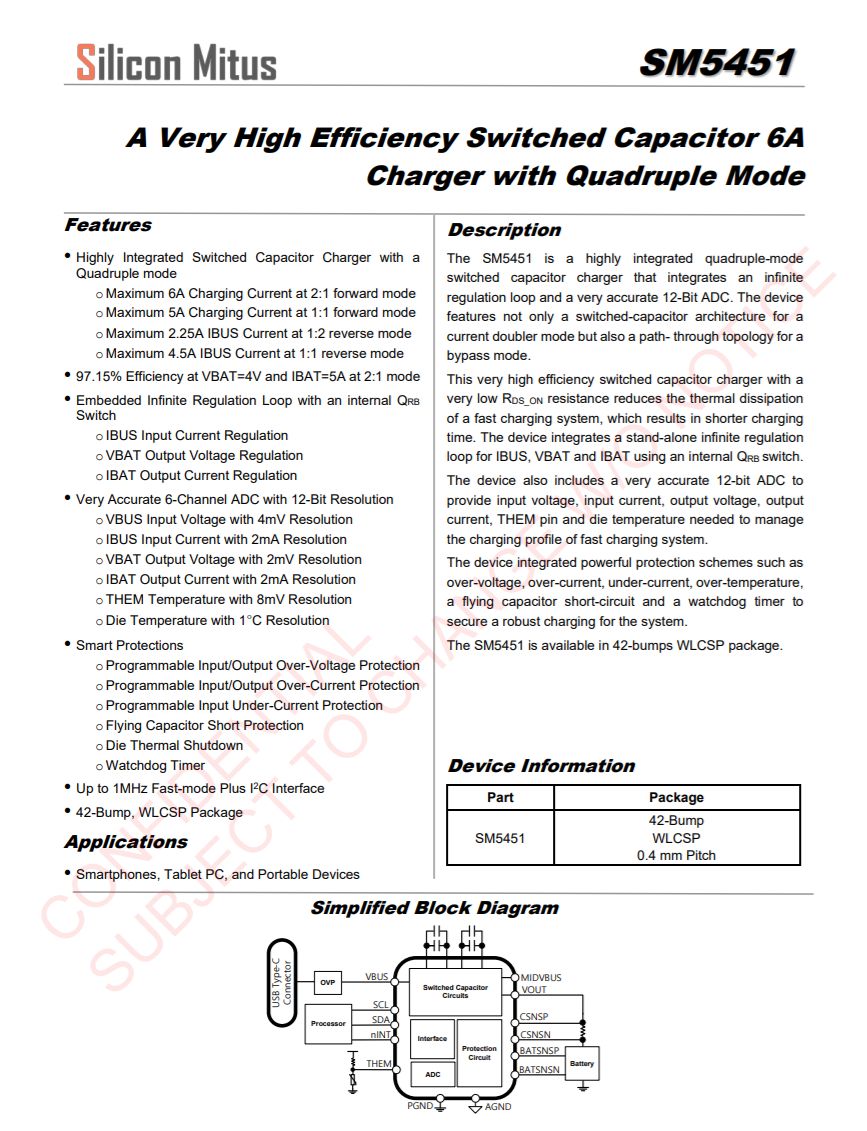
SiliconMitus SM5451 detail diagram.
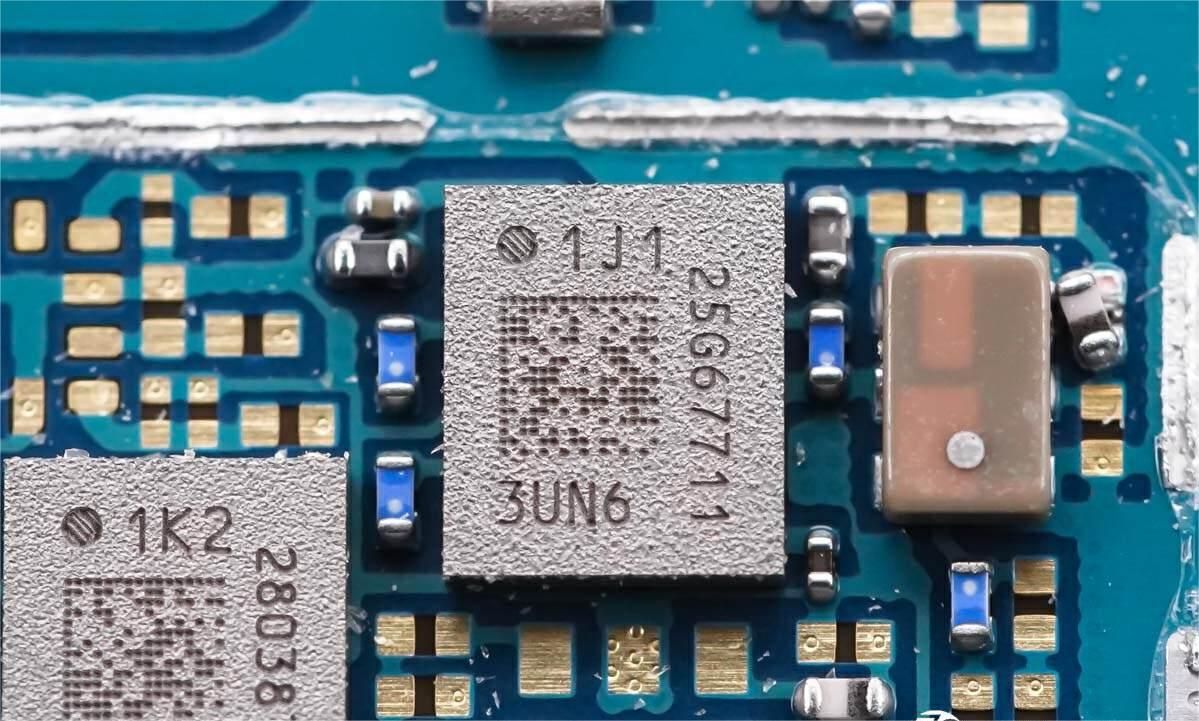
Silkscreened 25G67711 IC.
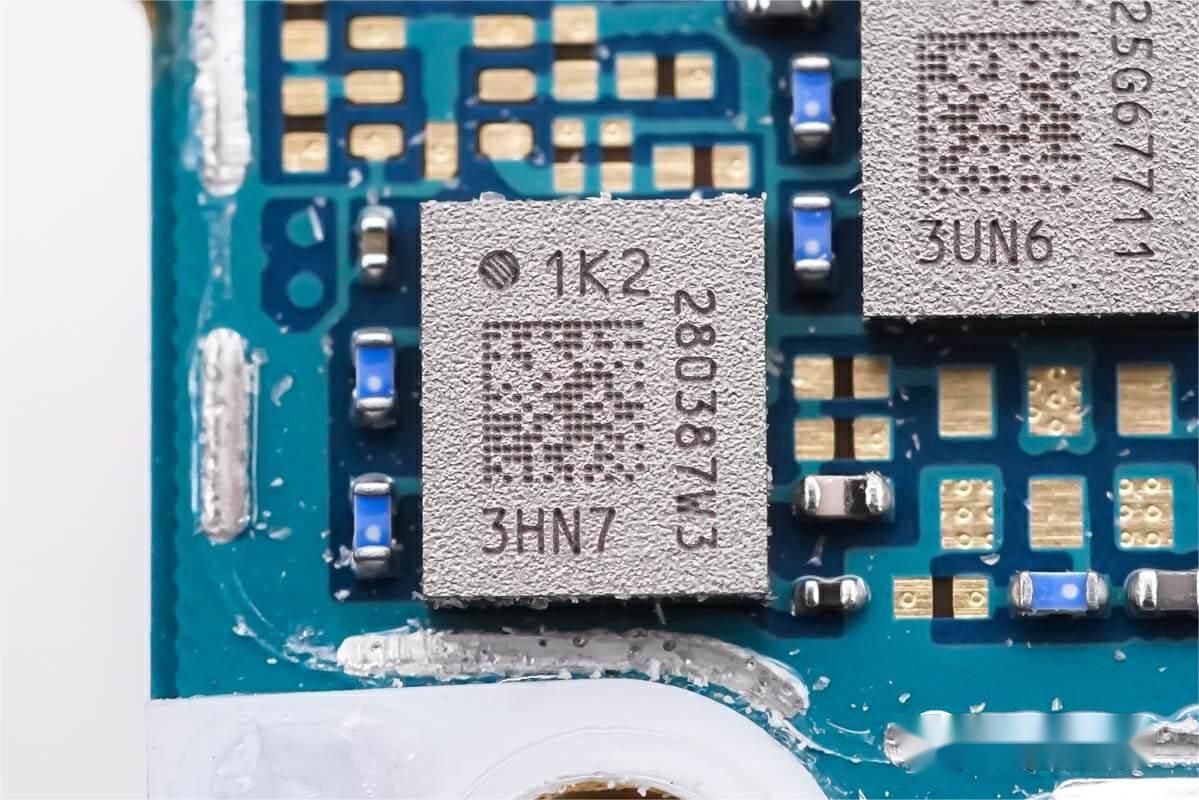
Silkscreen 280387W3 IC.
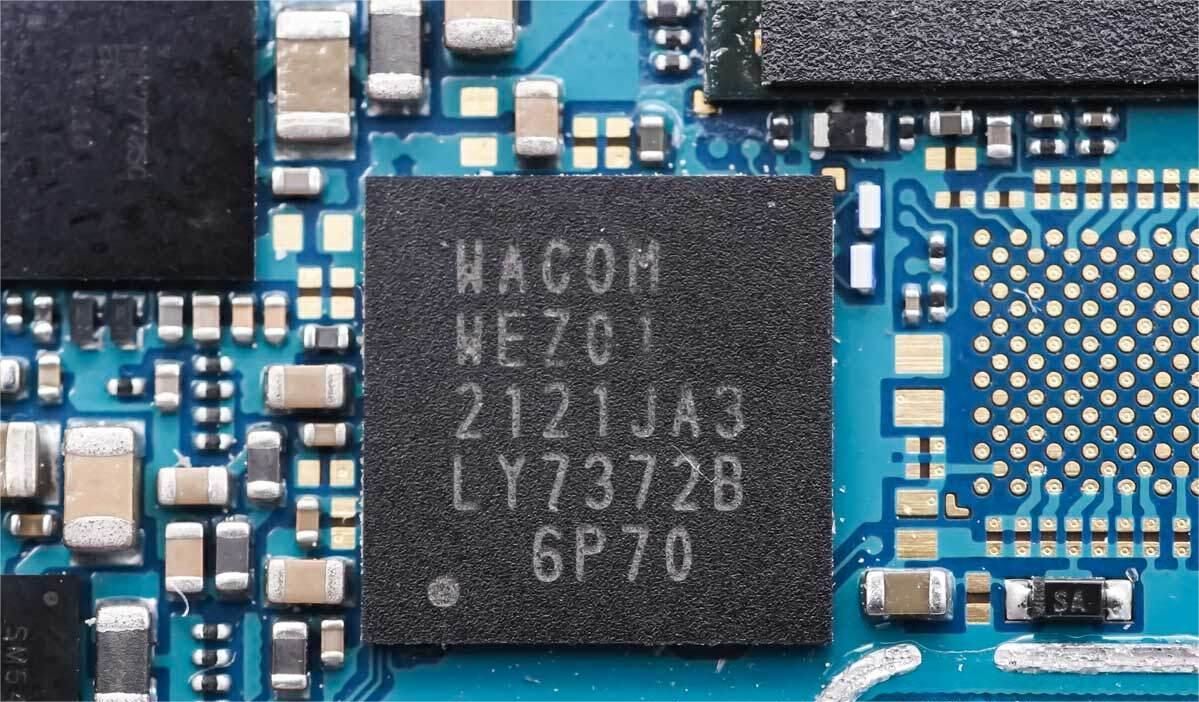
IC from WACOM silkscreen WEZ01.
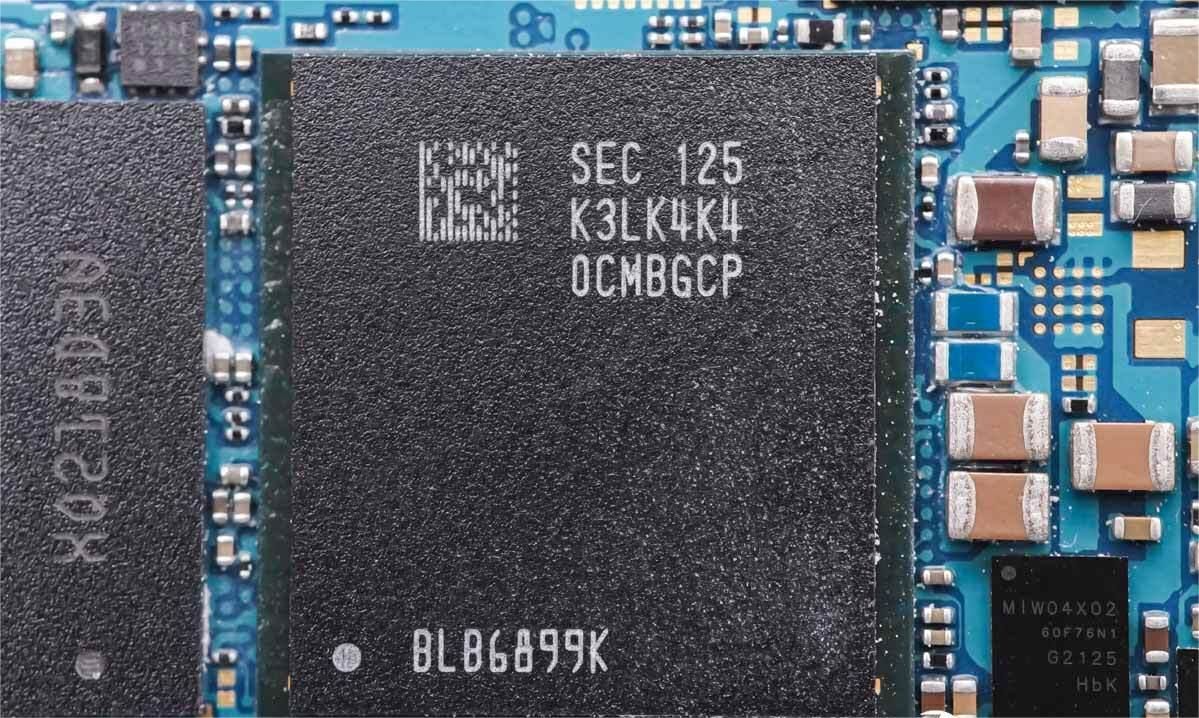
SAMSUNG Samsung K3LK4K40CM-BGCP LPDDR5 memory with 12GB. Qualcomm Qualcomm Snapdragon 888 mobile platform underneath the flash memory.
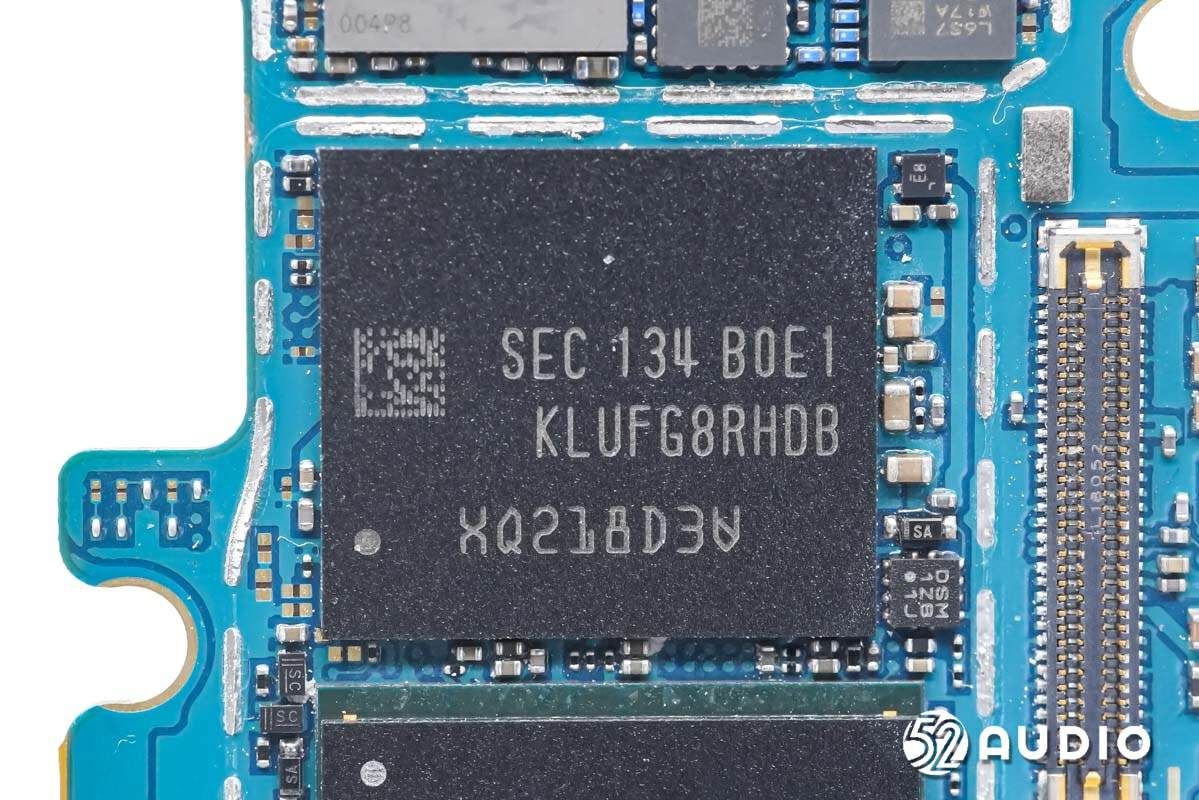
SAMSUNG Samsung KLUFG8RHDB-B0E1 UFS3.1 flash memory, capacity: 512GB, operating temperature: -25~85℃.
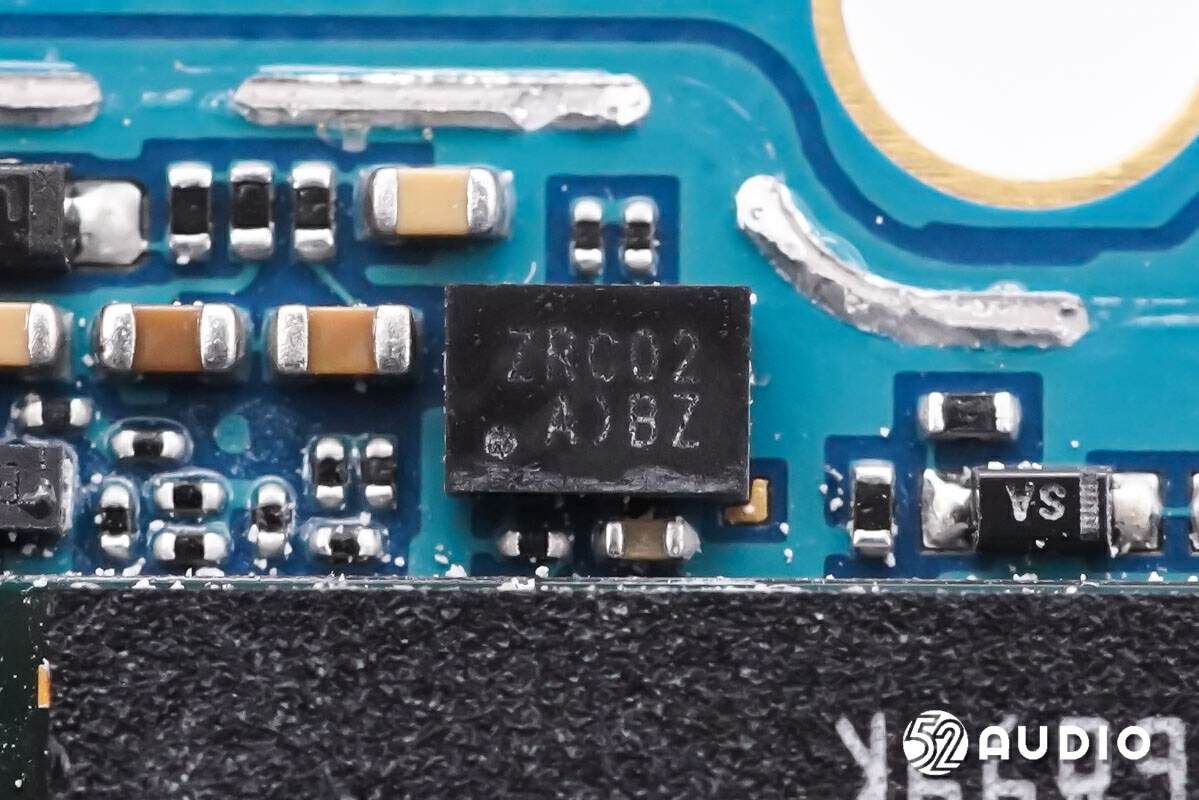
Silkscreened ZRC02 IC.
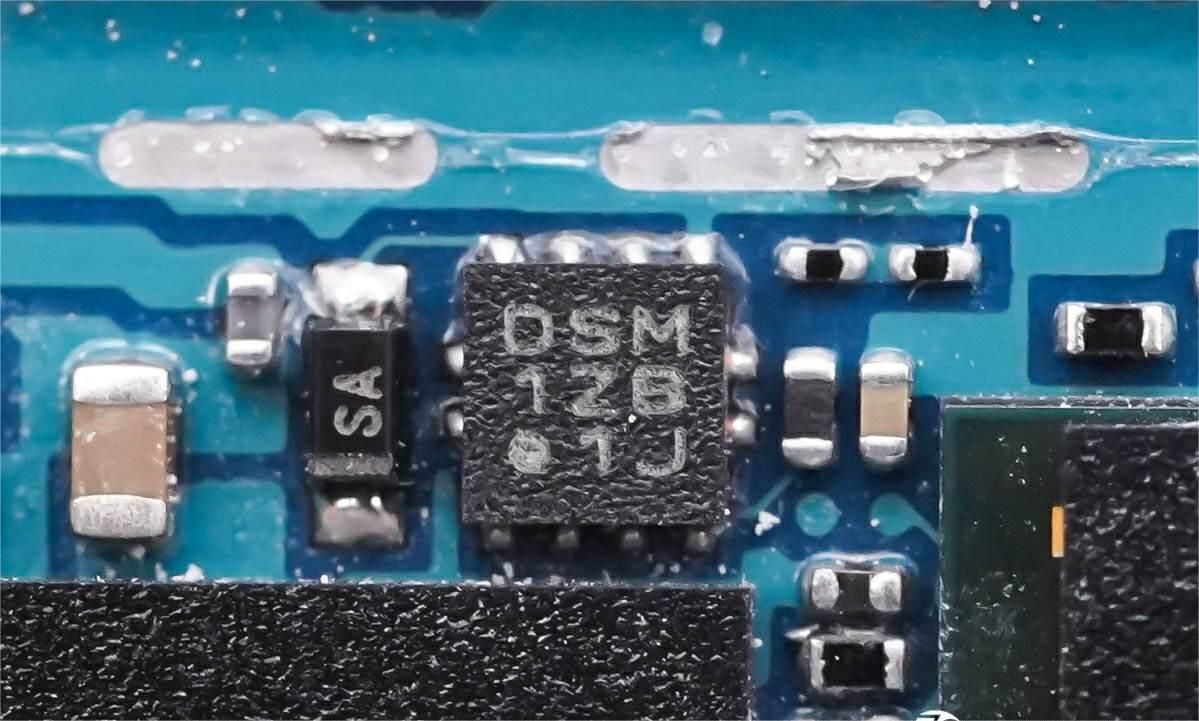
Silkscreened DSM 12B IC.
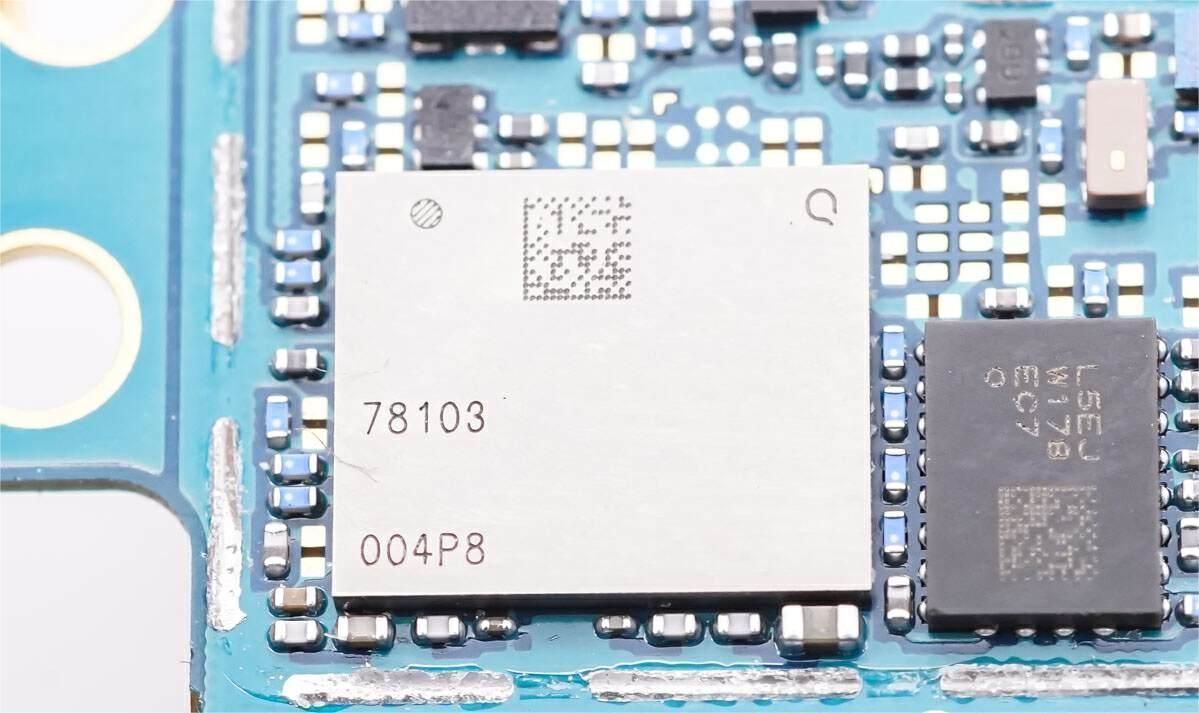
Silkscreened 78103 IC.
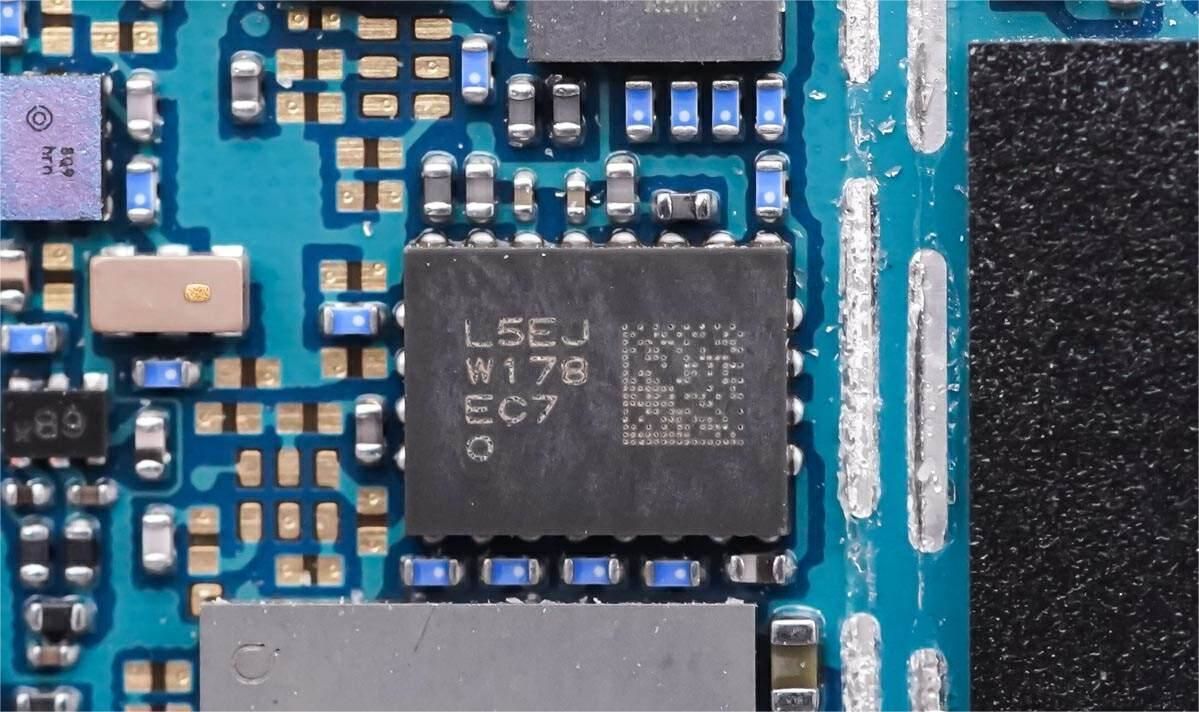
Silkscreened L5EJ W178 IC.
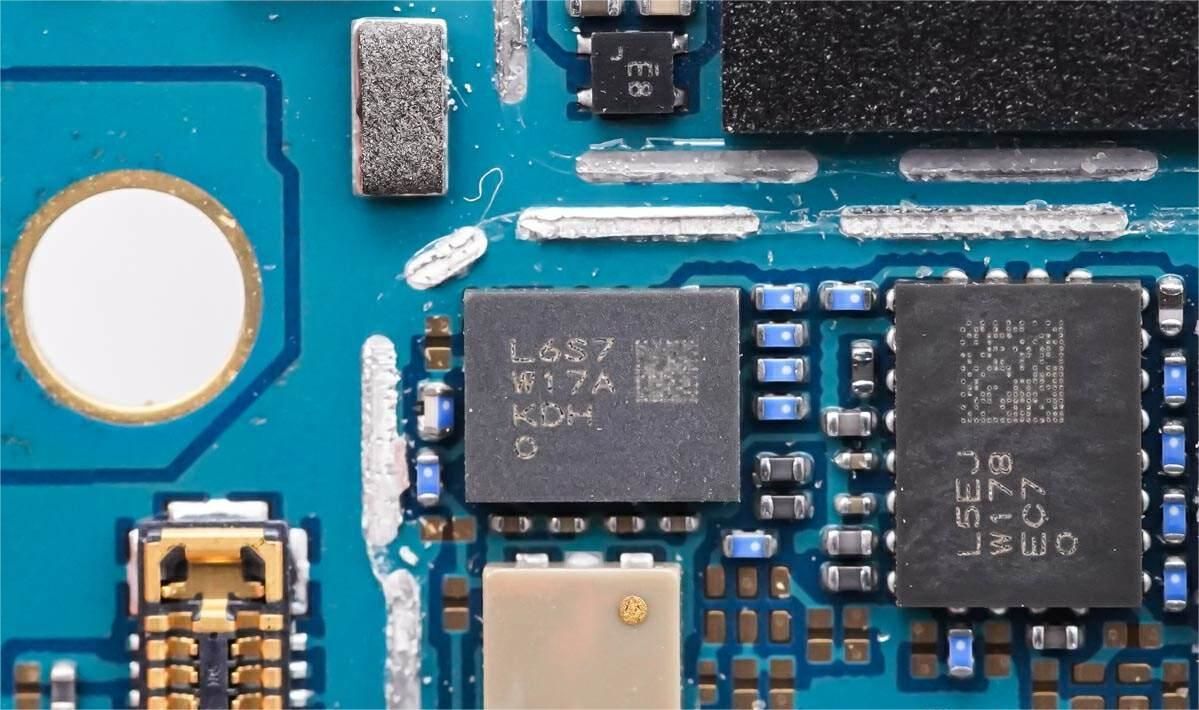
Silkscreened L6S7 W17A IC.
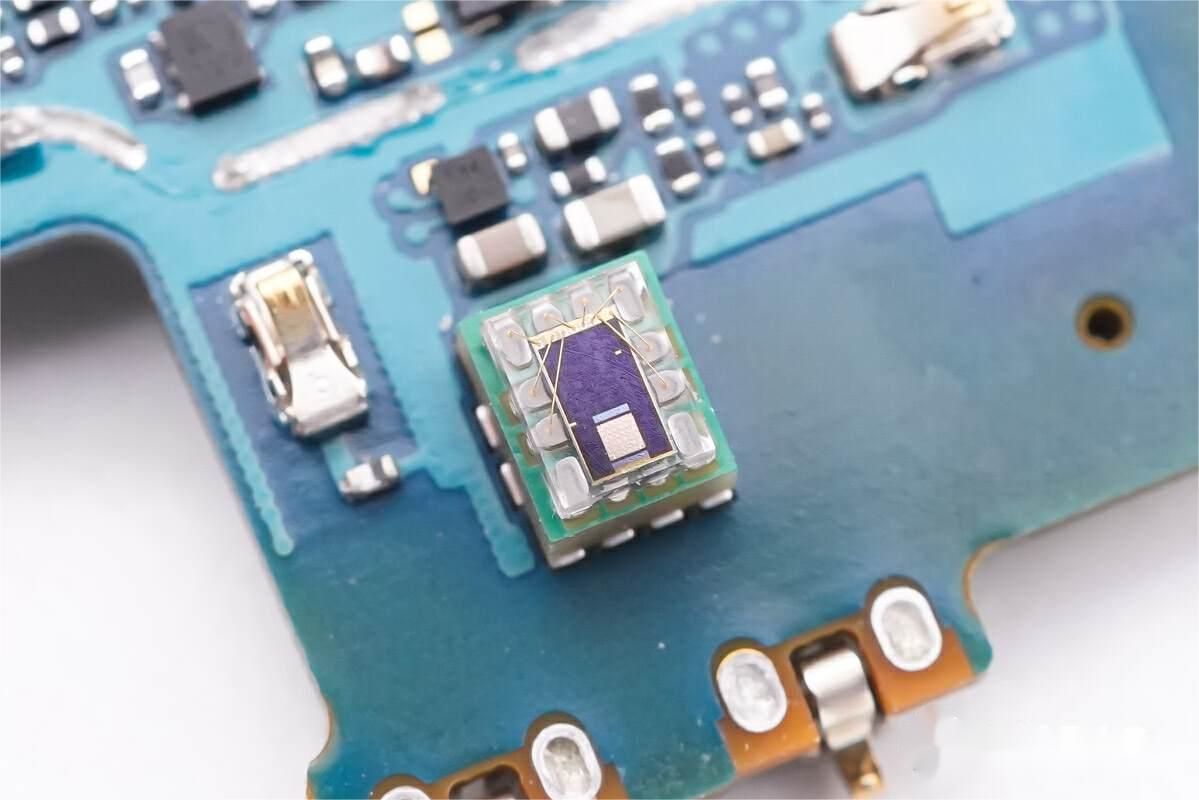
Infrared distance sensor.
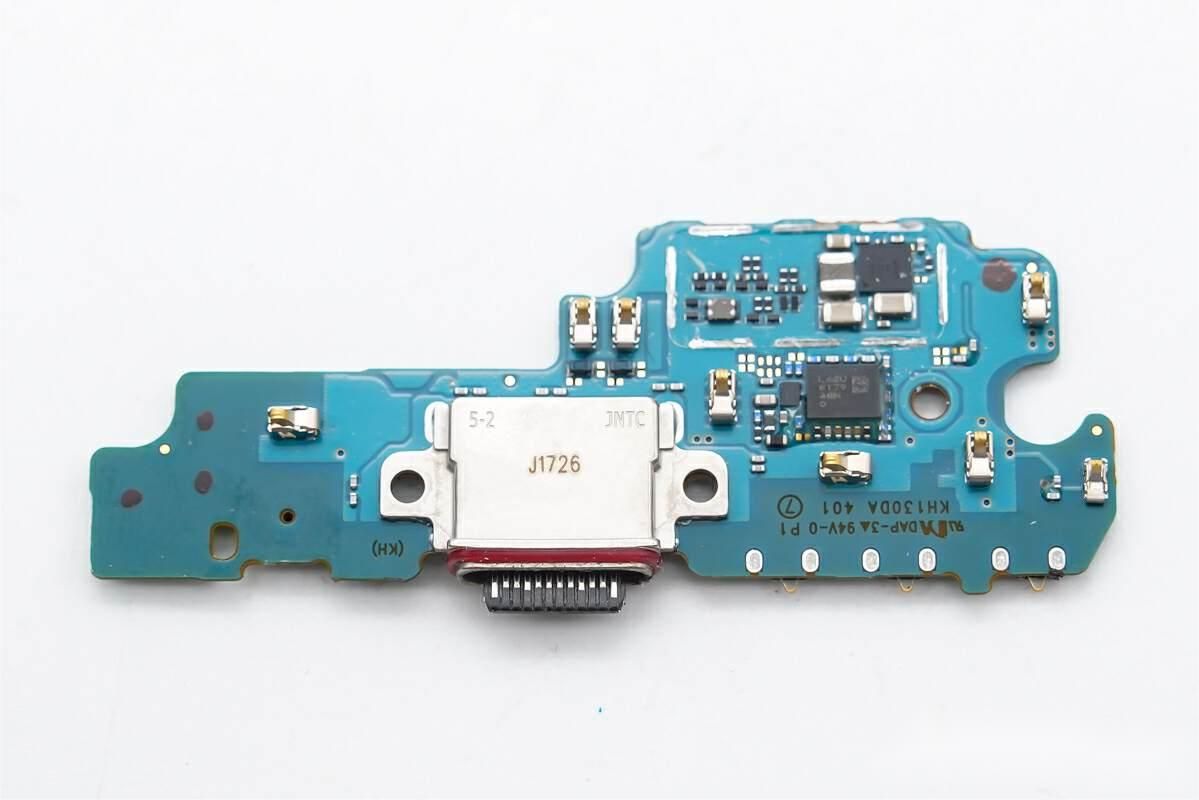
Power input small board side circuit at a glance, Type-C charging female sink soldered.
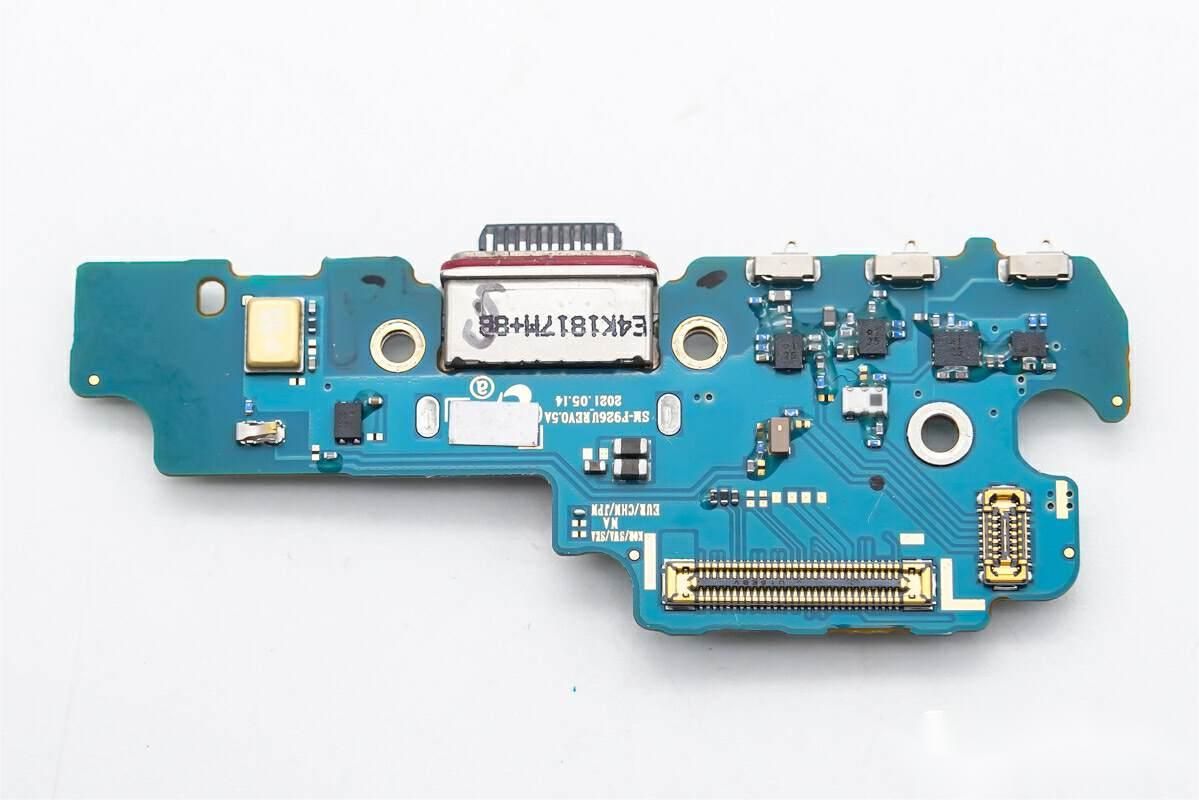
Power input board circuit on the other side at a glance, setting the BTB connector to connect to the row of wires.
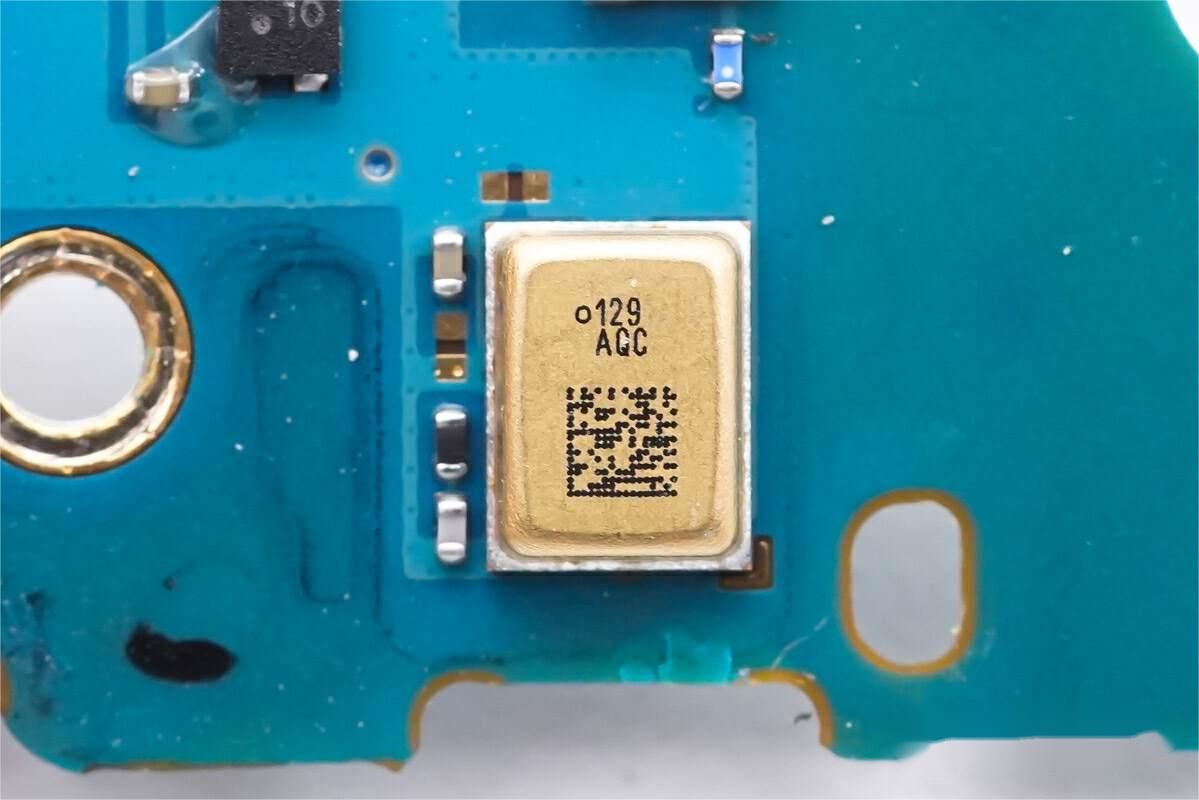
Laser engraved 129 AGC's MEMS microphone for voice call function pickup.
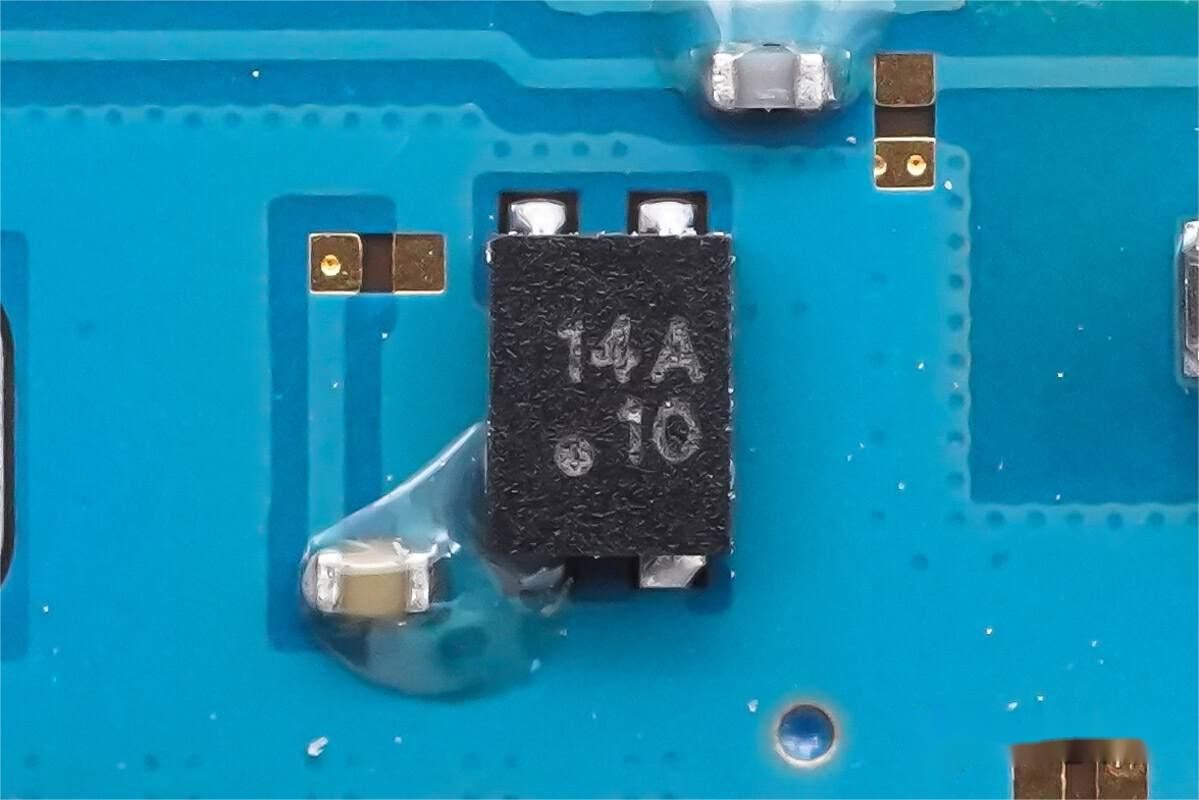
Silkscreened 14A 10 IC.
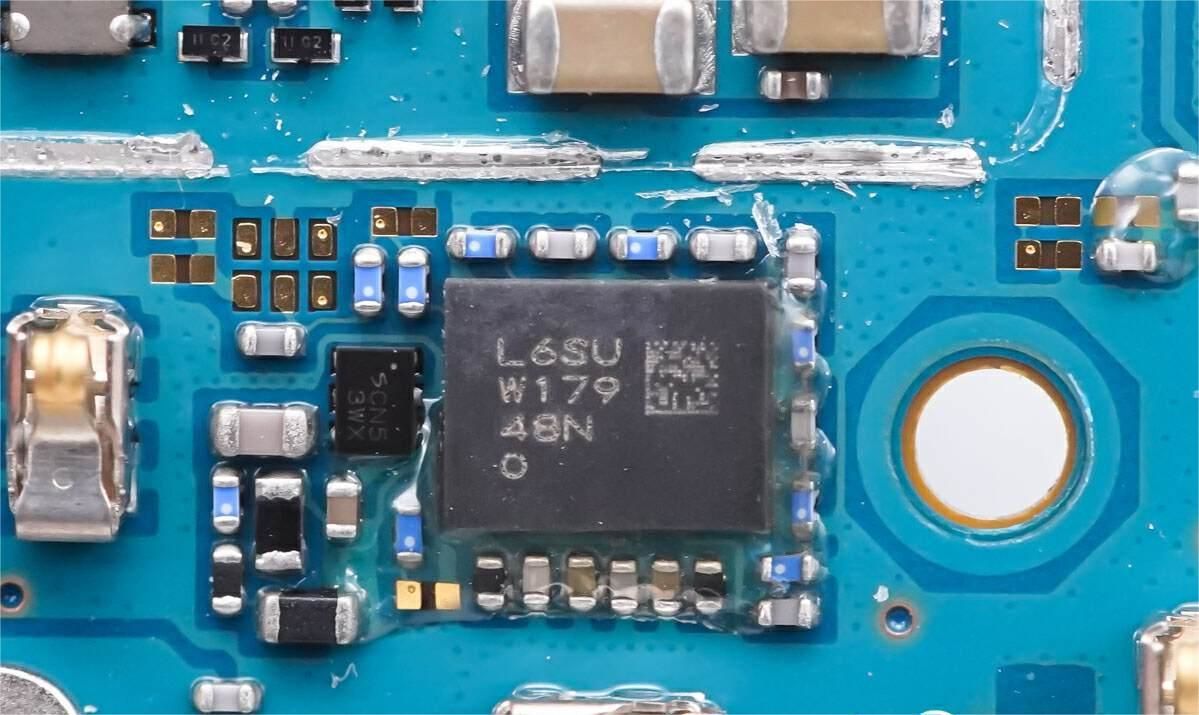
Silkscreened L6SU W179 IC.
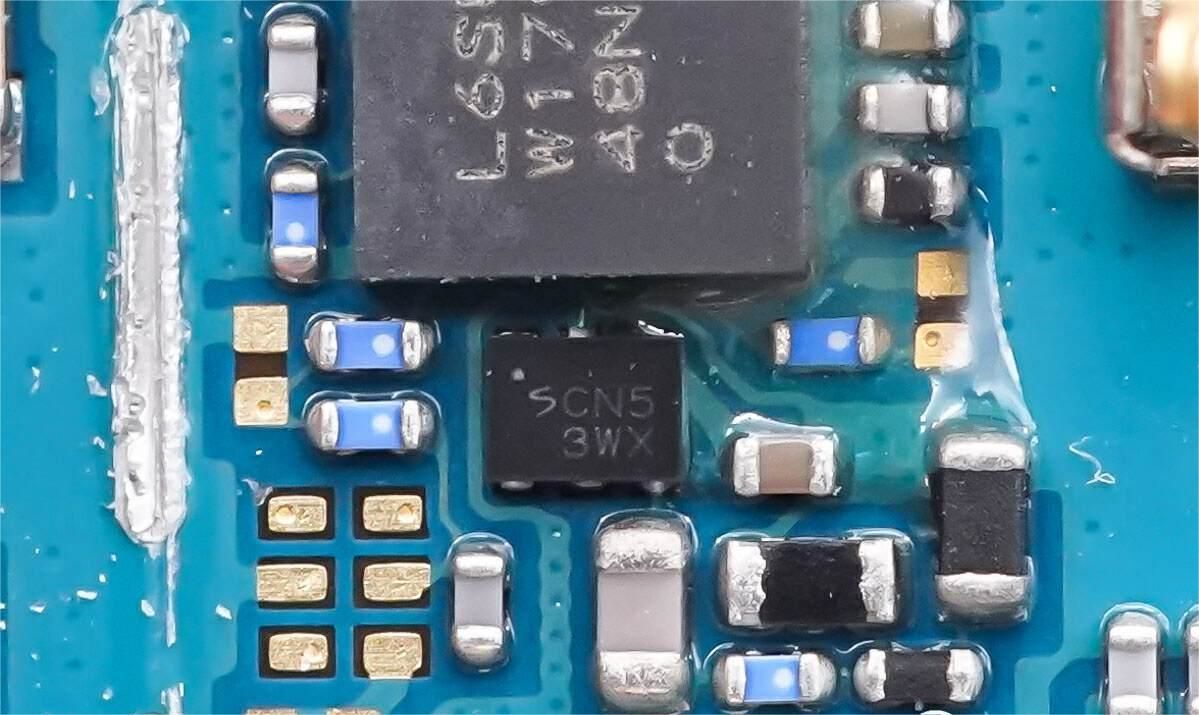
Silkscreen SCN5 3WX IC.
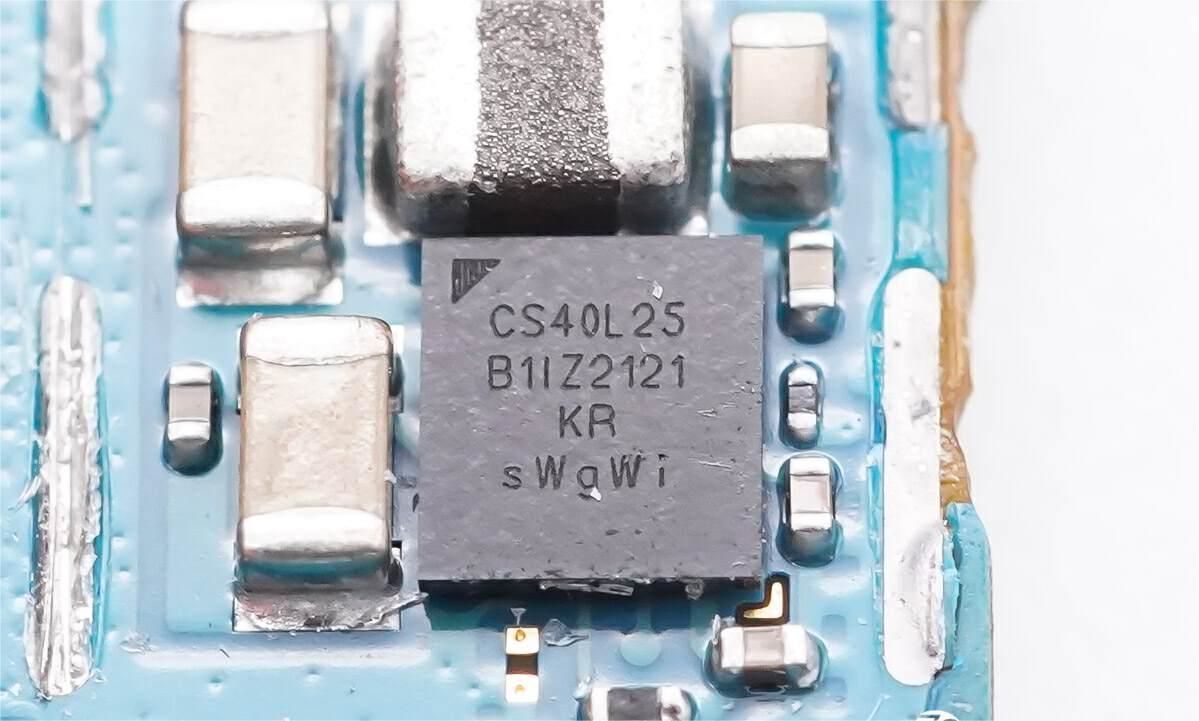
The Cirrus-Logic Lingun Logic CS40L25 Integrated DSP Boost Tactile Driver integrates a high-performance tactile driver, a Halo Core digital signal processor, and a driver boost converter. Based on the resonant frequency of the motor, these devices drive high-performance linear resonance exciters (LRA) and voice coil motors (VCM) to enhance the user experience with unique haptic waveforms.
The haptic suite for these devices includes system-level resonant frequency calibration of the LRA; output voltage and current monitoring software that triggers haptic actuator impedance and resonant frequency reporting; pre-stored haptic waveforms that can be triggered by I2C / GPI for gaming applications and user interface events; and flexible haptic waveform generation that can be triggered by GPI to replace the Home button or side button.
Cirrus Logic's haptic technology also features a closed-loop algorithm to maximize the performance of LRA. This software approach enables powerful and consistent haptics, protects the LRA from over-travel use, and provides the overall long-term reliability of the LRA.
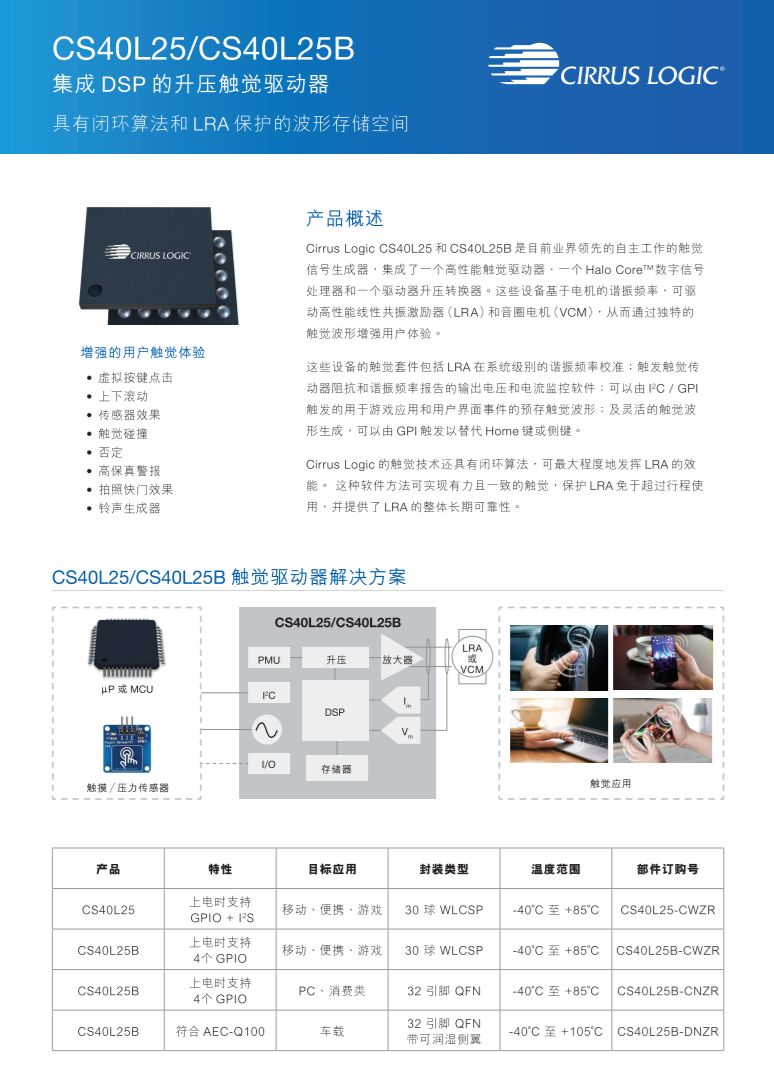
Cirrus-Logic Lingun Logic CS40L25 detail diagram.
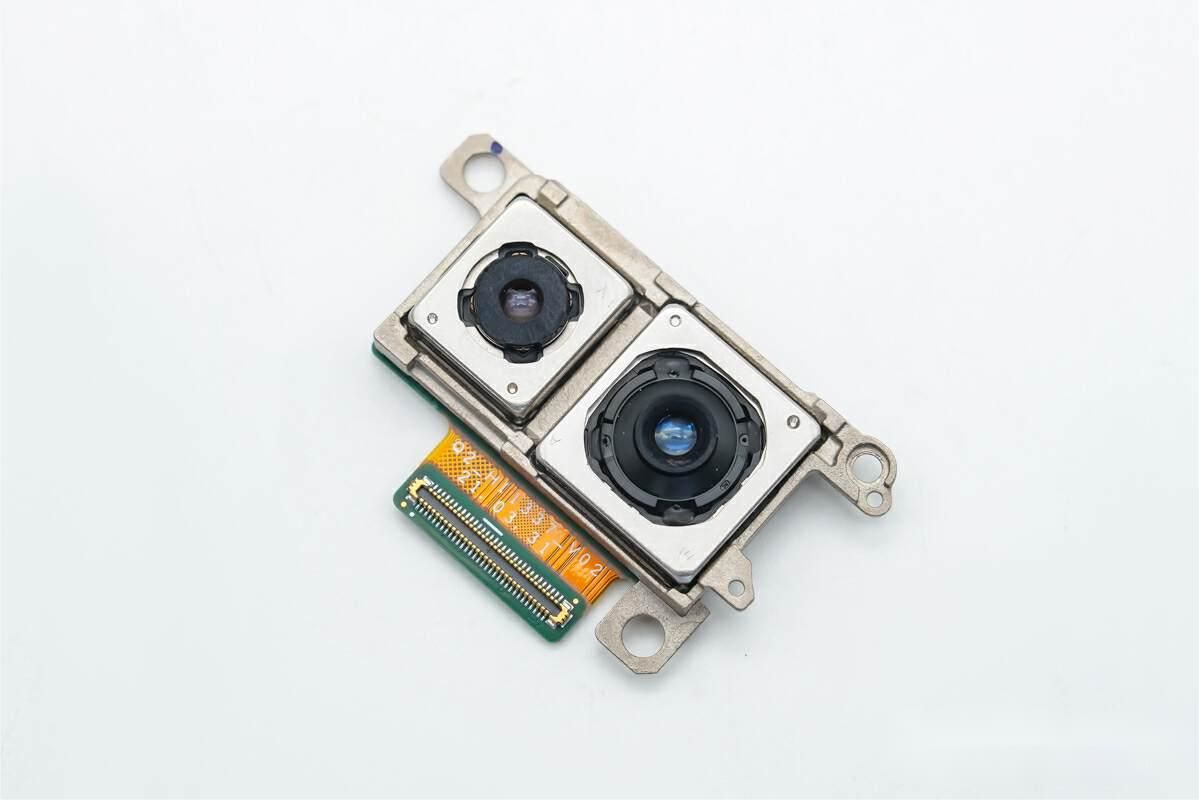
Close-up of the 12MP wide angle and 12MP ultra wide angle camera modules, both supporting anti-shake.
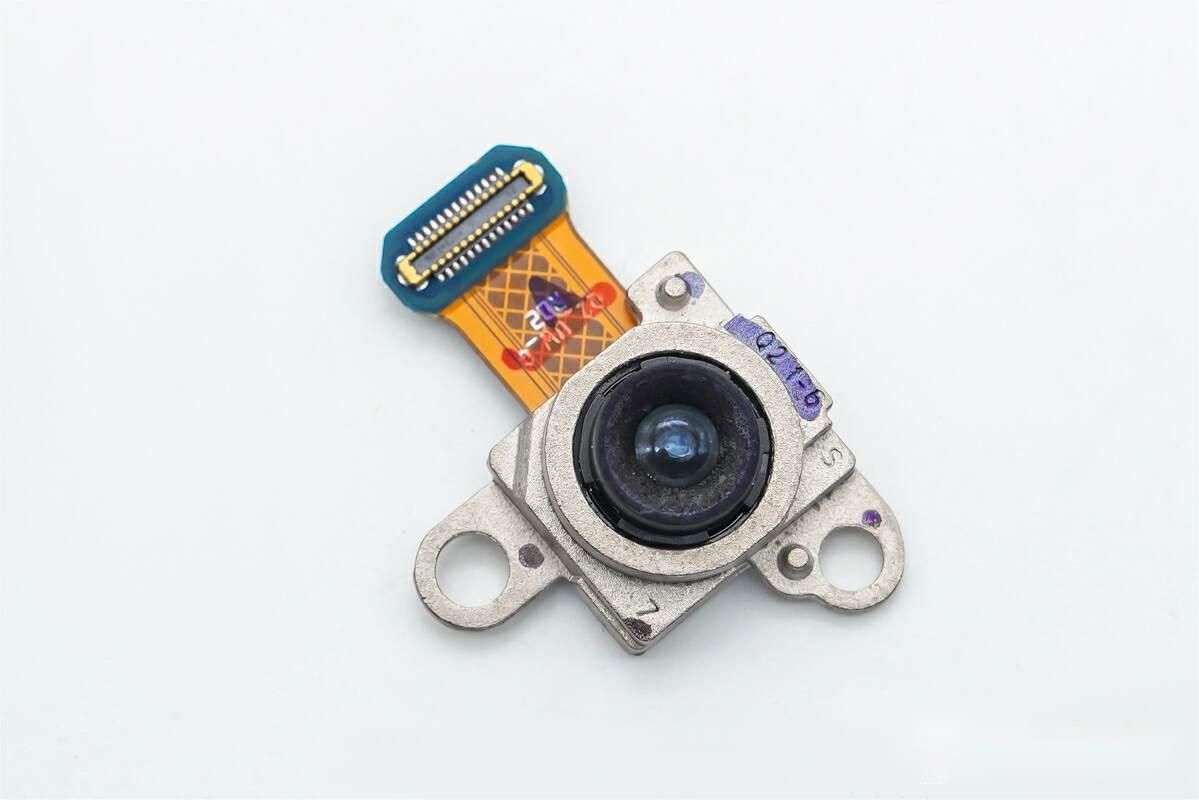
Close-up of the 12MP telephoto camera module.
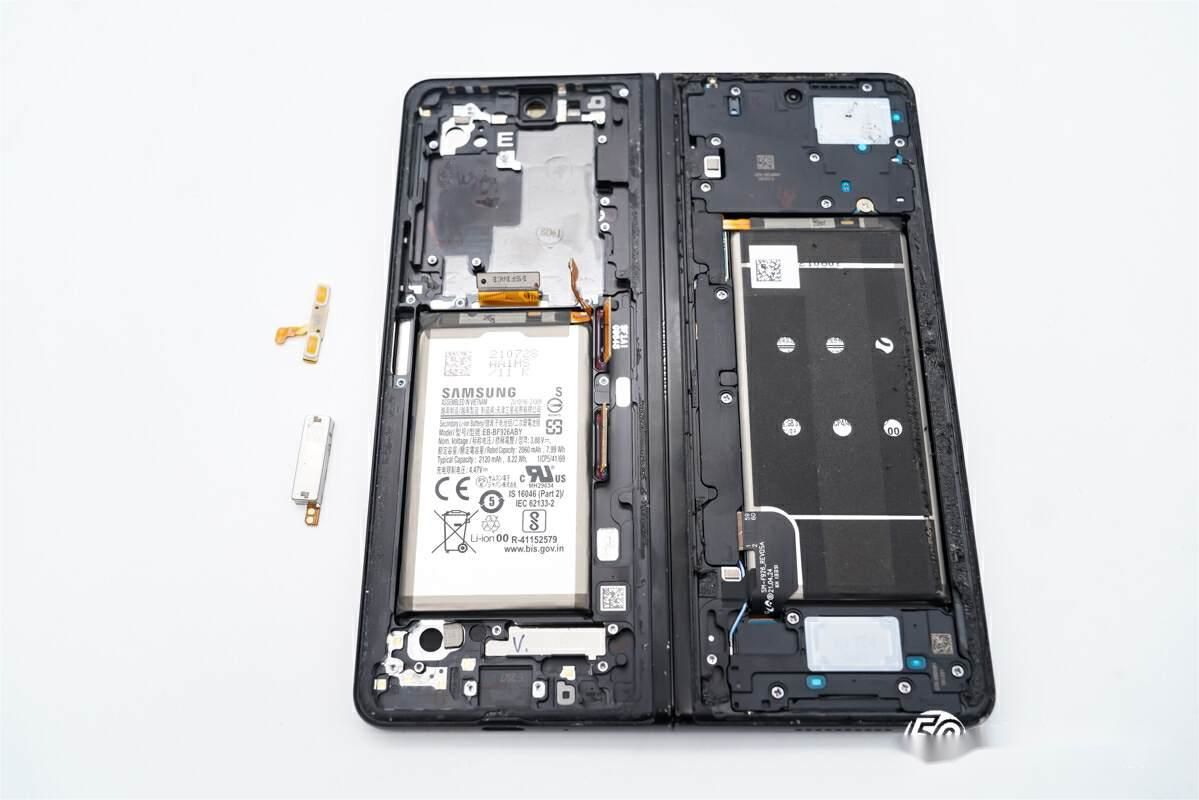
Removing the vibration motor and volume button module.
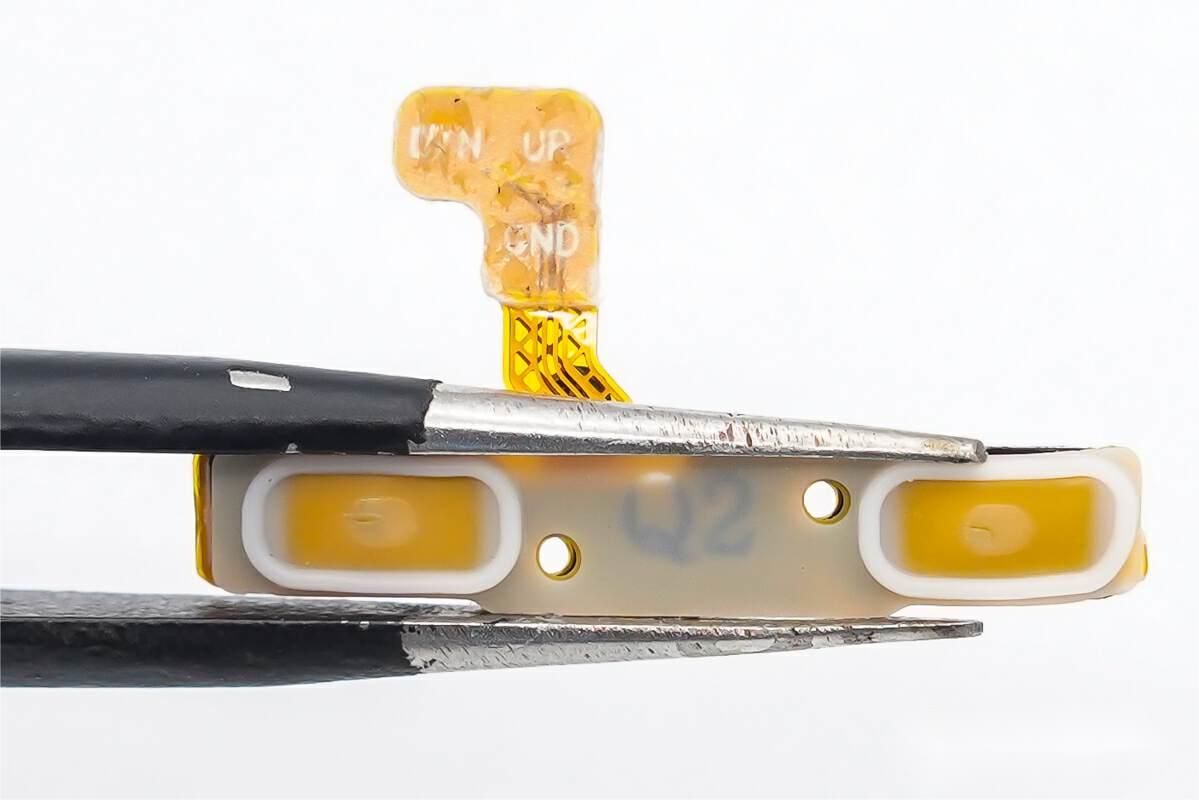
Close-up of the volume key module.
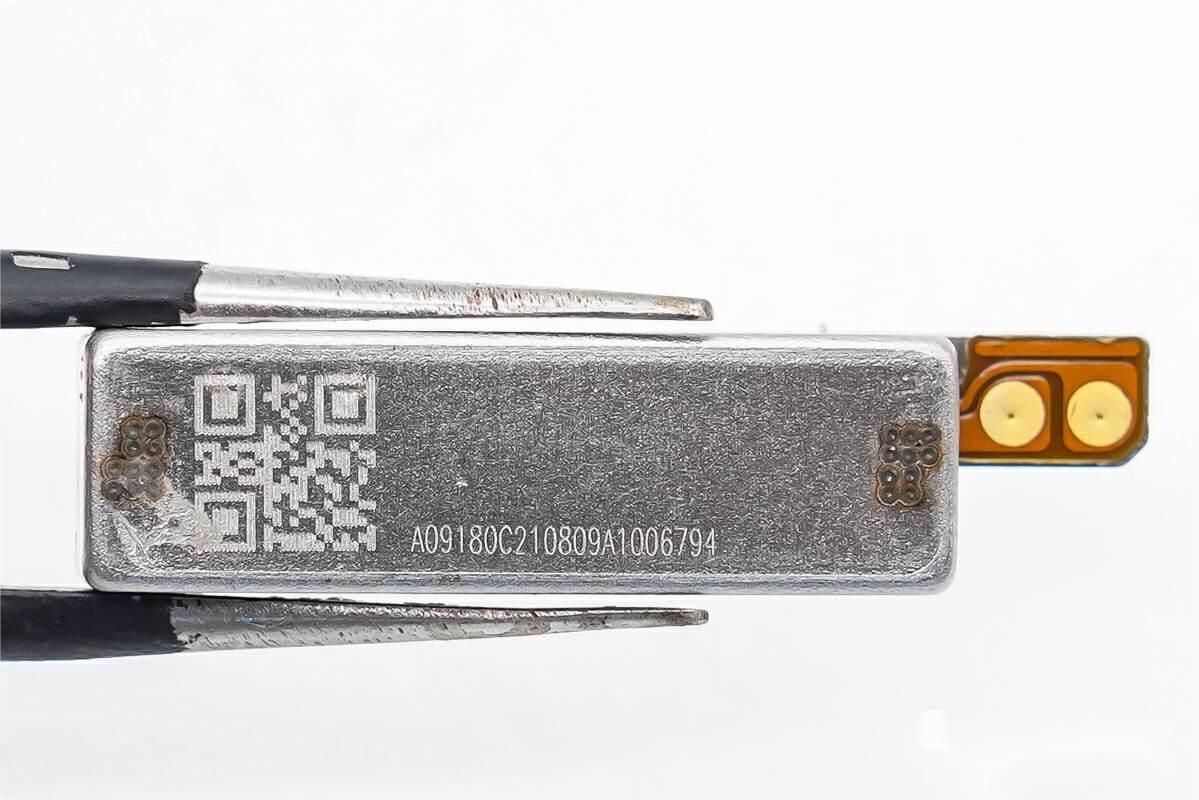
X-axis linear vibration motor.
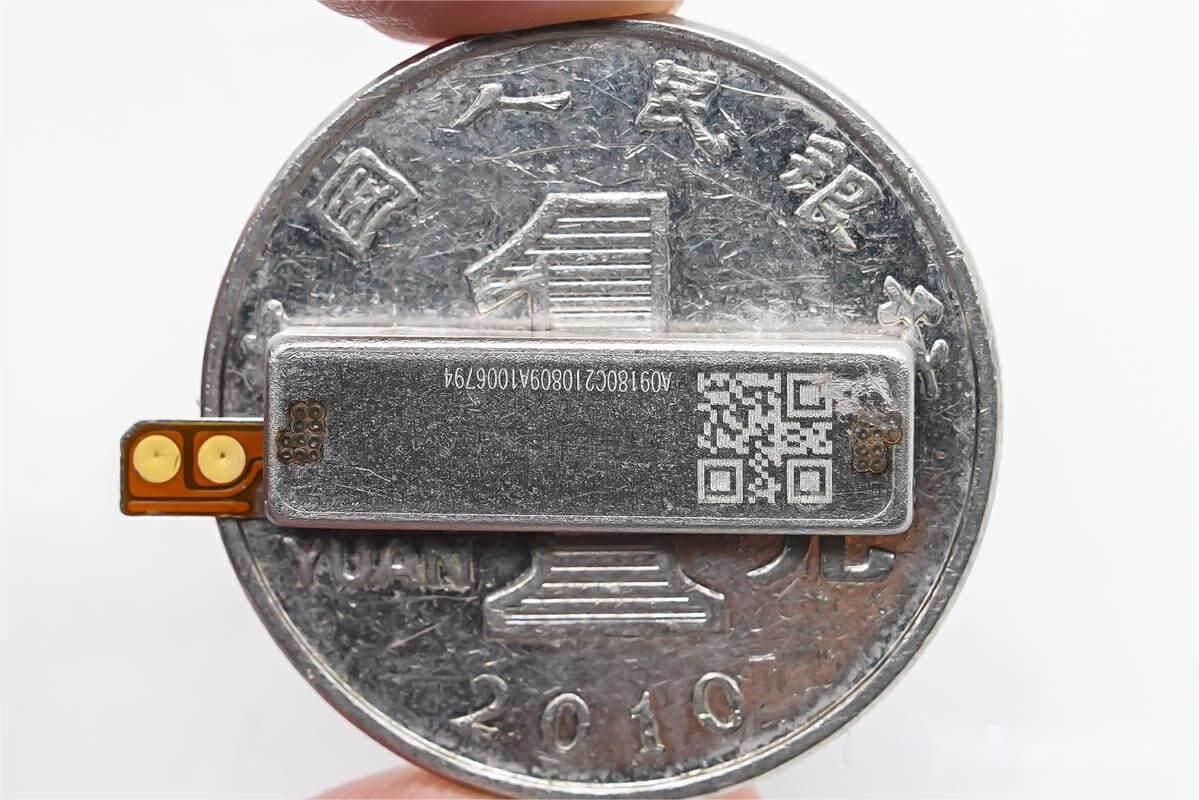
Vibration motor compared to the size of a dollar coin.
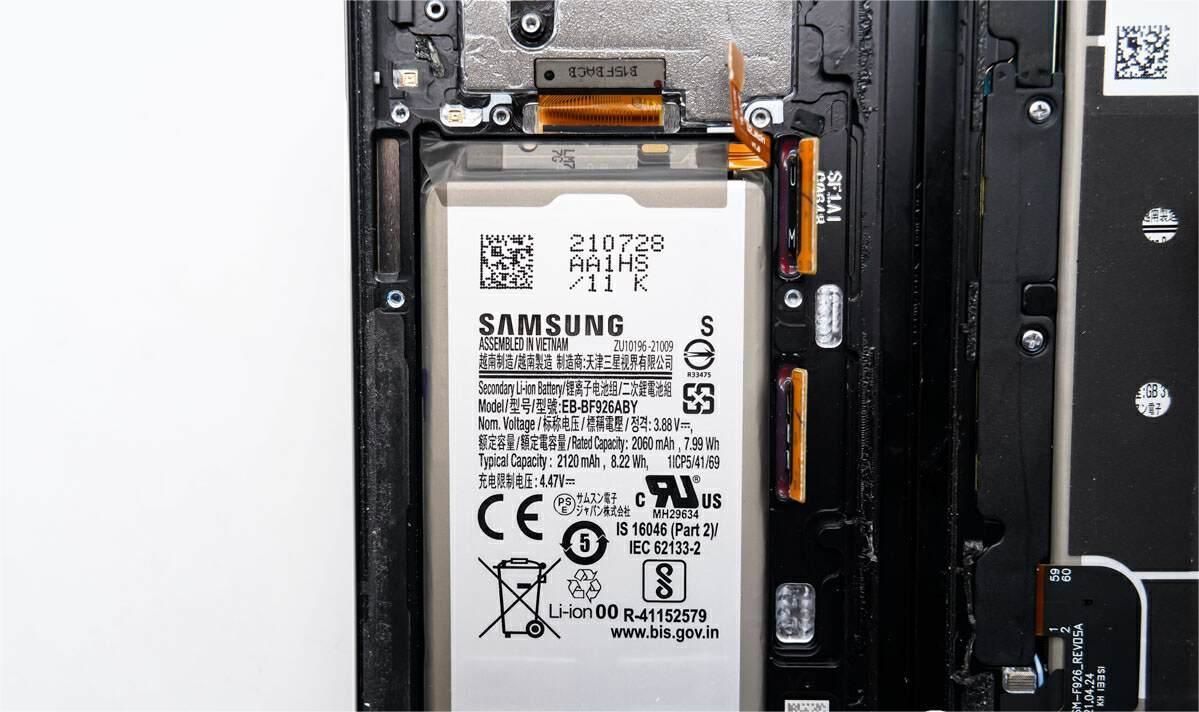
Cell phone built-in lithium-ion battery pack model: EB-BF926ABY, nominal voltage: 3.88V, rated capacity: 2060mAh 7.99Wh, typical capacity: 2120mAh 8.22Wh, charge limit voltage: 4,47V, manufacturer: Tianjin Samsung Vision Co.
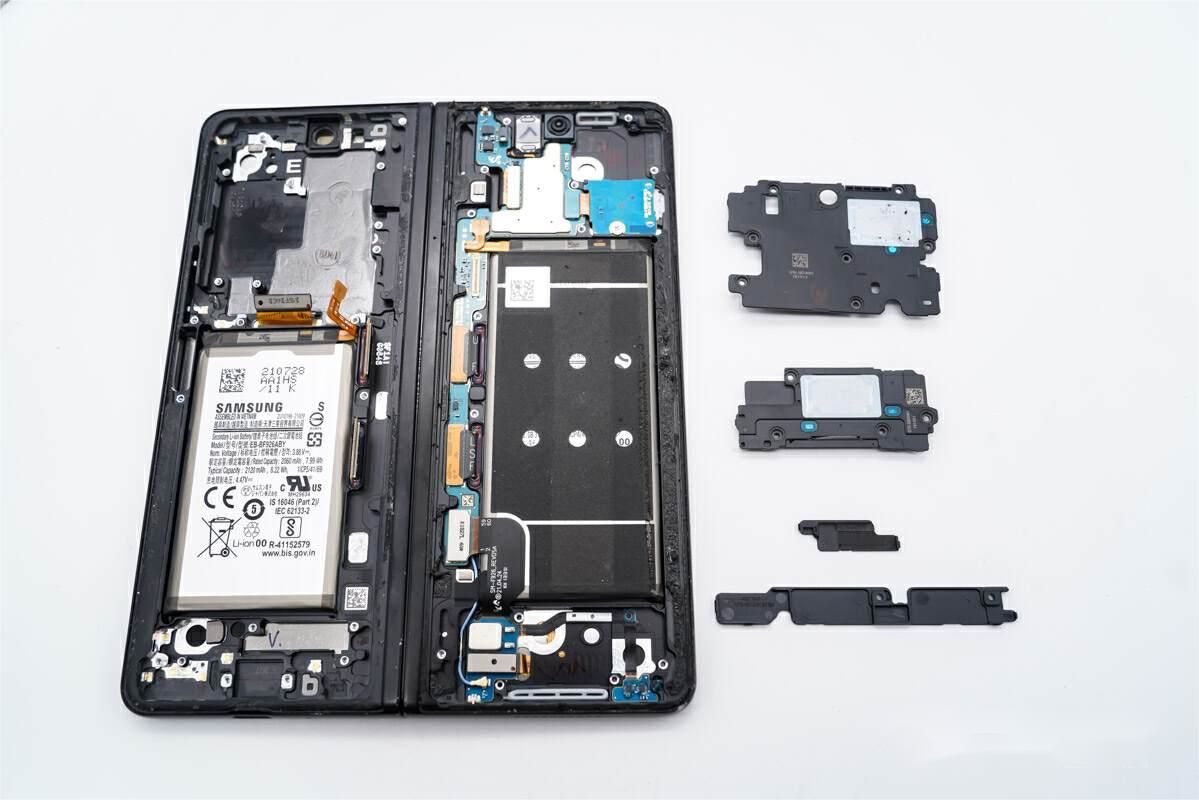
Remove the screws to remove the cover plate inside the other side of the cavity.
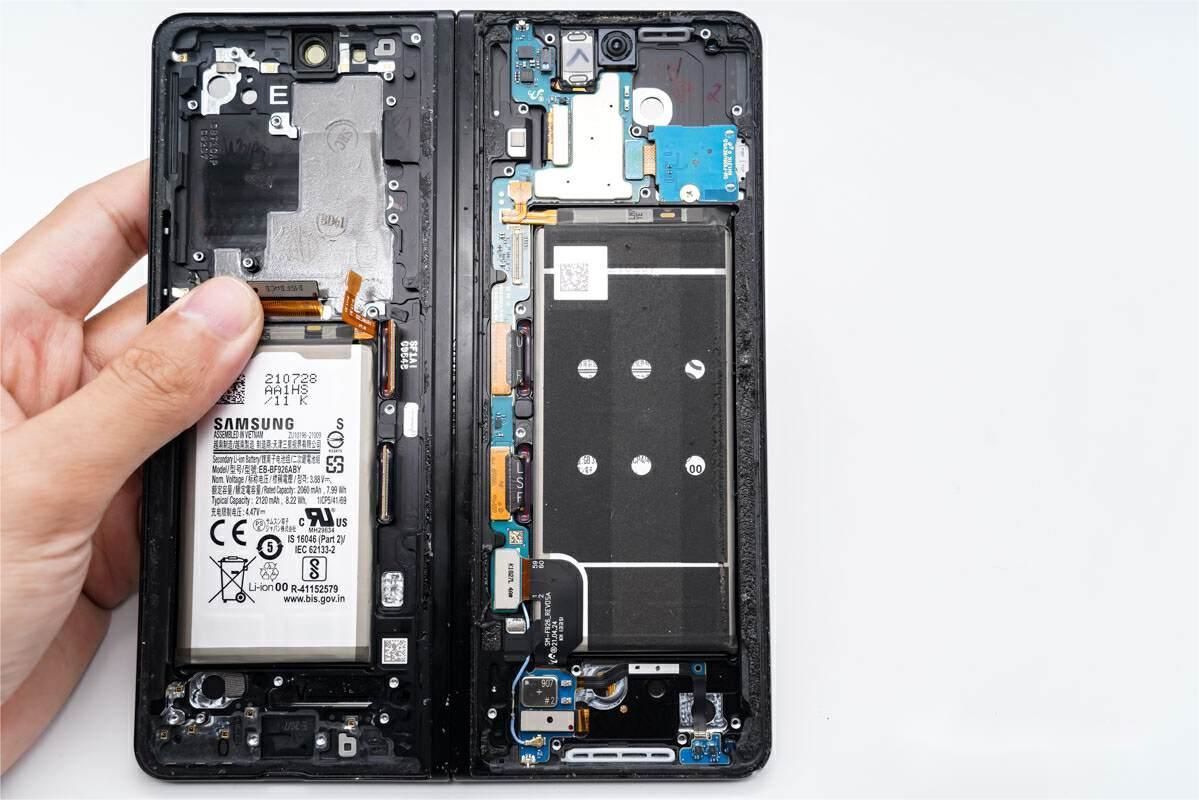
There is a sub plate and another battery unit set inside the cavity.
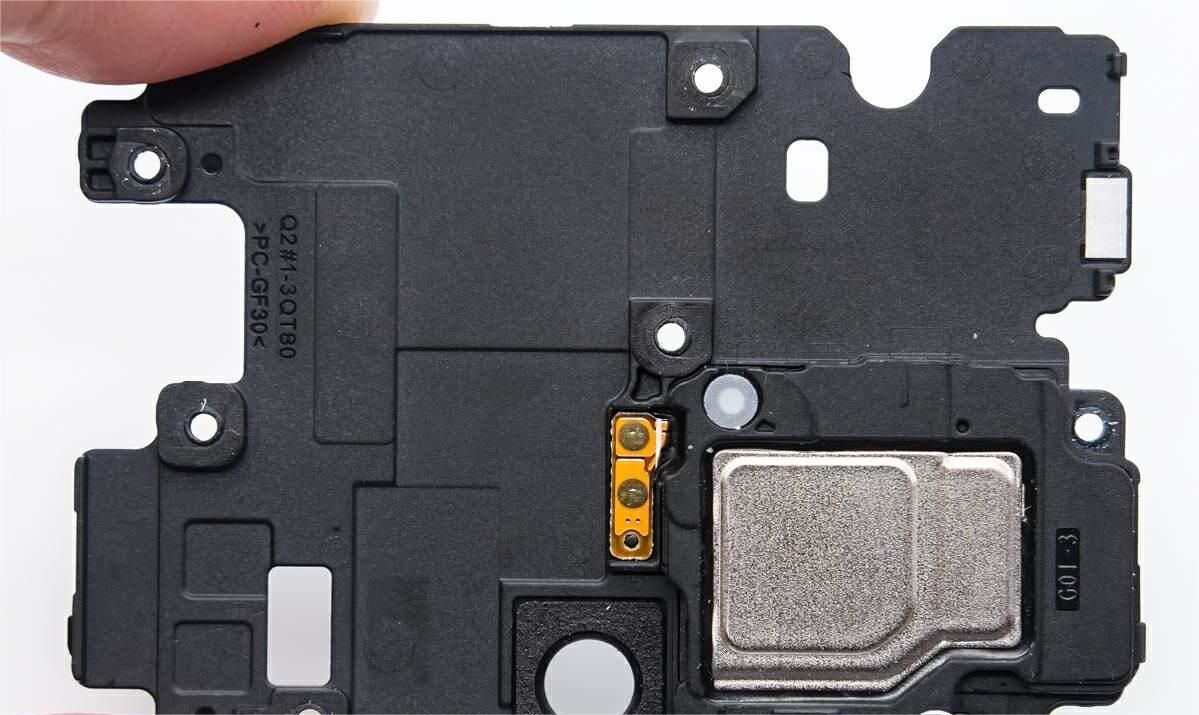
The structure of the upper cover plate at a glance, with the speaker module fixed.
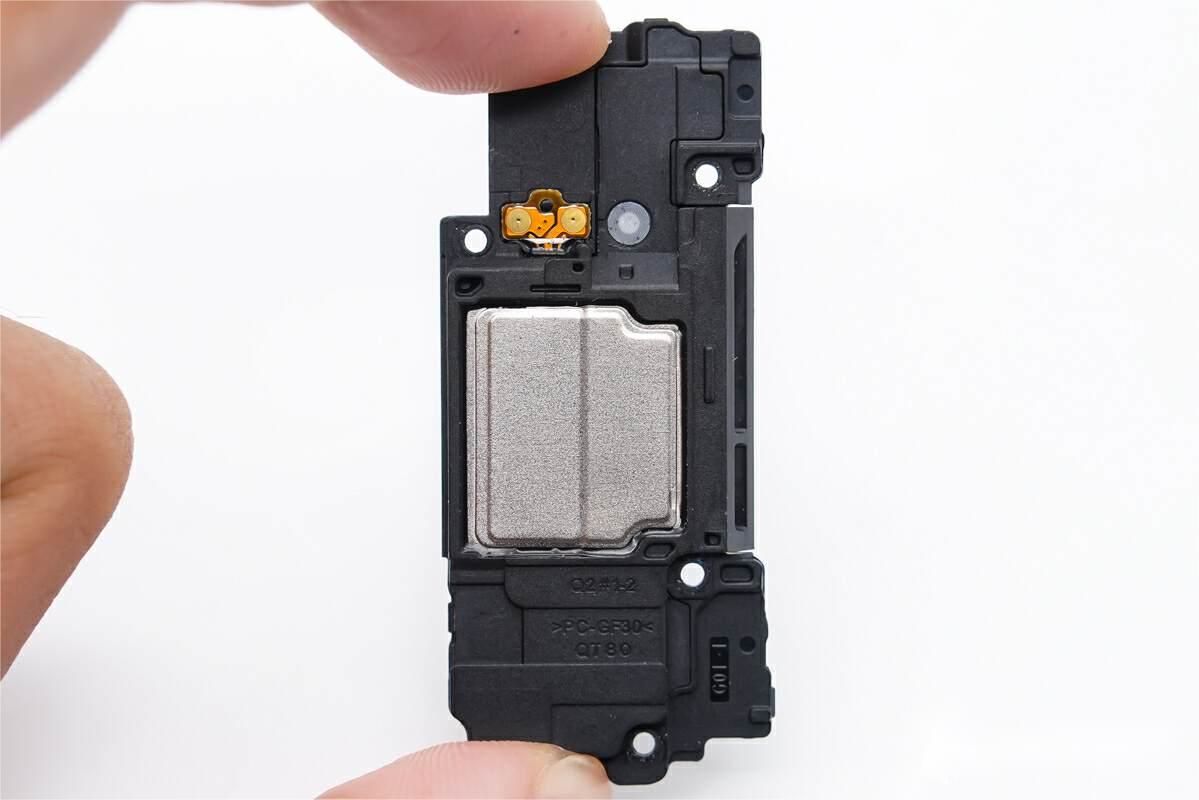
The lower cover structure at a glance, also with a speaker module.
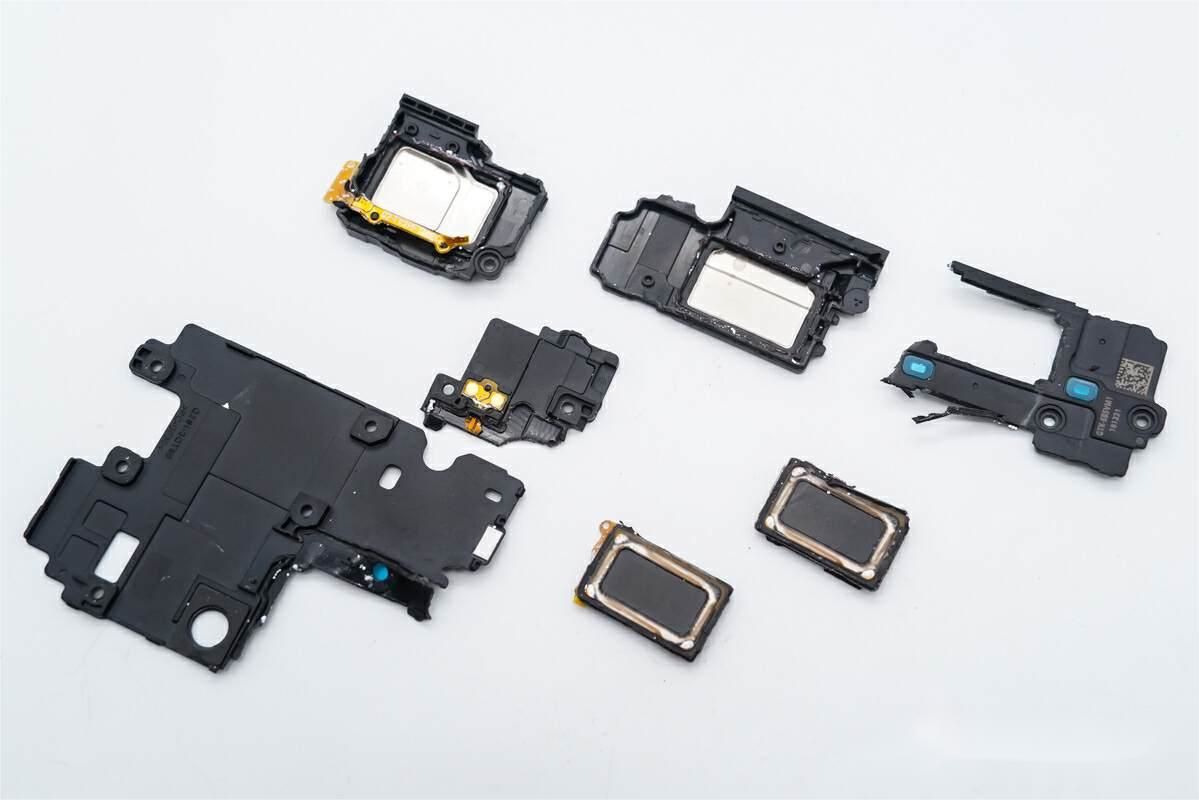
Removing the speaker cover and taking out the internal speaker.
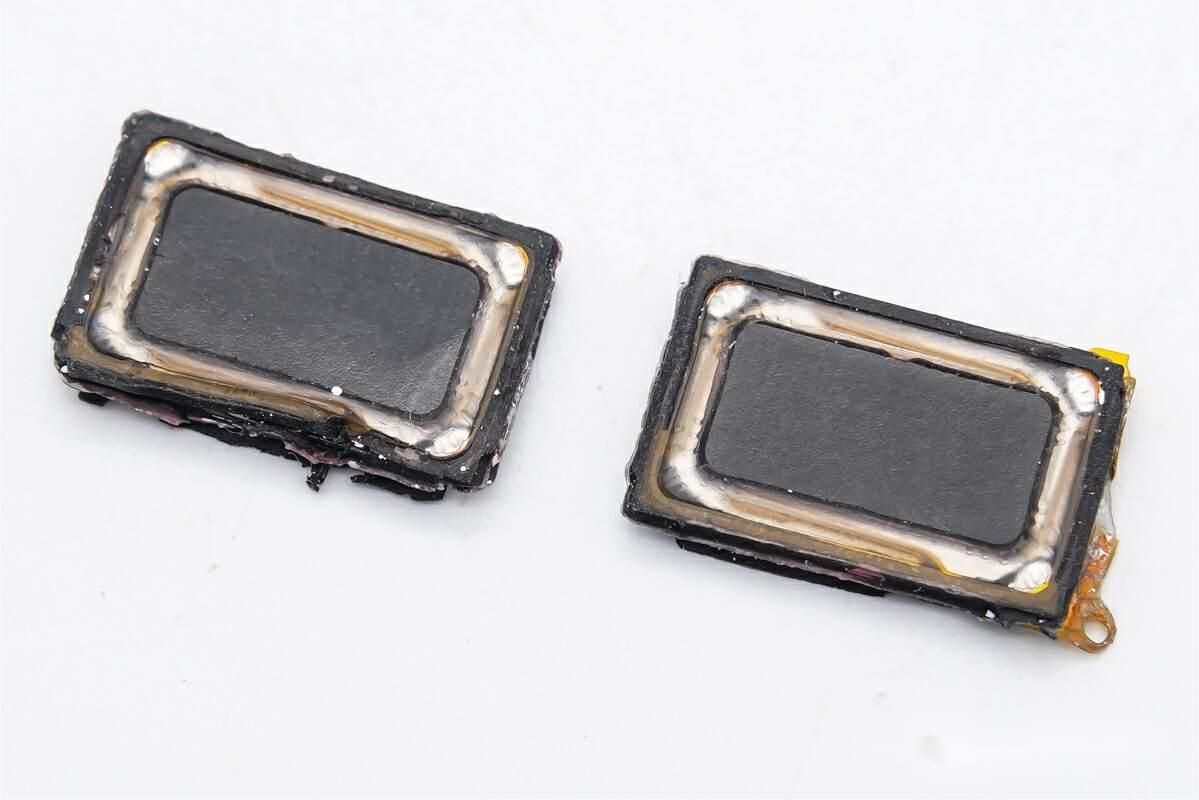
Close up of the dual speakers, with the same size.
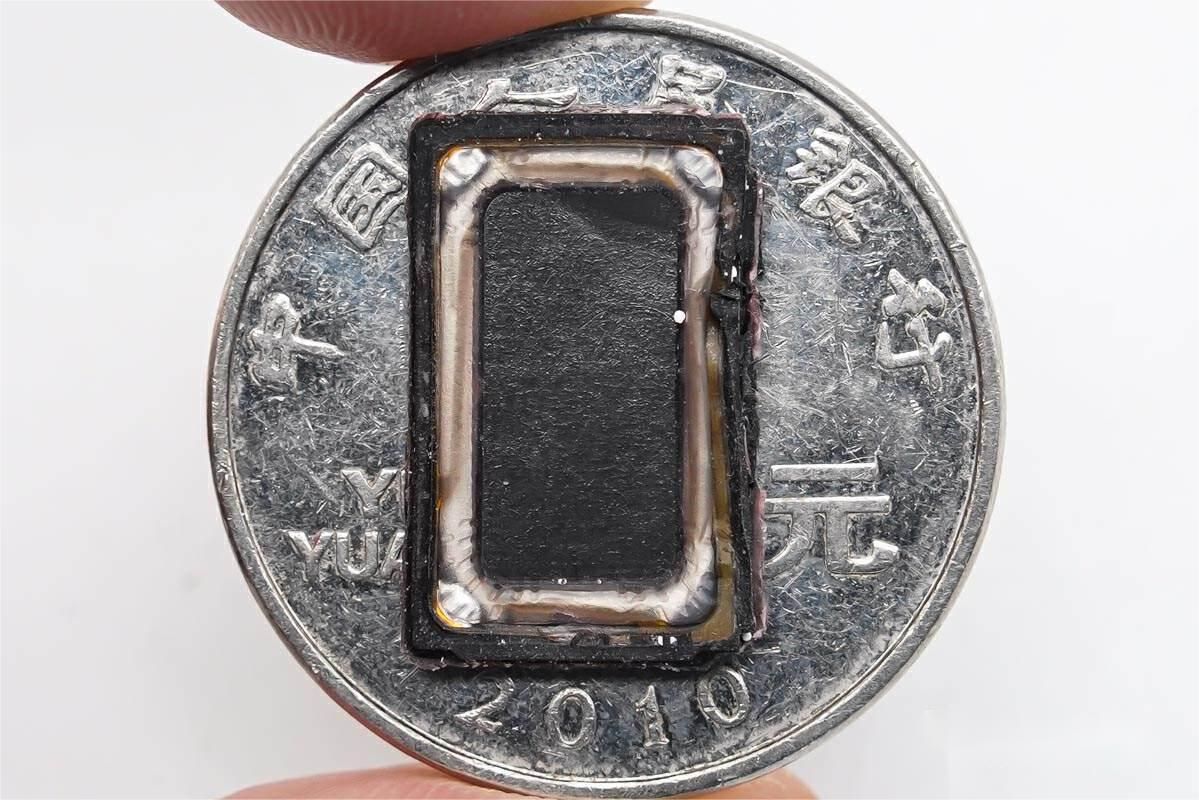
A comparison of the speakers with the size of a dollar coin.
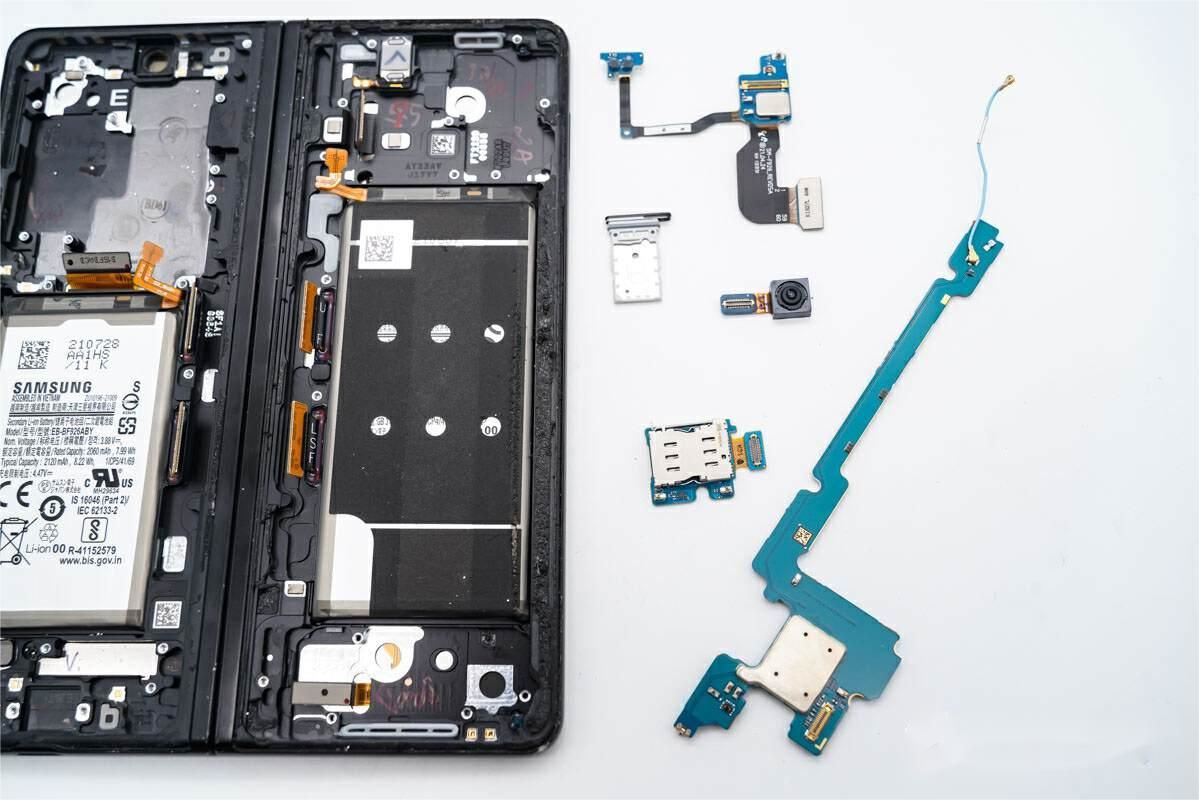
Removing the components inside the cavity, which includes the sub board, SIM slot small board, SIM card holder, external screen selfie camera and an adapter board.
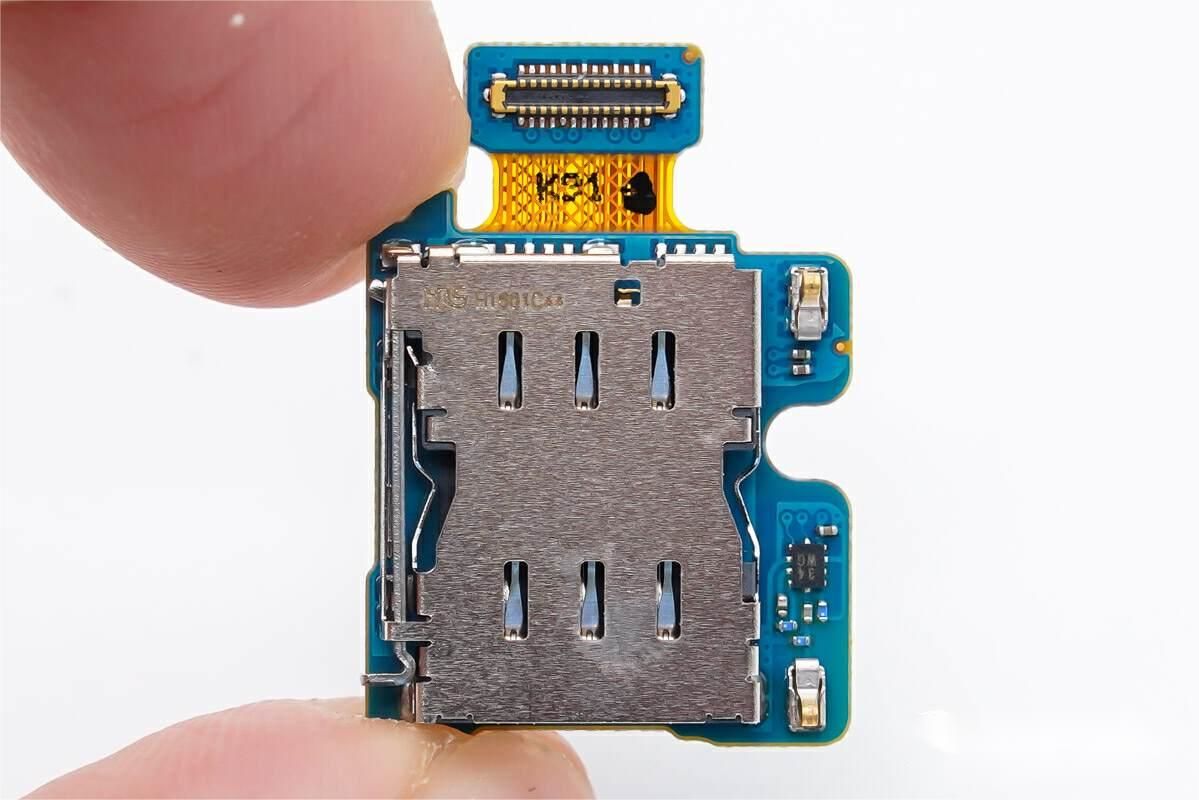
The circuitry on the SIM card slot board side at a glance, connected to the sub board via the BTB connector.
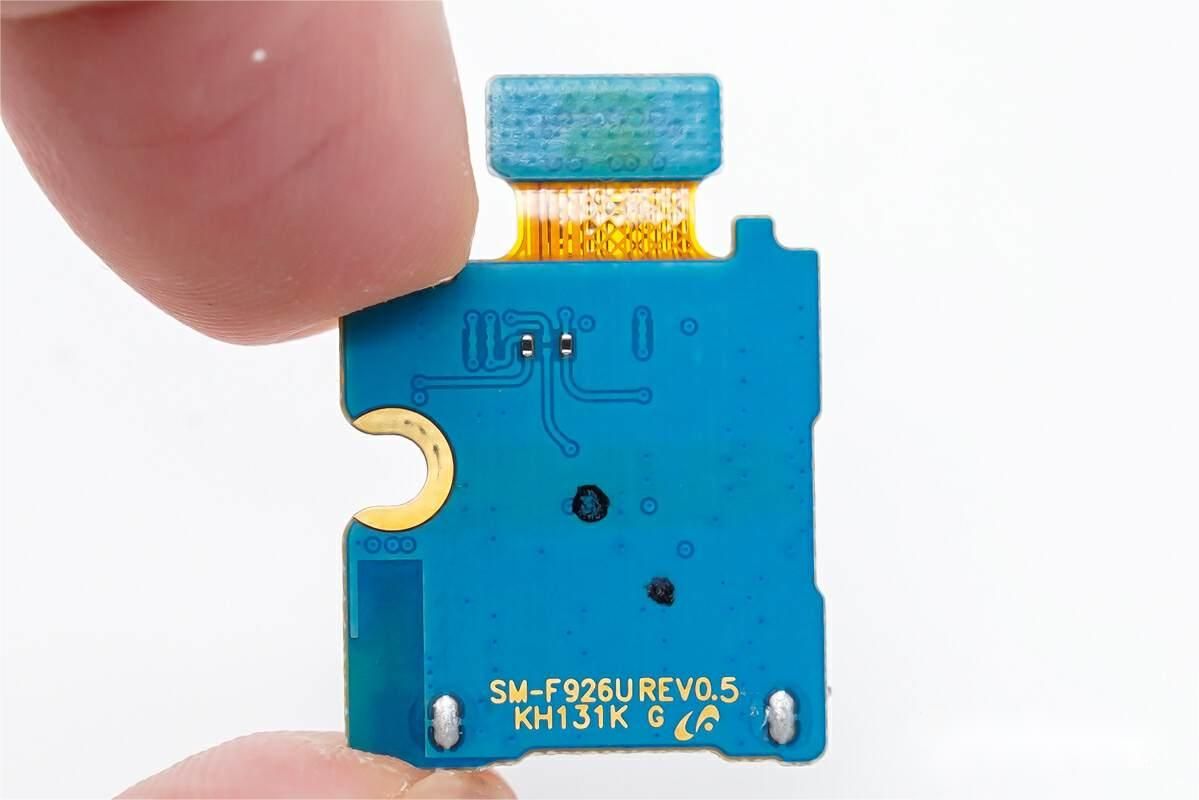
The circuitry on the other side of the SIM card slot board at a glance.
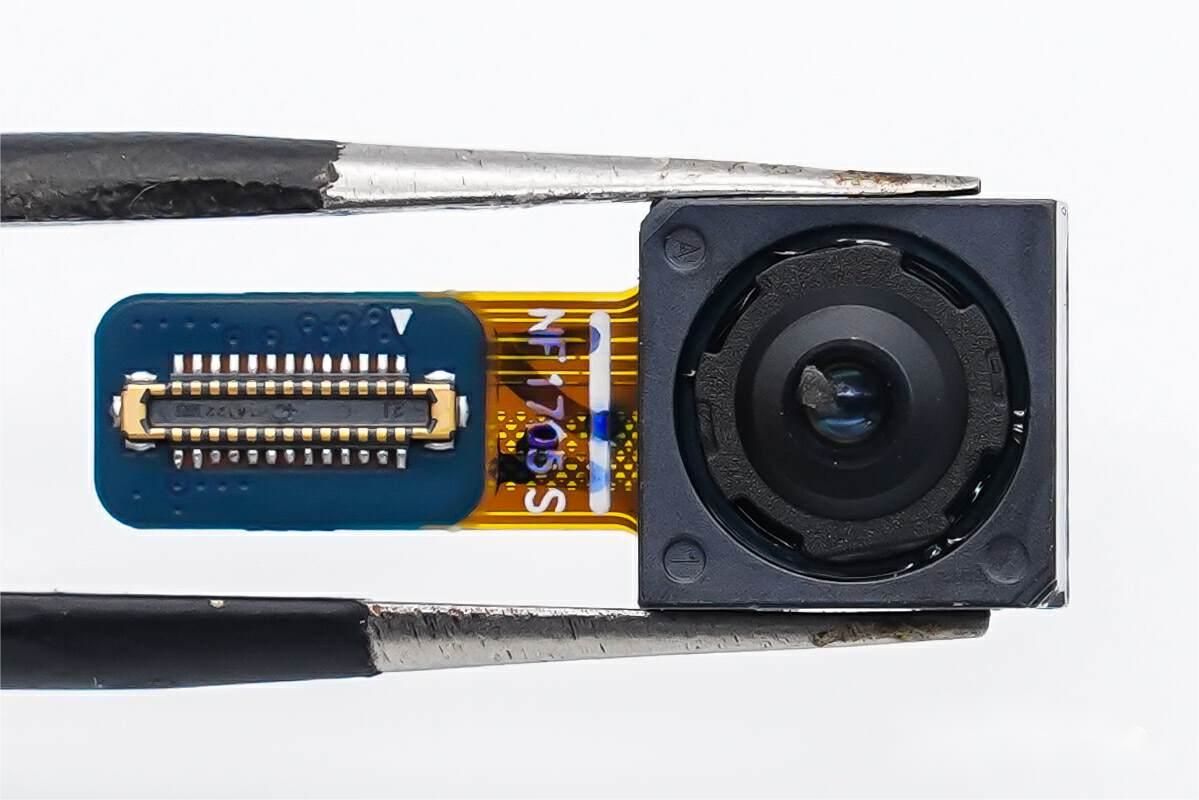
Close-up of the 10MP external selfie camera module.
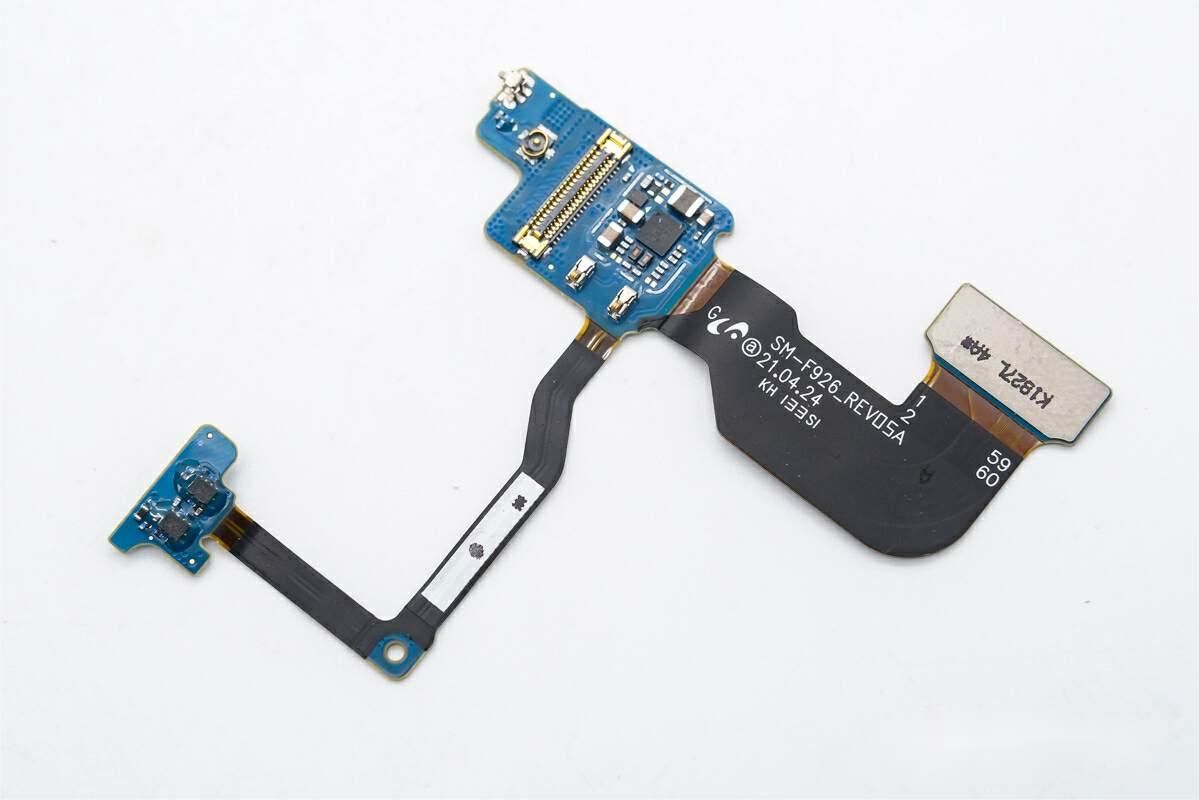
Adaptor board circuit at a glance.
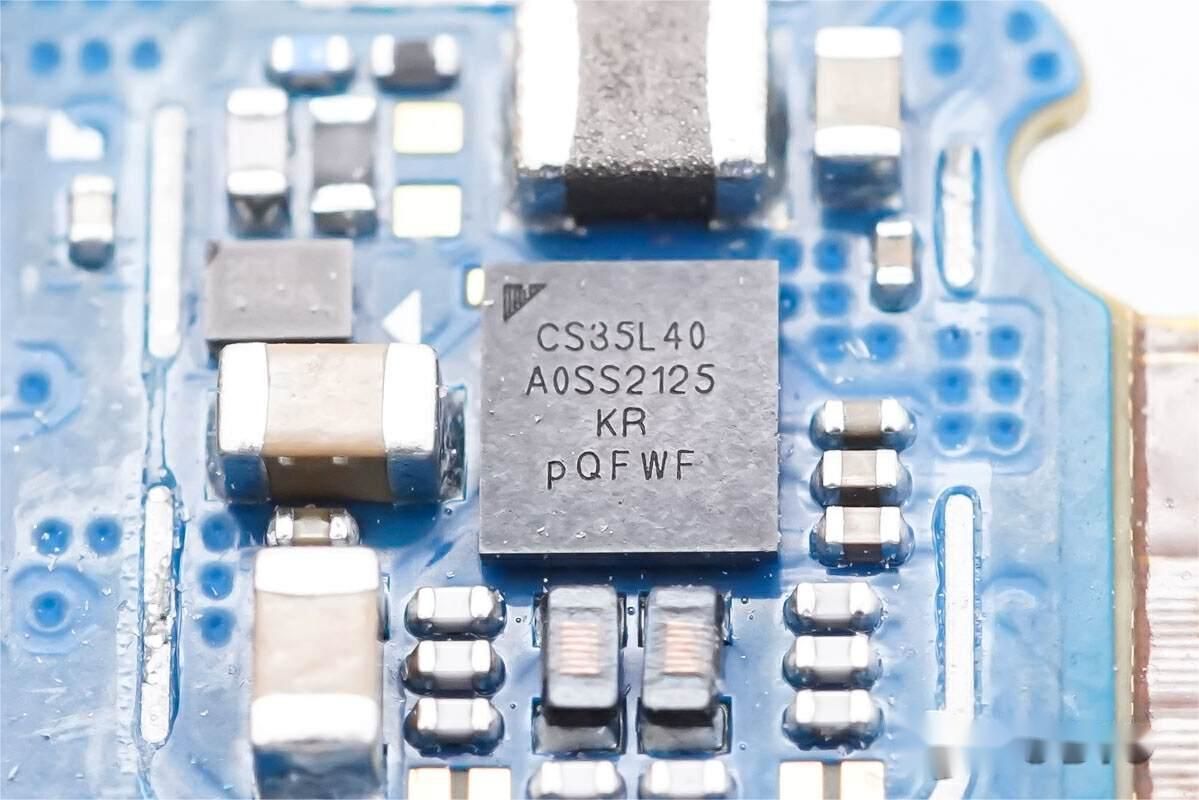
Cirrus-Logic Lingun Logic CS35L40 audio amplifier for speaker driver.
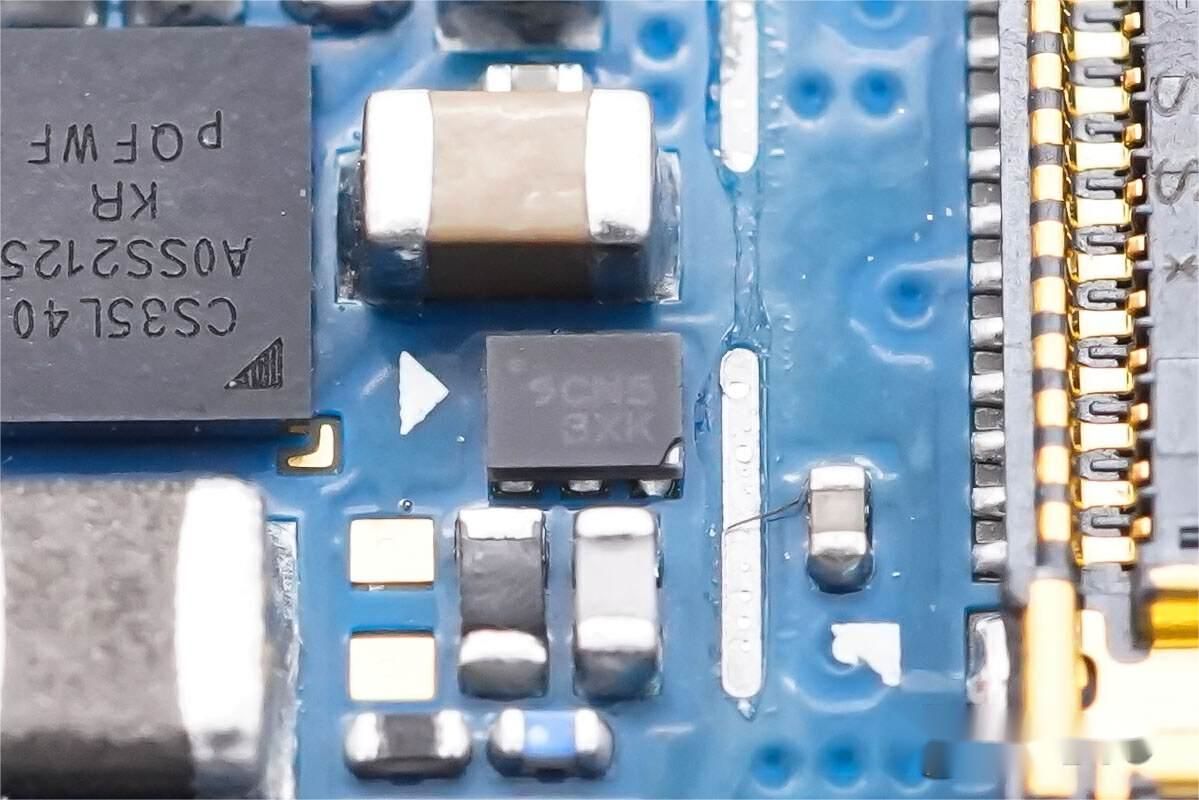
Silkscreen SCN5 IC.
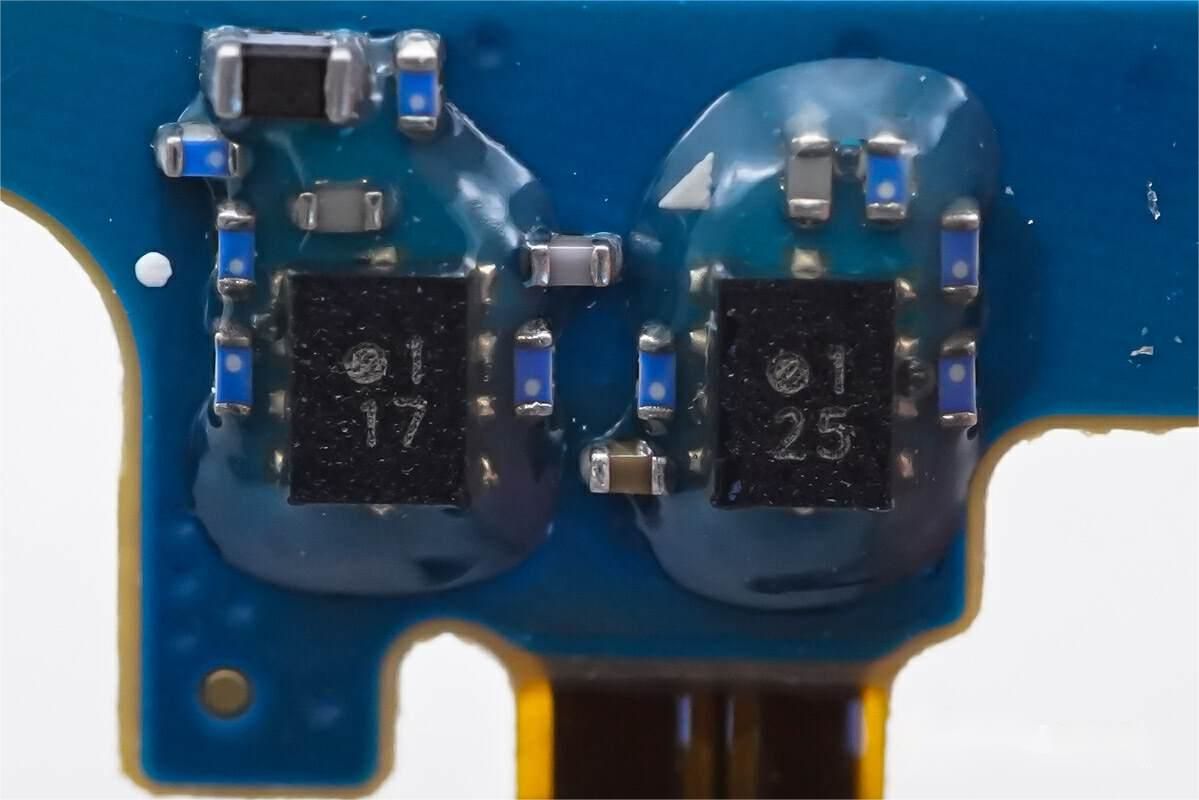
Silkscreen 1 17 and Silkscreen 1 25 ICs.
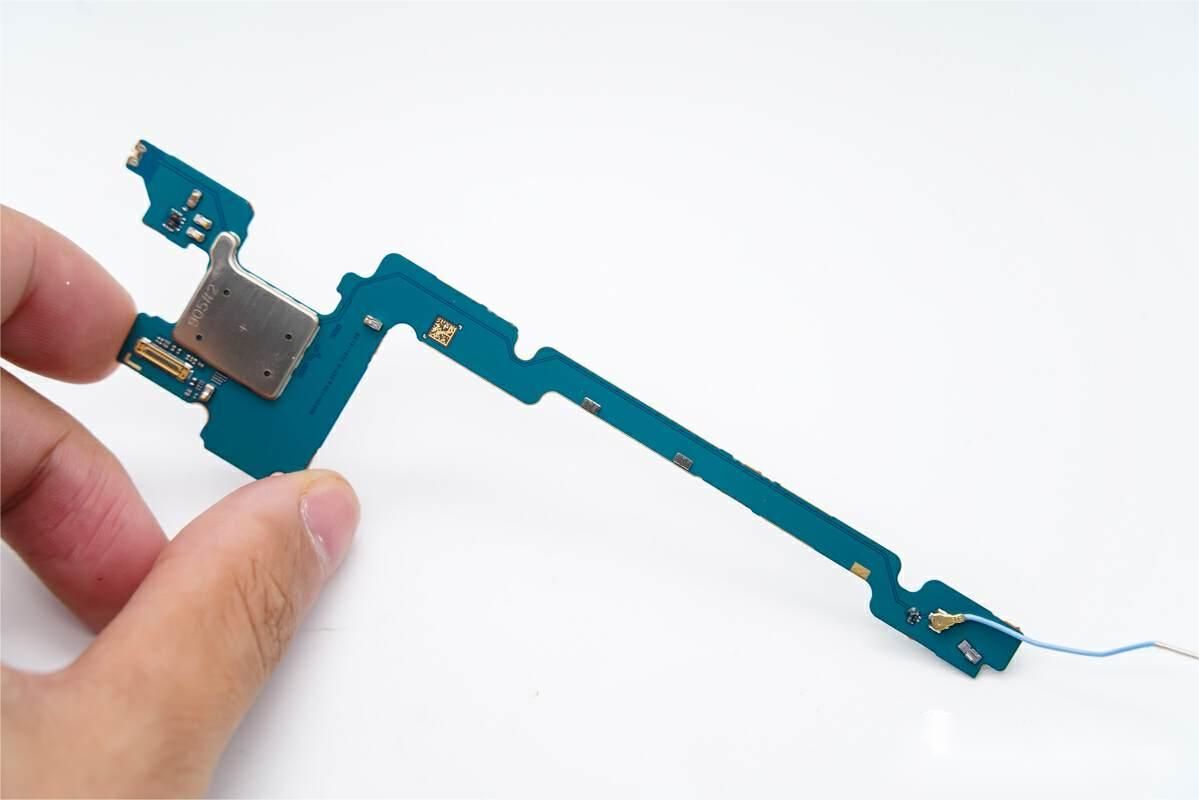
The circuit on the side of the sub board at a glance, with shield protection set.
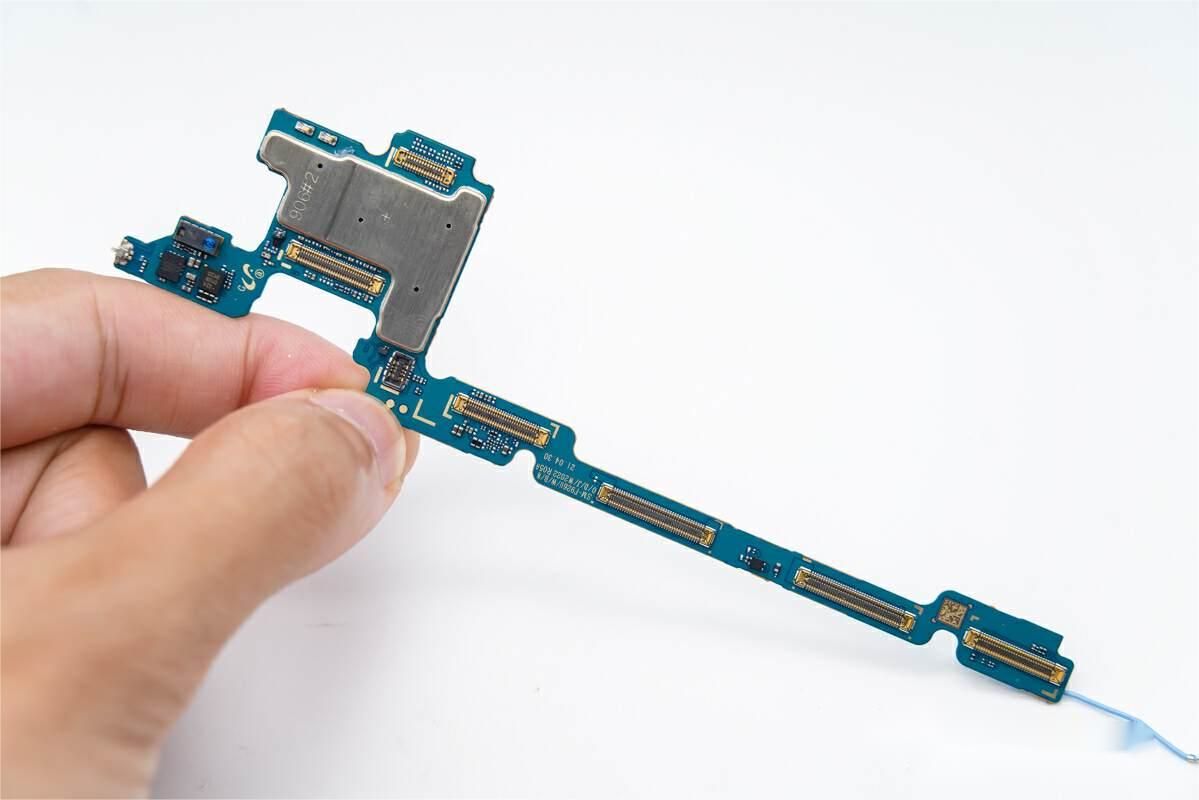
On the other side, multiple BTB connectors are connected to other modules, and the main ICs are also protected by shields.
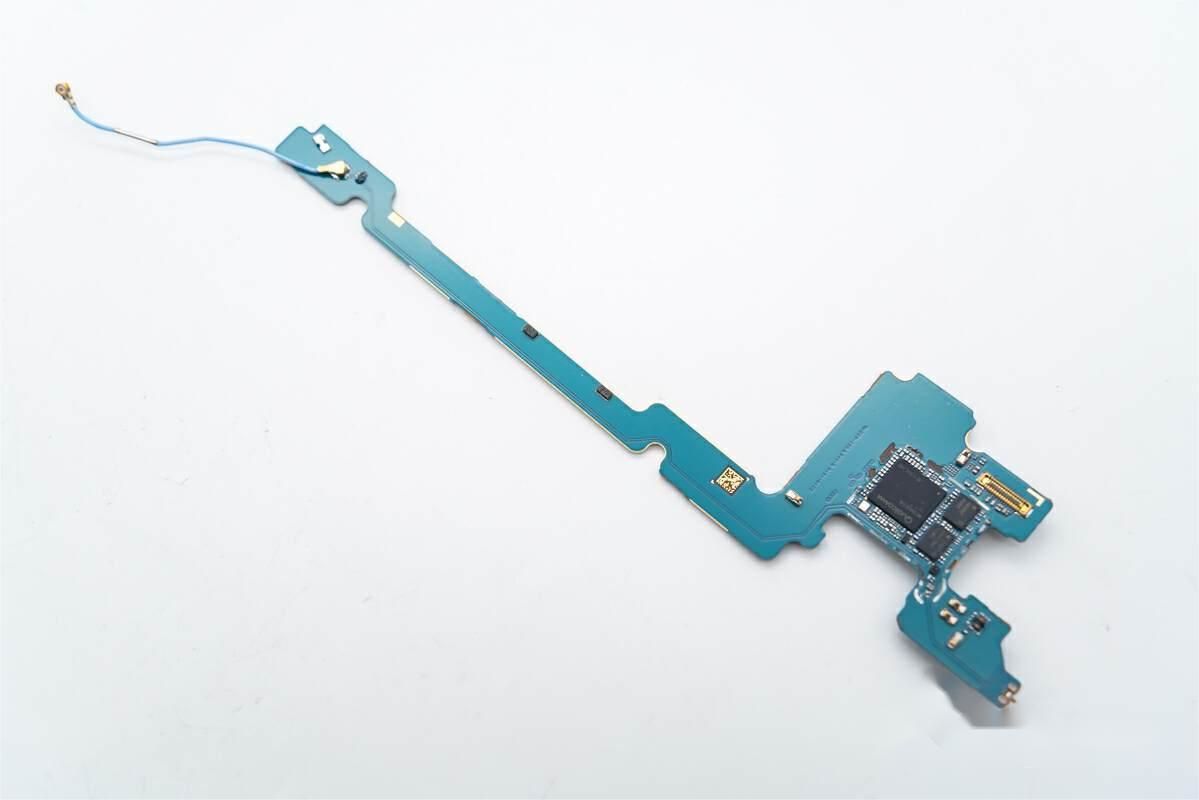
Removing the shield, the circuitry on the side of the sub board is shown.
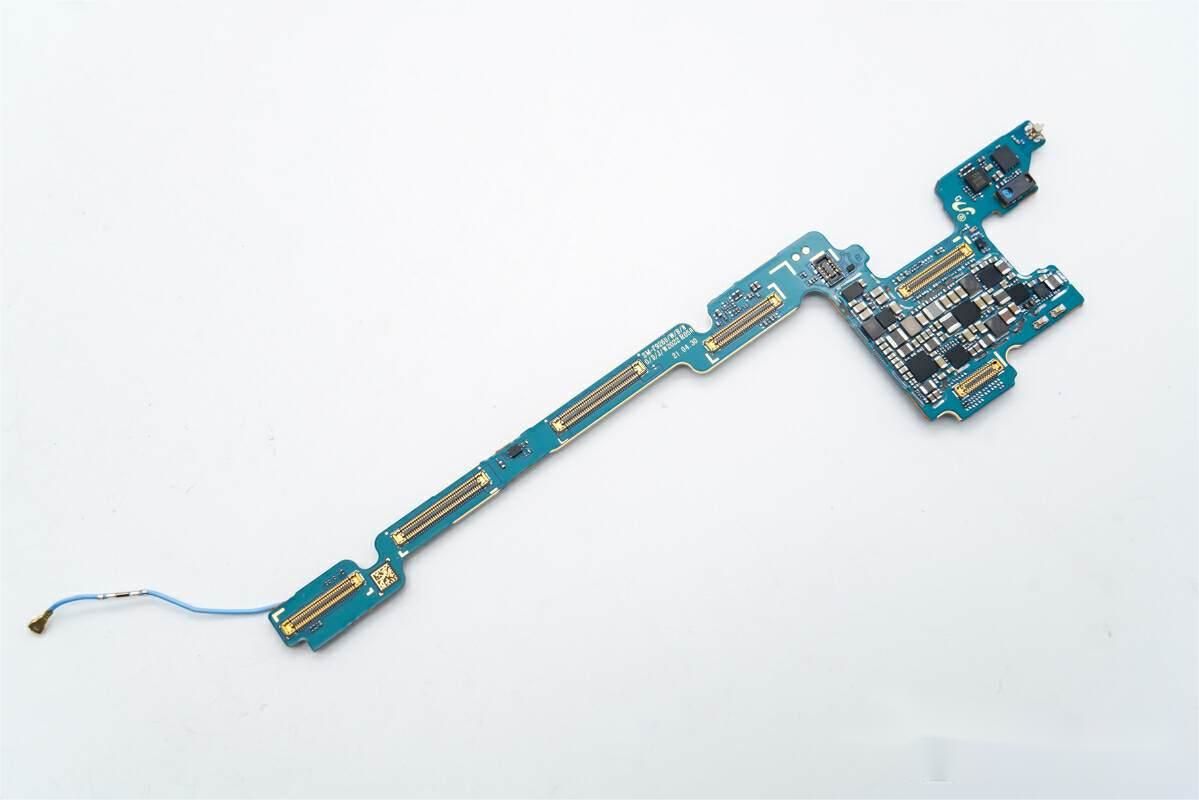
The circuitry on the other side of the sub board at a glance.
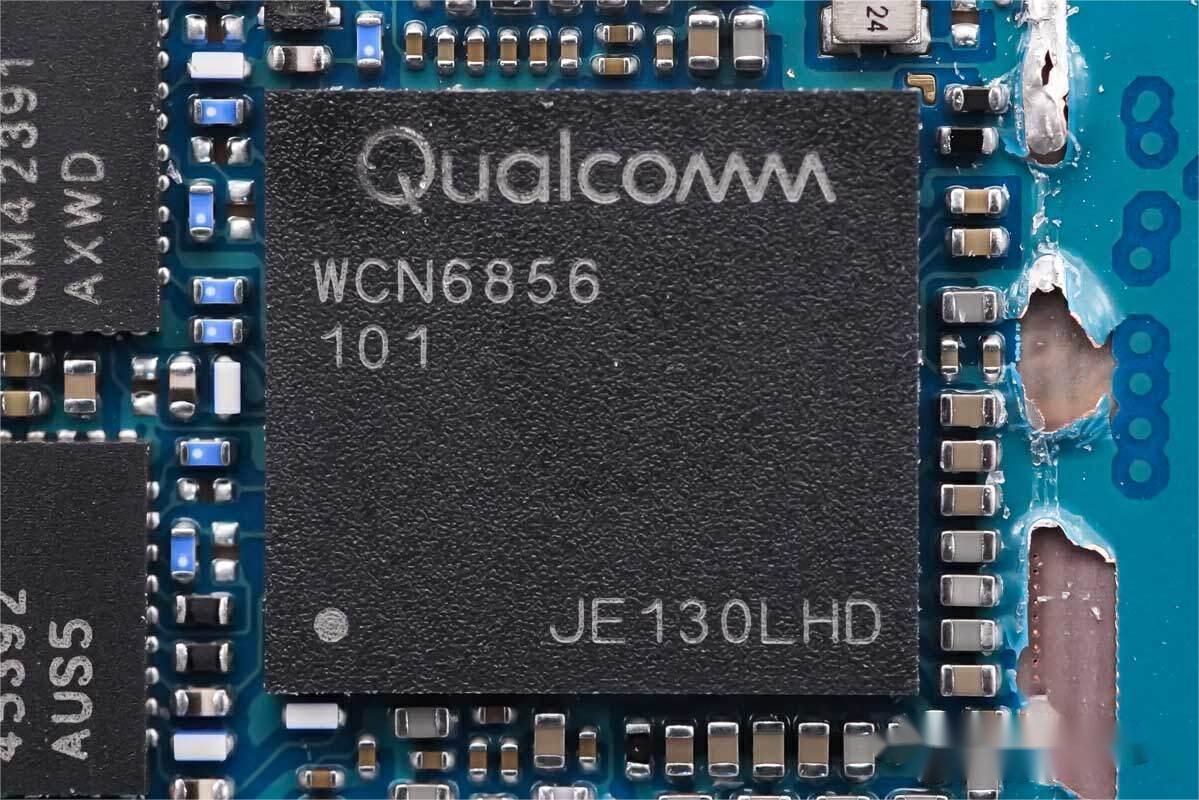
Qualcomm Qualcomm WCN6856 WiFi/Bluetooth chip.
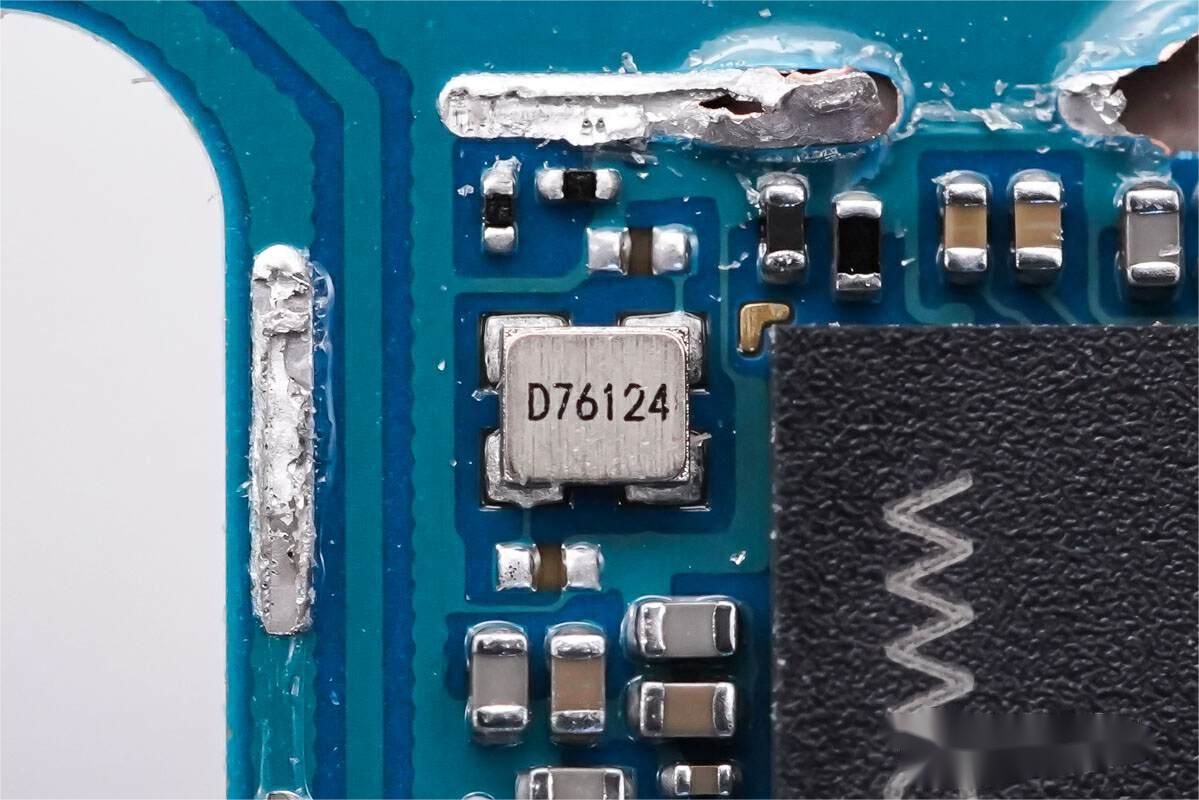
WiFi/Bluetooth chip peripheral crystal to clock it.
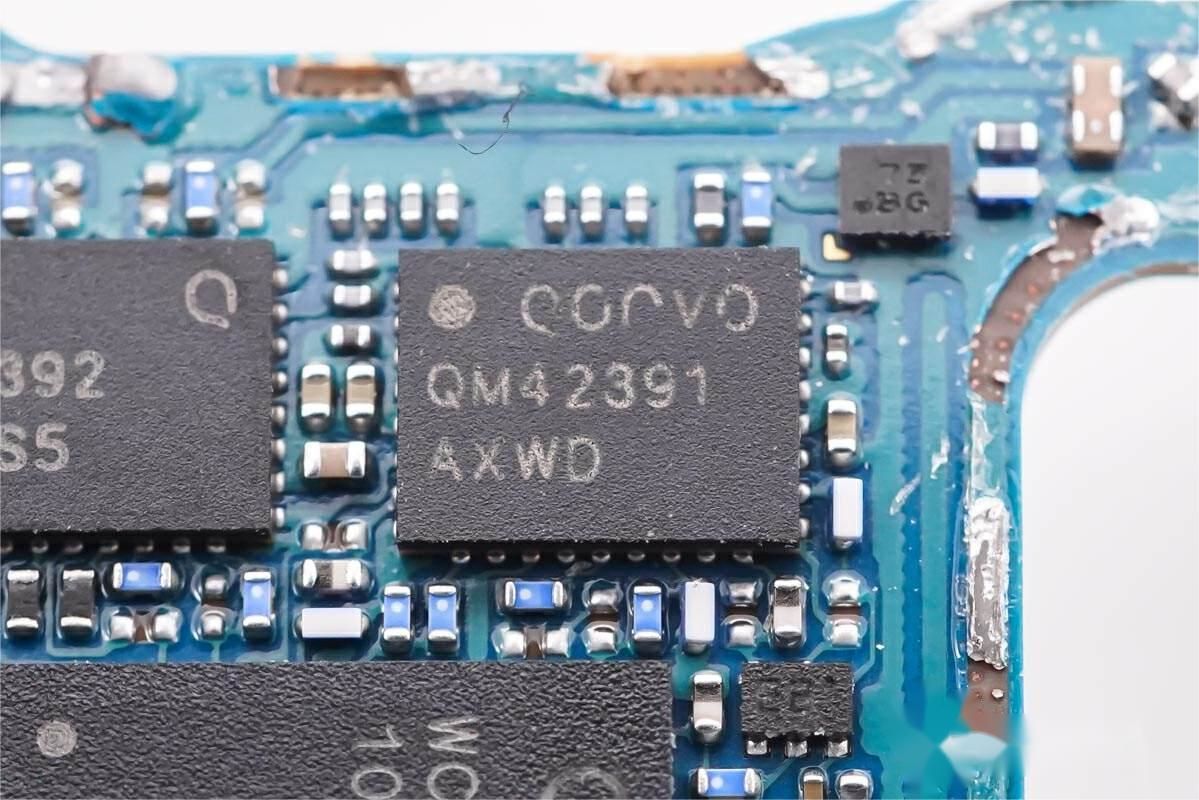
Qorvo QM43291 2.4G/5G WiFi front-end module.
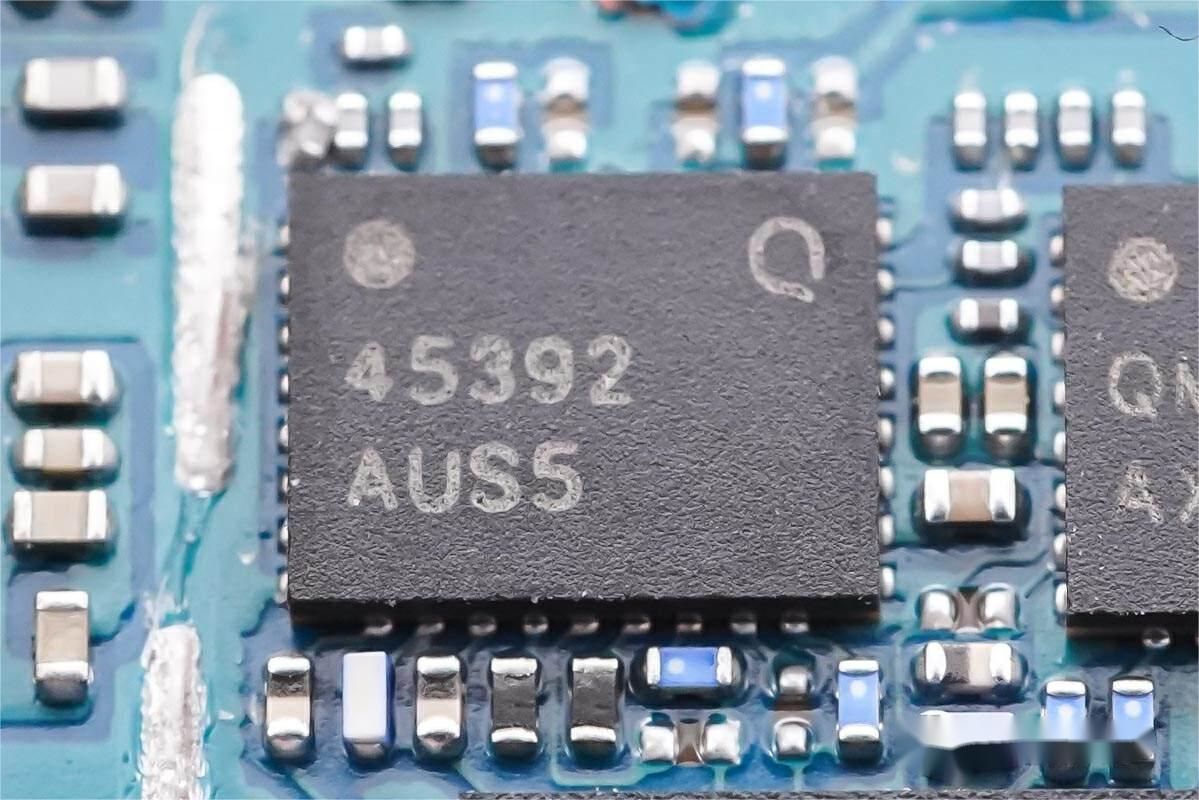
Qorvo QM45392 2.4G/5G WiFi front-end module.
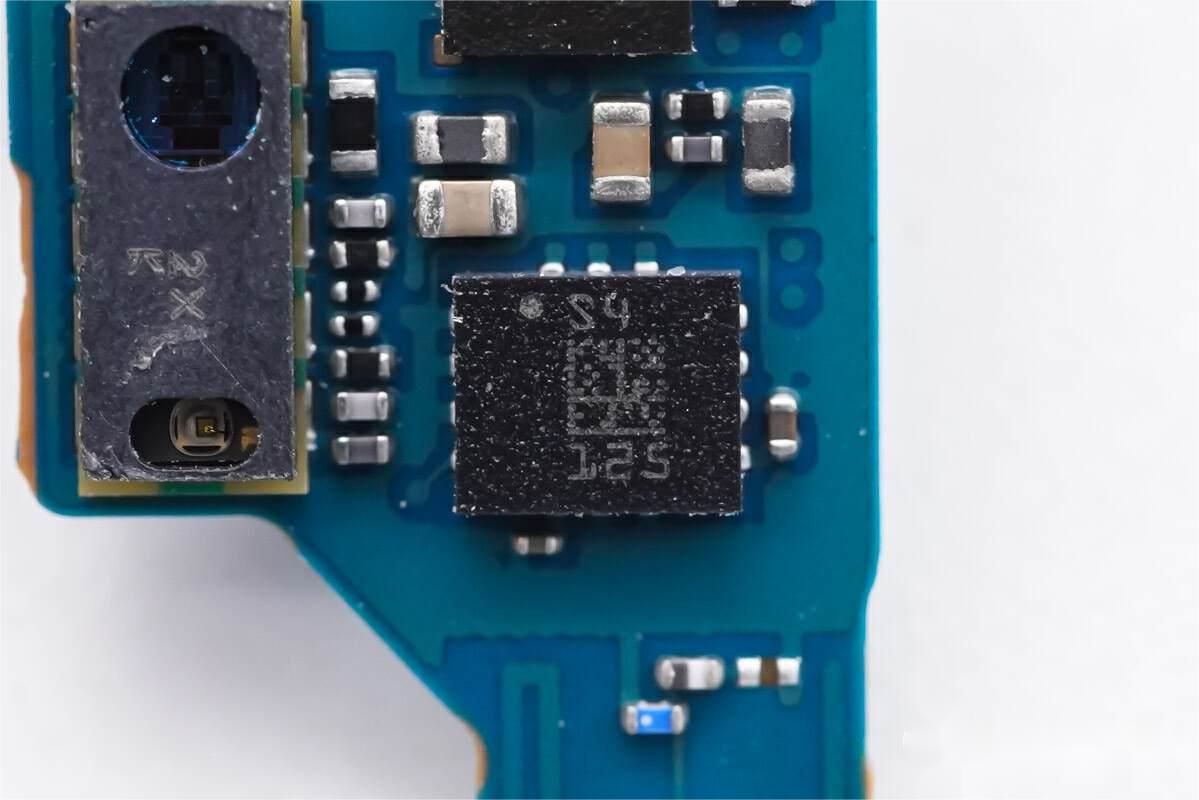
ST STMicroelectronics LSM6DSOWTR sensor, a 6-axis sensor with state machine support, provides a richer interaction design complement with a built-in state machine for picking up the phone to light up the screen, motion data tracking and other functions.
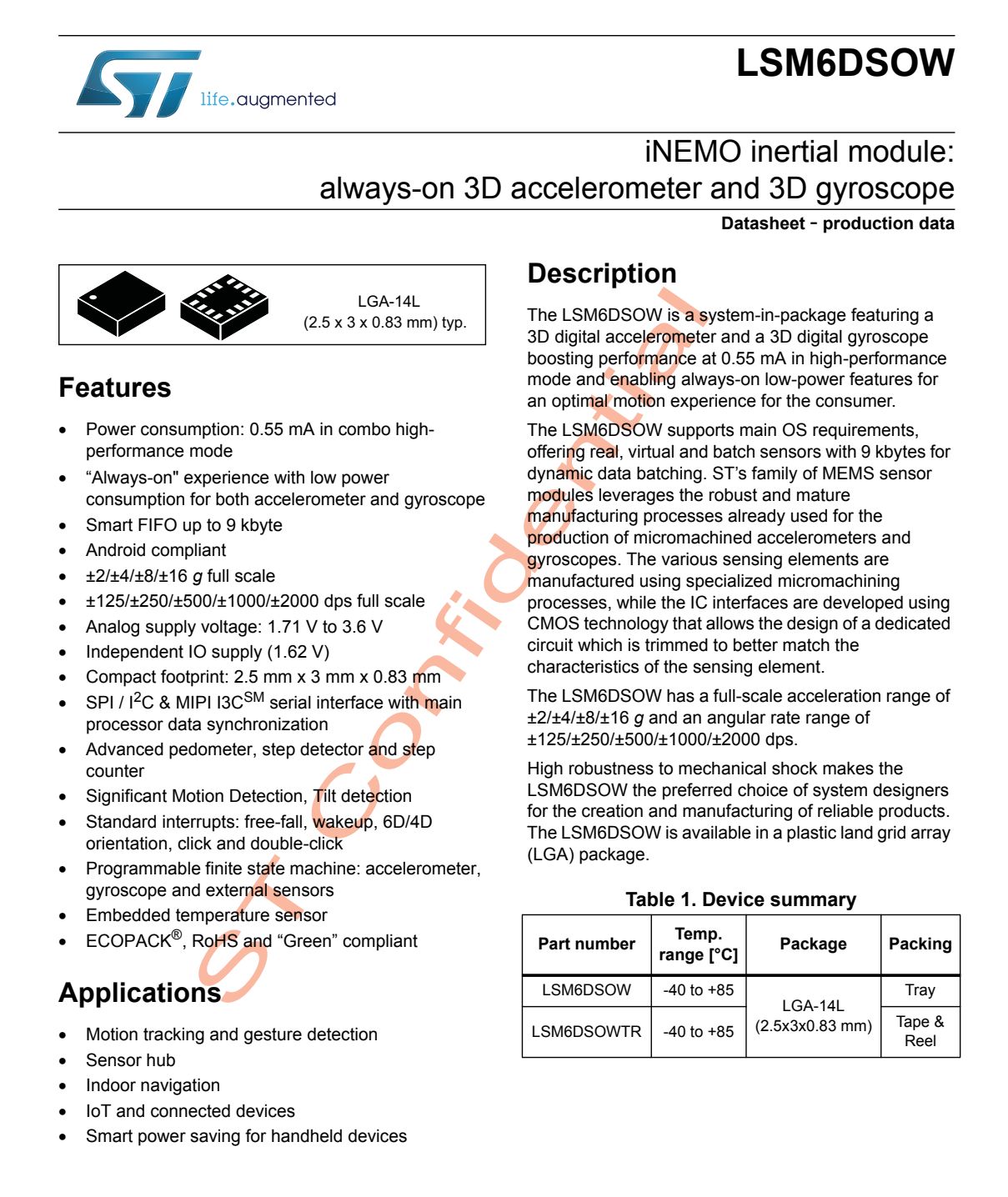
ST STMicroelectronics LSM6DSOWTR detail diagram.
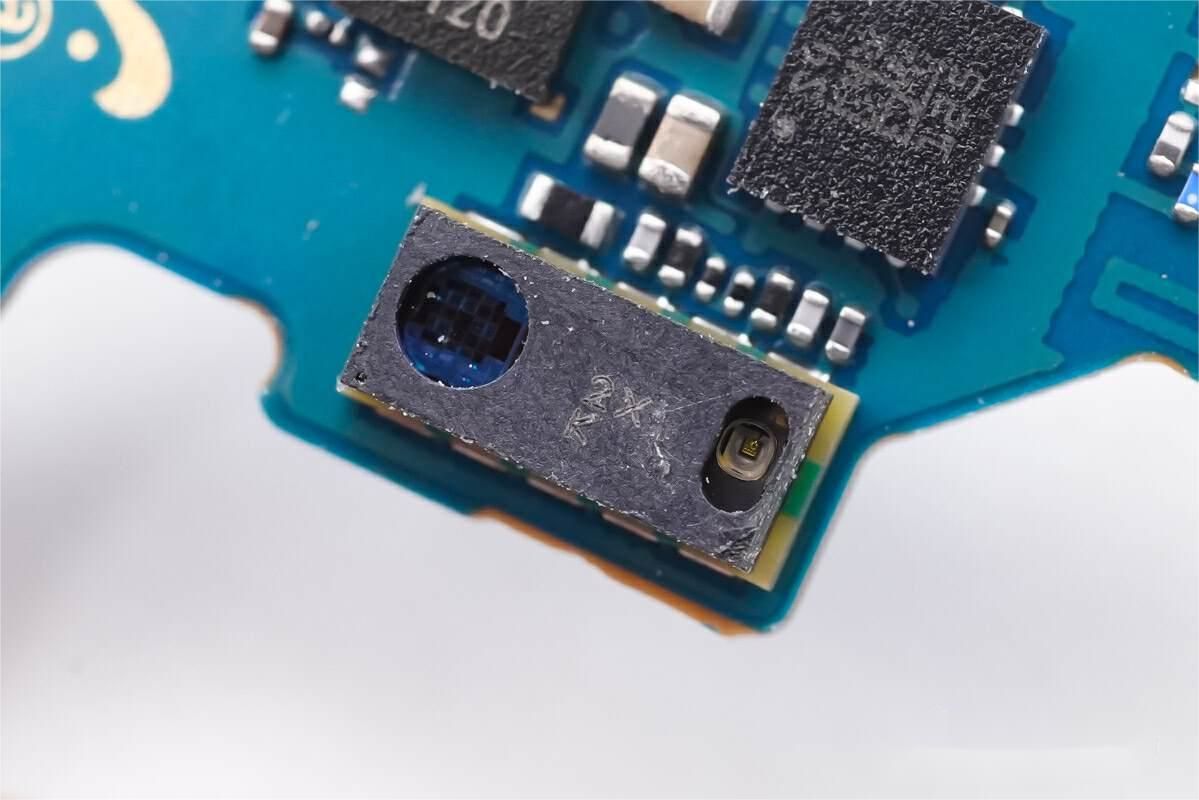
Close-up of the infrared optical sensor.
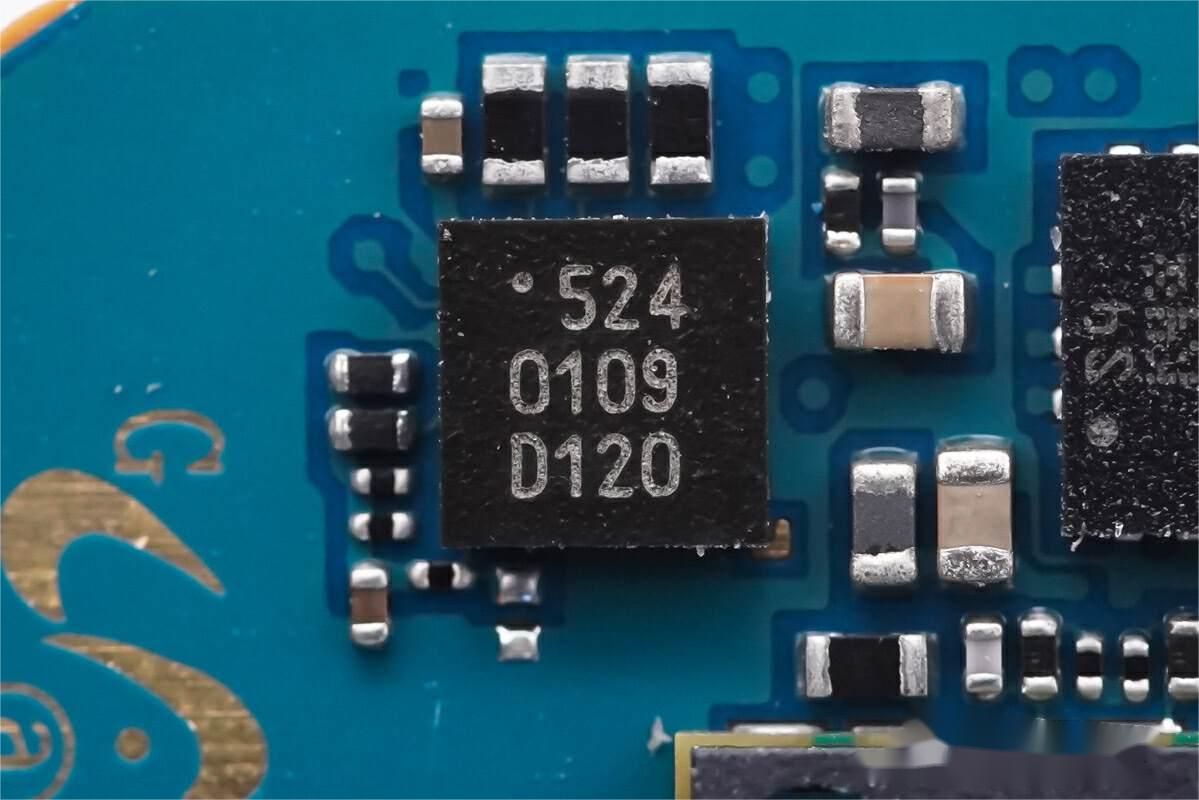
Silkscreen 524 0109 of the IC.
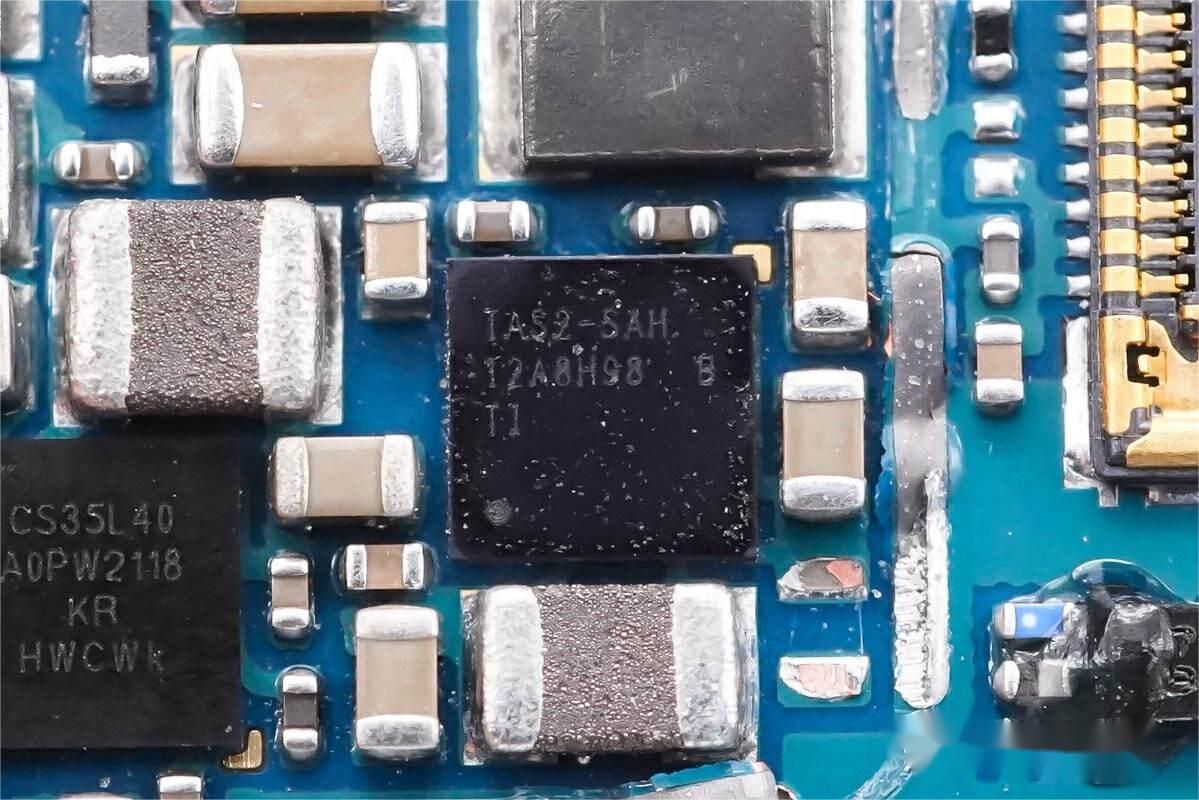
Silkscreened TAS2-5AH IC.
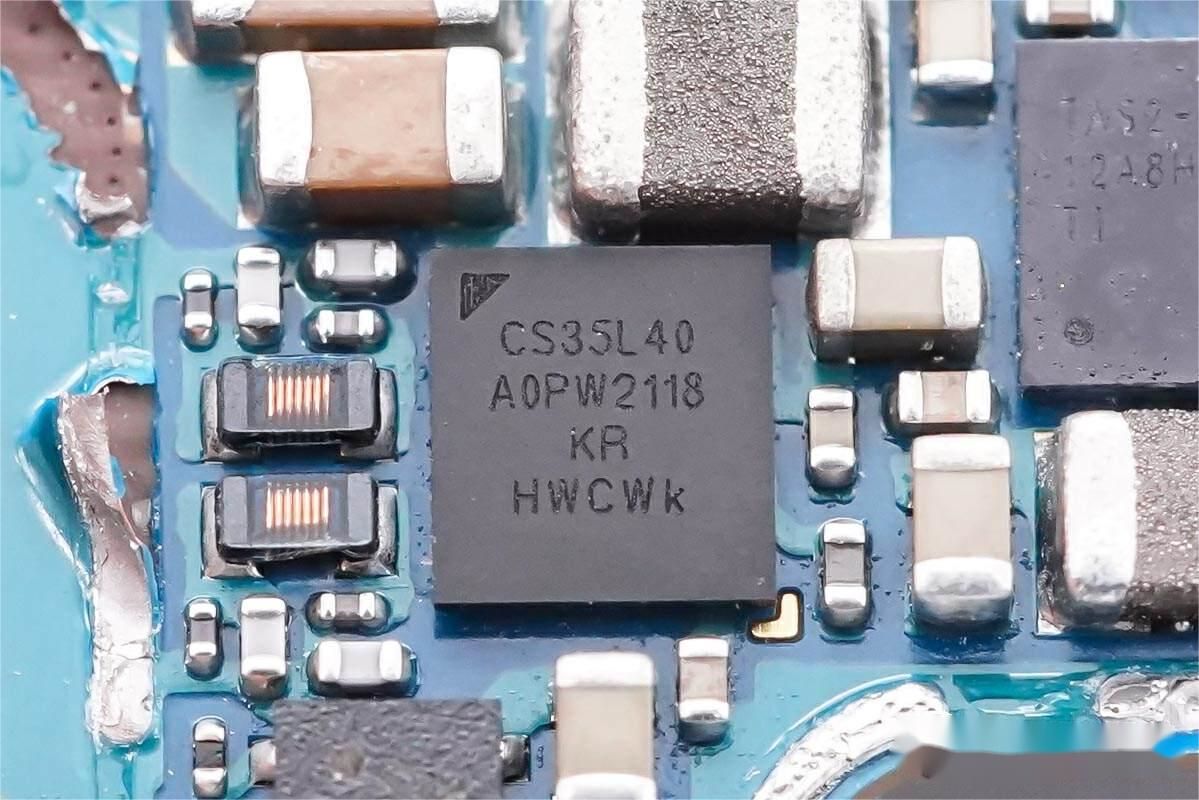
Another Cirrus-Logic Lingun Logic CS35L40 audio amplifier for driving speakers.
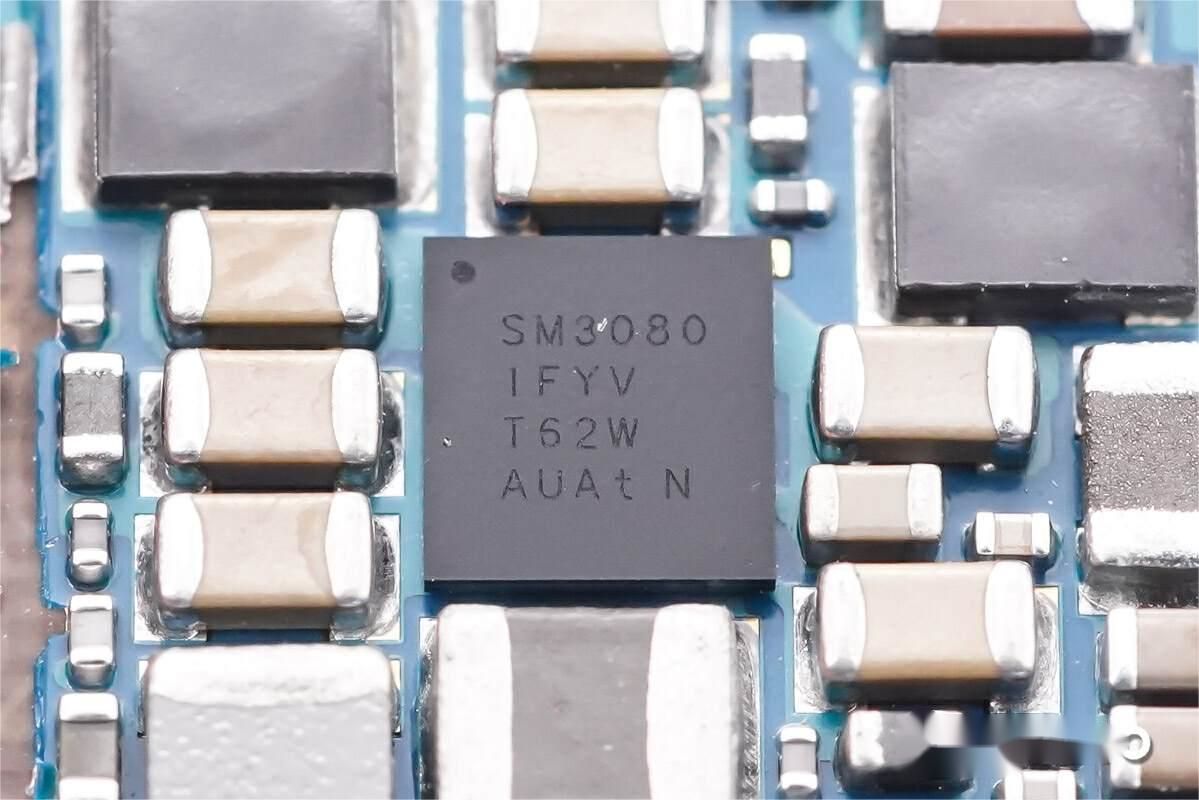
SiliconMitus SM3080 screen power management chip.
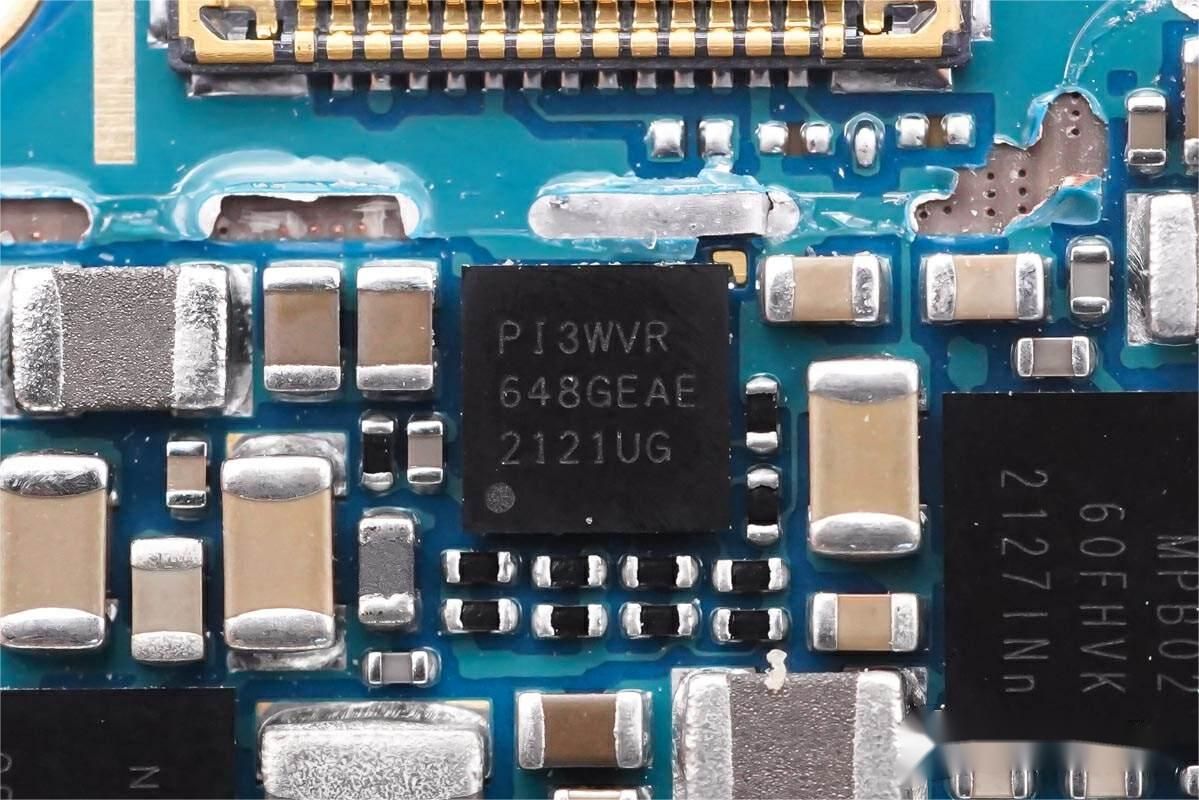
The Diodes P13WVR 648GEAE five-channel MIPI PHY switch is capable of switching physical layers that follow the C-PHY or D-PHY serial interface specification (defined by industry standard specifications) for smartphone image sensors and cameras, as well as displays for mobile product applications.
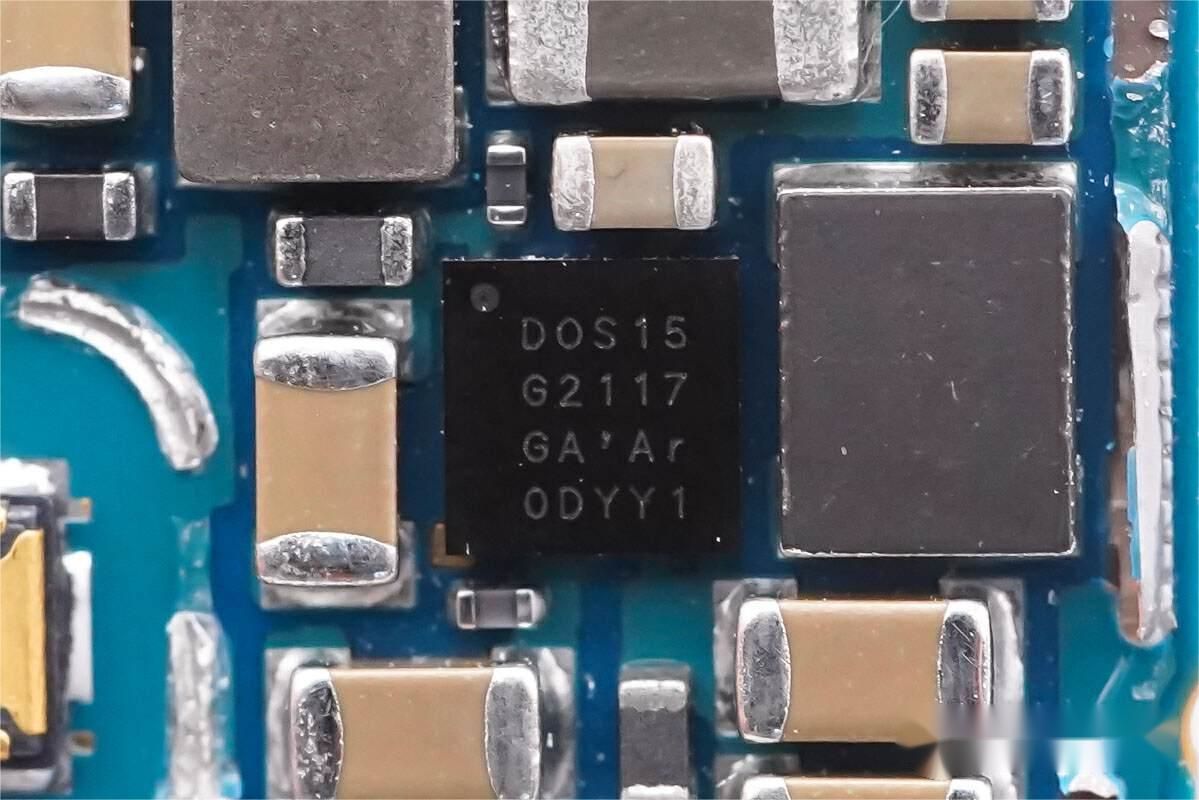
Silkscreened DOS15 G2117 IC.
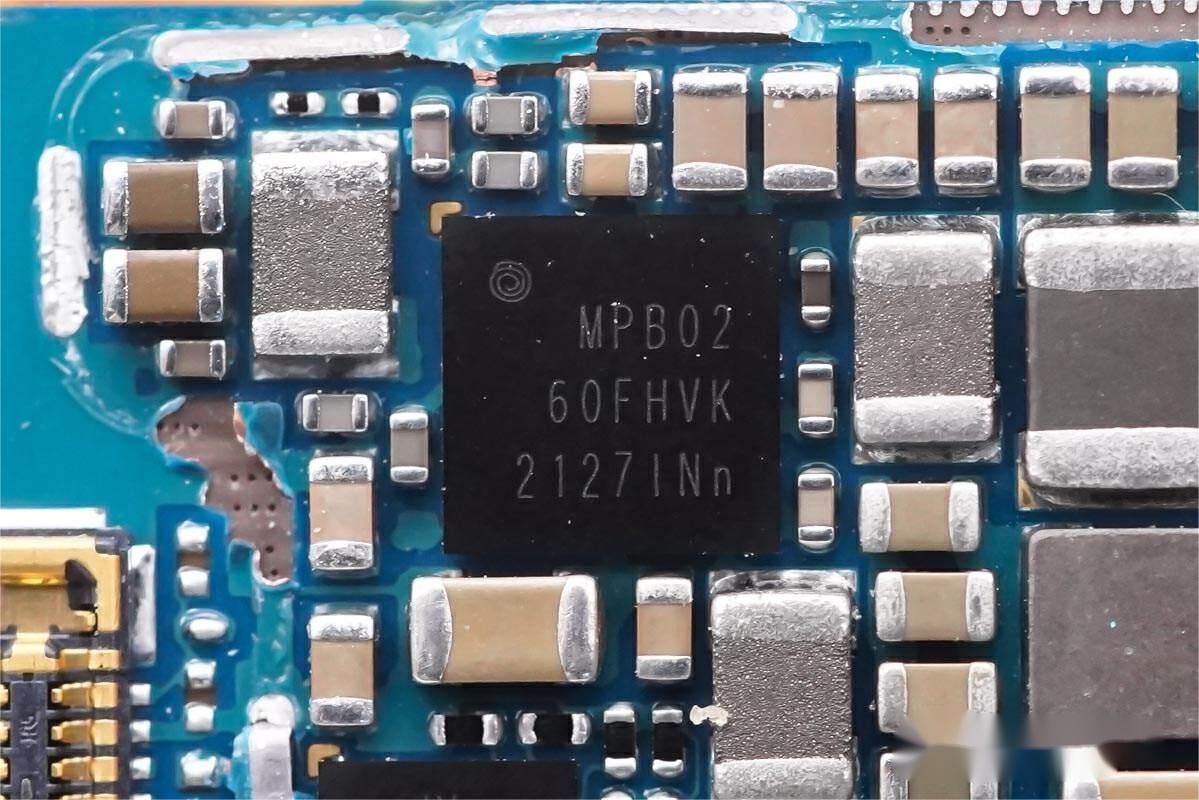
Screen printed MPB02 60FHVK IC.
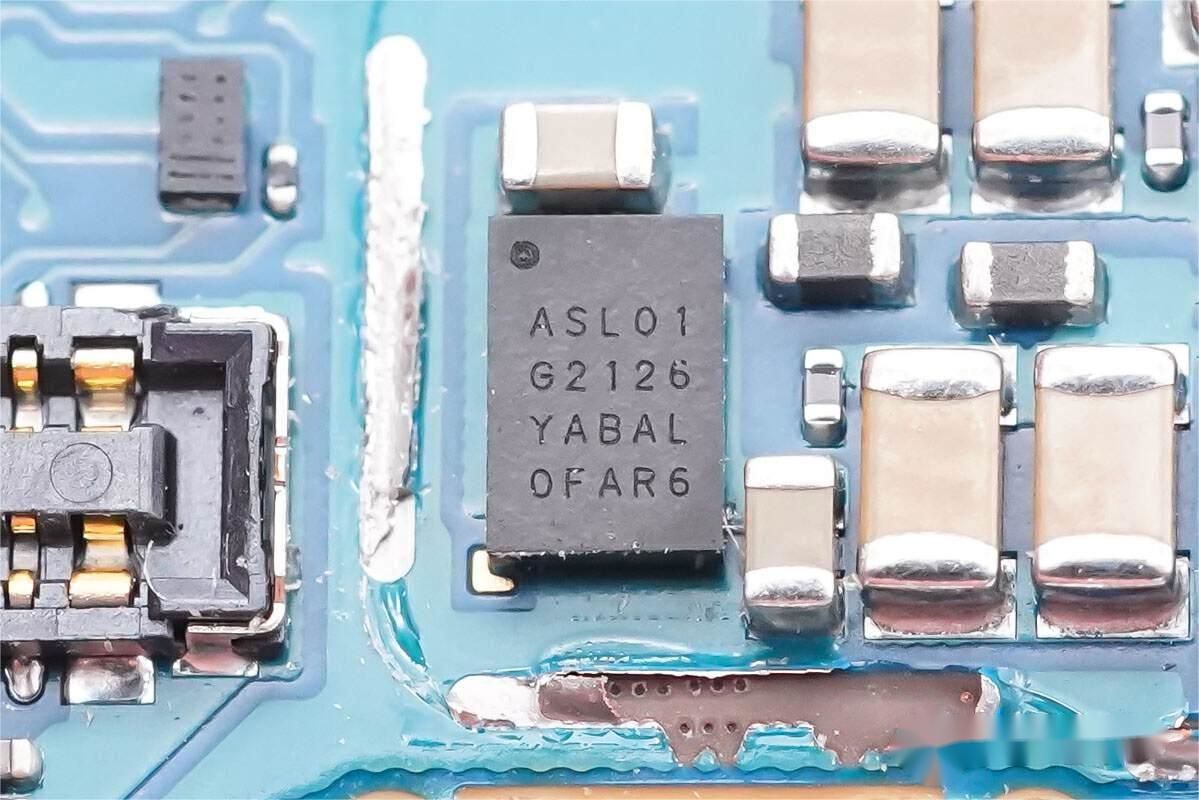
Silkscreen ASL01 G2126 IC.
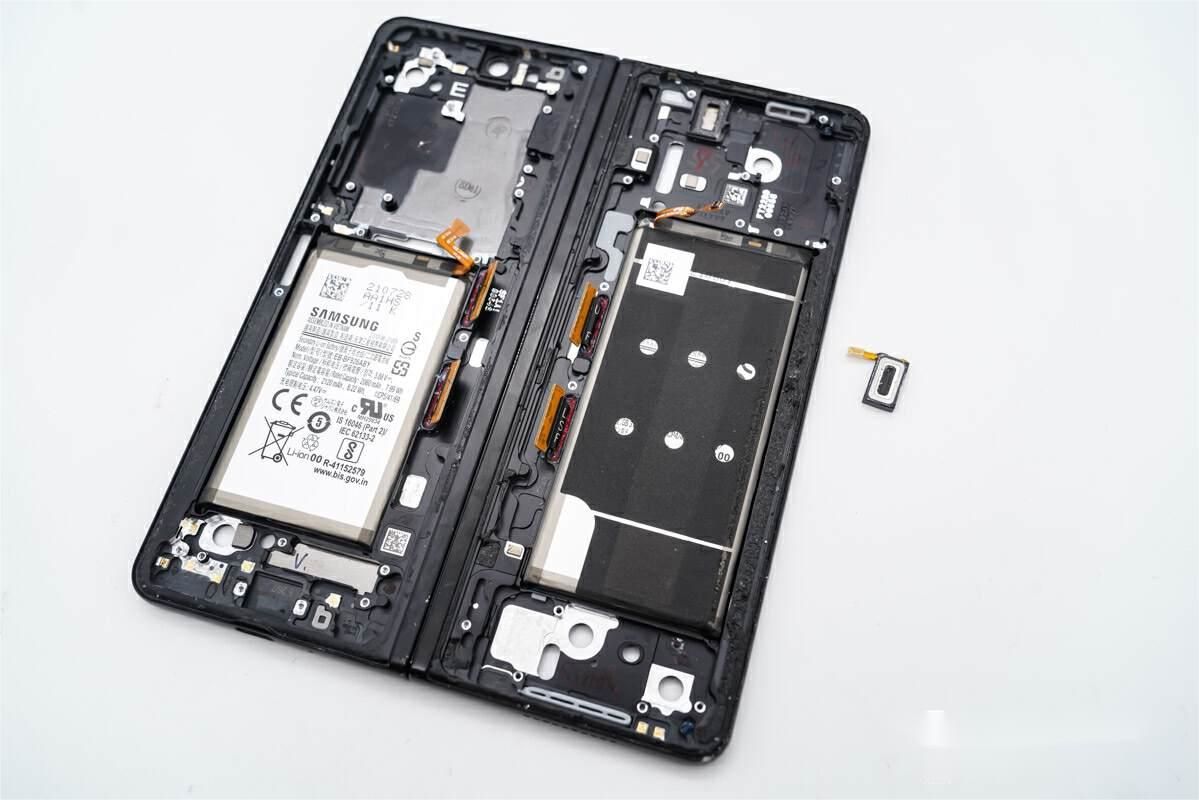
Remove the built-in microphone of the phone.
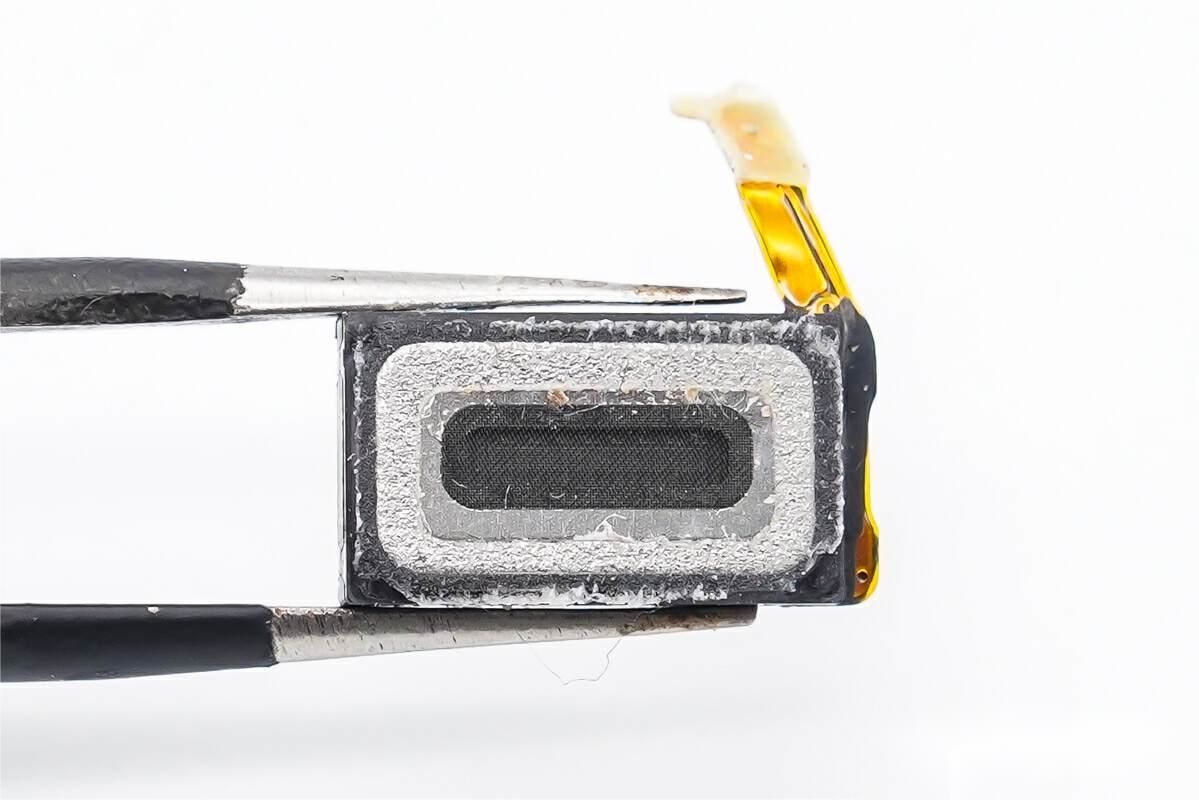
Close up of the front of the microphone.
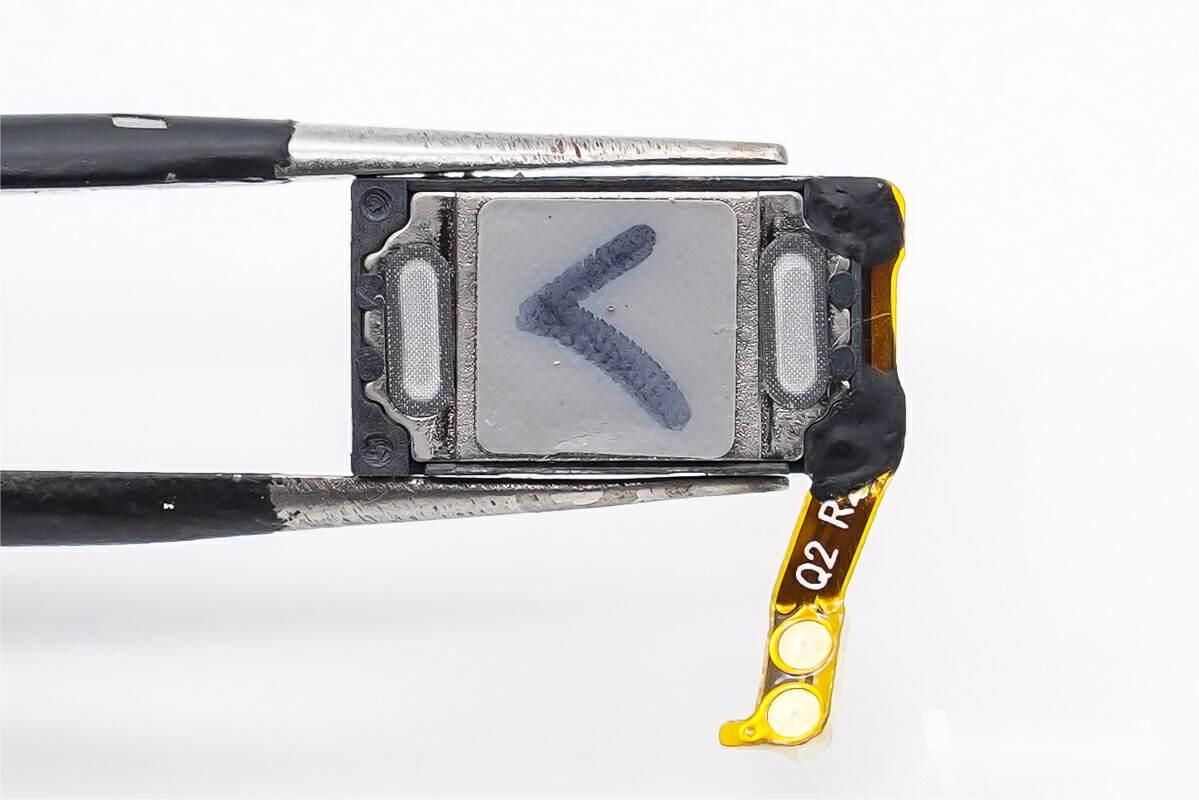
Close-up of the back of the microphone, with the exposed copper connected to the secondary board.
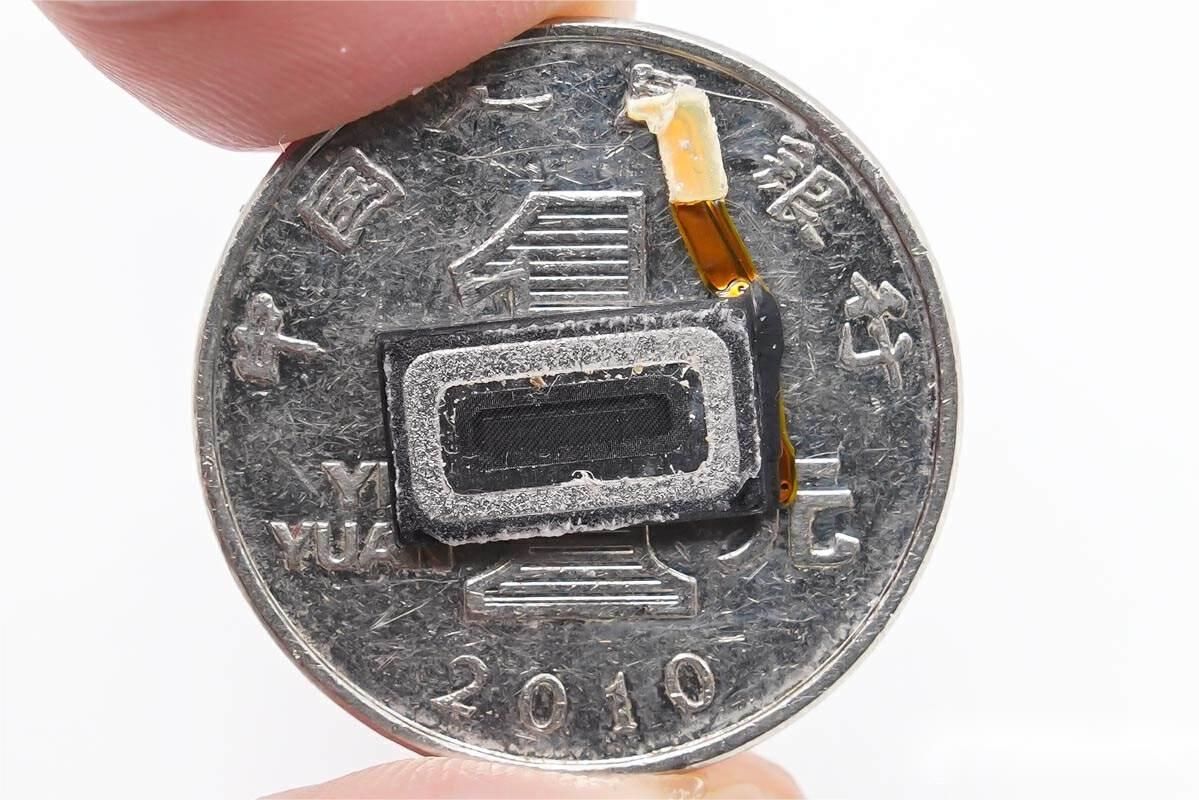
A comparison of the size of the microphone and a dollar coin.
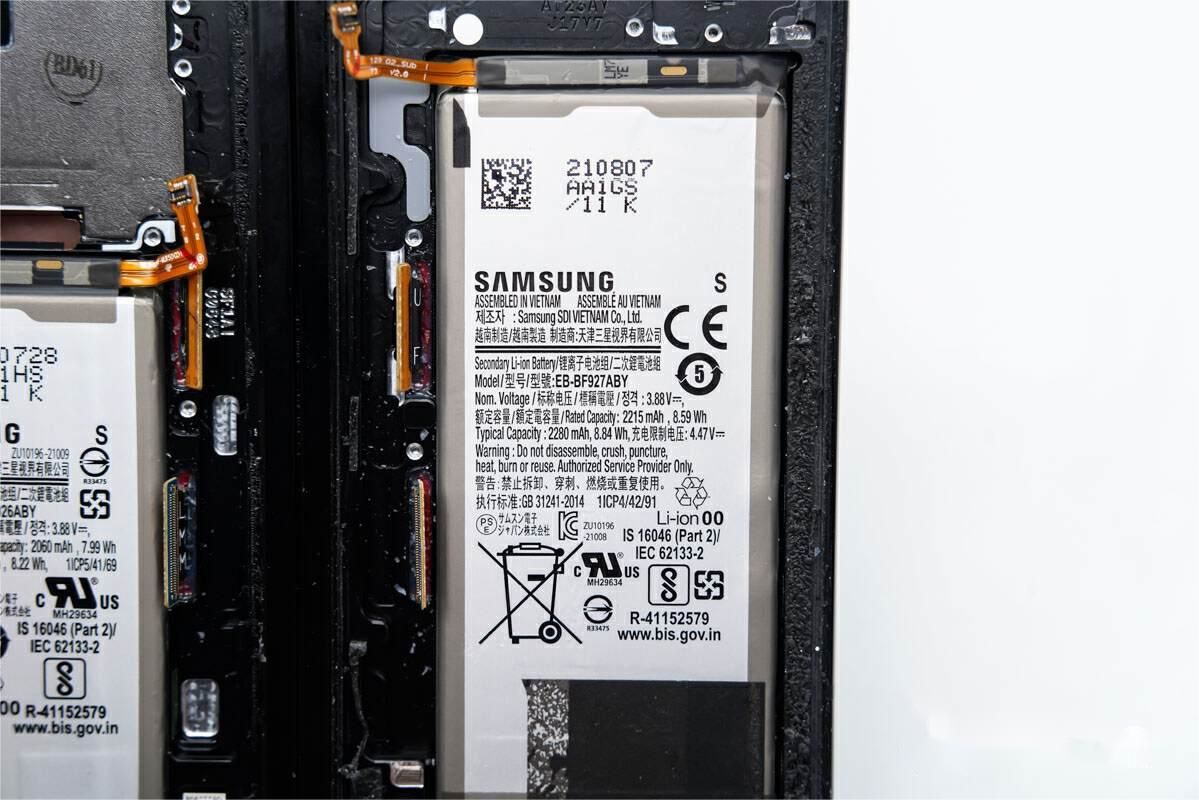
The second lithium-ion battery pack, model: EB-BF927ABY, has a slightly larger capacity compared to the first one, and the volume is designed to be flatter due to cavity limitations. Parameters, rated capacity: 2215mAh 8.59Wh, typical capacity: 2280mAh 8.84Wh. The total capacity of the two batteries reaches 4400mAh (typical), with adjustable power consumption to achieve long-lasting life.
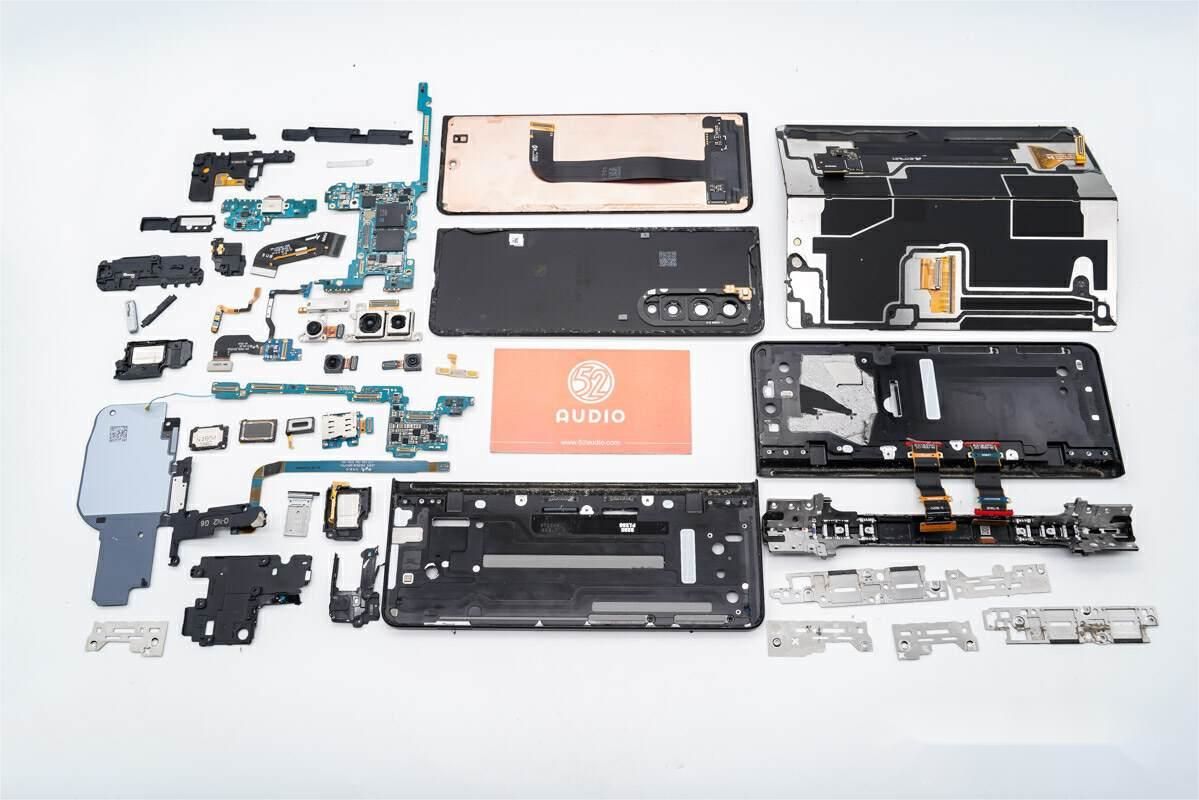
SAMSUNG Samsung Galaxy Z Fold3 folding screen phone disassembly family photo.
III. Summary
Through the disassembly to understand, SAMSUNG Samsung Galaxy Z Fold3 folding screen phone internal structure is extremely complex, the hardware configuration compared to our often disassembled TWS headset is very different, but the modular design has been very mature, between the modules are connected through BTB connectors or contacts, easy to pre-production factory assembly and later maintenance, of course, also facilitates our disassembly.
The main hardware configuration of the phone, the inner screen bending part, equipped with a 7.6-inch AMOLED full-screen made of enhanced Samsung ultra-thin flexible glass (UTG), using a precision hinge structure, with four groups of rare earth permanent magnet magnets from Jinkun, to ensure the stable fixation of the structure, and to achieve multi-angle hovering, to provide support for a variety of novel interactive experience of the phone.
The outer cavity houses dual battery units with a total capacity of 4400mAh (typical value); built-in dual speakers + microphone, dual MEMS microphone + VPU voice pickup unit; built-in 4 modules and 5 cameras; and X-axis linear vibration motor, UWB ultra-wideband antenna, etc. What can be learned about the chip solution, the combination of Qualcomm Snapdragon 888 + Samsung K3LK4K40CM-BGCP LPDDR5 memory + Samsung KLUFG8RHDB-B0E1 UFS3.1 flash memory is used to provide the phone with powerful performance.
It also comes with Qualcomm WCN6856 WiFi/Bluetooth chip and Qorvo QM43291+QM45392 2.4G/5G WiFi front-end module; Qualcomm SDR868 RF transceiver chip and Qualcomm QPM6810 RF front-end module; Sigatron SKY77365-11 GSM/GPRS/EDGE quad-band power amplifier module ( PAM); NXP R10B1AA ultra-wideband (UWB) transceiver chip; Cirrus-Logic CS40L25 boost haptic driver and two CS35L40 audio amplifiers; SiS SM5451 charging IC and SM3080 screen power management chip; STMicroelectronics LSM6DSOWTR six-axis sensor, and ADENO MAX77705C power management chip, Diodes P13WVR 648GEAE five-channel MIPI PHY switcher, etc.

